The best iPhone apps we've used in 2019
Apps are the cornerstone of the iPhone – what really set it apart from Android. The best iPhone apps are typically best in class.
However, finding the greatest apps among the millions available isn’t easy, and so we’ve done the hard work for you.
Our lists compile the very best the iPhone has to offer, whether using your iPhone for photos, video, drawing, music, office tasks, reading, maps, weather forecasts or keeping kids entertained.
This round-up compiles our favourites, from top-quality creative tools and video editors to the finest productivity kit and social networking clients.
In addition to our ongoing list of the absolute best, every two weeks we're adding our picks for the latest and greatest new or updated apps, so check back often.
Even if you don't have an iPhone right now, it's worth reading up on what's available if you're considering investing in the iPhone 11 Pro or even one of the older models (if you need more info, check out our list of the best iPhones) - but note that some of these titles will only work with models from iPhone 5S and later.
Read on below for our free app pick of the last two weeks then click through to the following pages for the best iPhone apps across a range of categories.
- Need an upgrade? Consult our guide to the best iPhone deals
iPhone app of the week: Apollo

- $2.99/£2.99/AU$4.99
Apollo enables you to apply new light sources to Portrait Mode photos. This kind of photo records depth information, and can be shot on any relatively recent iPhone (iPhone 7 Plus/8 Plus/any ‘X’ iPhone). In Apple’s Photos app, you can add studio-style lighting, but Apollo takes things further.
The interface is usable, and offers scope for creativity. It’s simple to add multiple lights, and then for each one define distance, color, brightness, spread, and mask effects for simulating effects such as shadows being cast from light coming through a window blind.
Apollo perhaps isn’t an iPhone app if you want an instant fix. It demands you delve into the details, and fine-tune your settings. Also, it doesn’t always create a realistic result. But when it works, this is a little slice of magic, enabling you to apply complex lighting to a photo after the fact.
Best iPhone photo editing and camera apps
These are our favorite iPhone apps for editing snaps, capturing photos and video and applying the filters that actually make things look good.
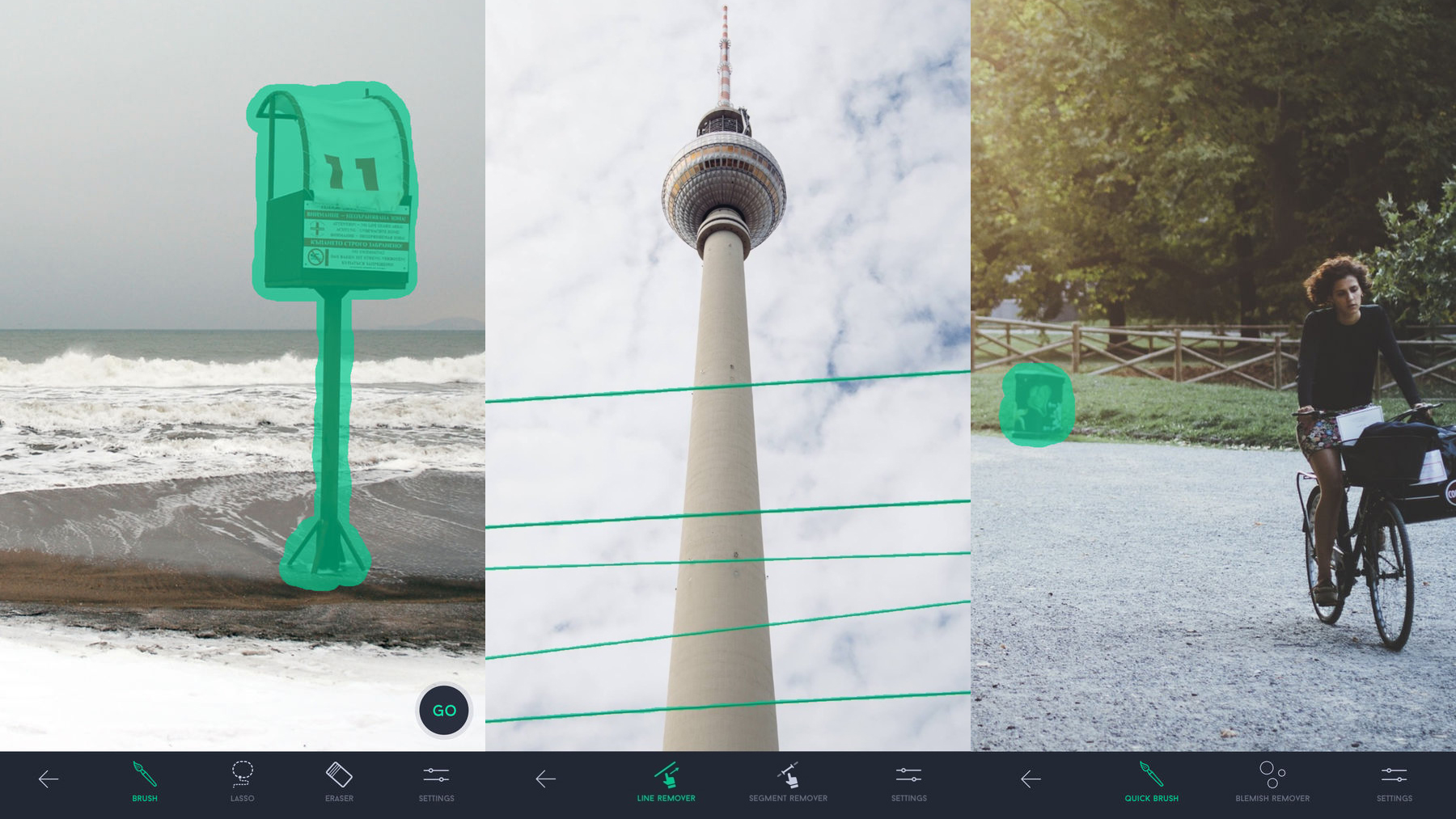
TouchRetouch
- $1.99/£1.99/AU$2.99
TouchRetouch can rid photos of unwanted elements. Such tools are commonplace – even in free apps like Snapseed – but TouchRetouch being dedicated to the task affords it focus; more importantly, the tools you get are really good.
Blemishes on faces can be removed with a tap. Larger objects can be painted out, whereupon the app fills in the gaps. Alternatively, you can clone from one part of the image to another. There’s also a line remover, which smartly makes short work of power lines and the like that otherwise carve their way across your pic.
Obviously, automation of this kind has some shortcomings – TouchRetouch can’t match desktop apps where you partake in painstaking, time-consuming, pro-level retouching. But for the average iPhone owner wanting to remove annoying things from pics, it’s well worth the small outlay.
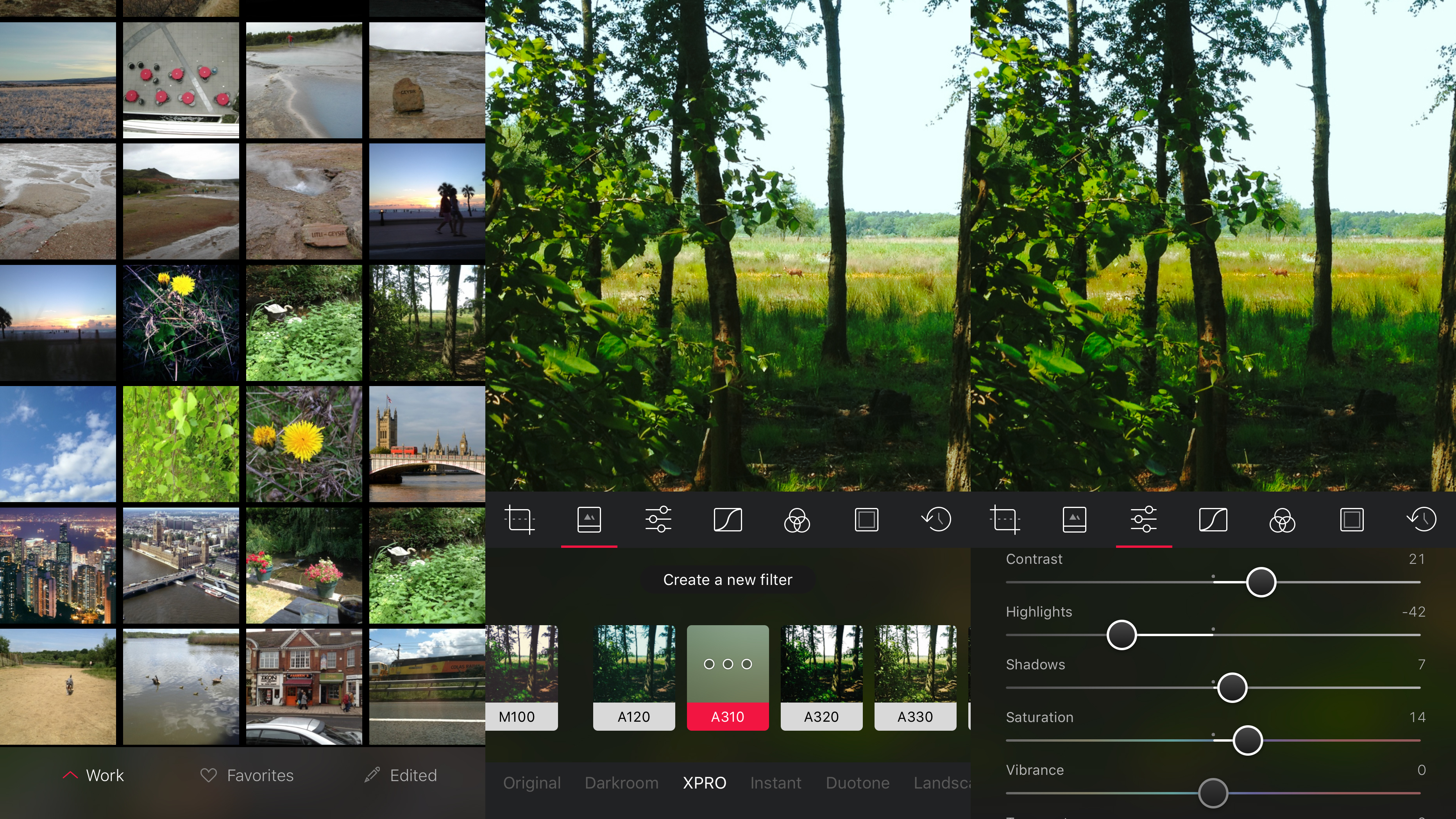
Darkroom
- Free + various IAP
Darkroom is yet another photo editor for iPhone, but just a few minutes in, you’ll likely decide it should be forever welded to your home screen.
The app is efficient, usable and sleek. Immediately, it invites you to delve into your on-device images. There’s no mucking around. Cropping tools and adjustments sliders bring out the best from what you shoot. Splash out on some IAP and you gain access to pro-oriented curves and color tools.
Edits are non-destructive, and you can save your work directly to your Camera Roll (in a manner that can later be reversed), or export copies. The process feels effortless
throughout, but pause for a moment and you realize how powerful Darkroom is. Only to be avoided, then, if you for some reason don’t want your photos to look better!
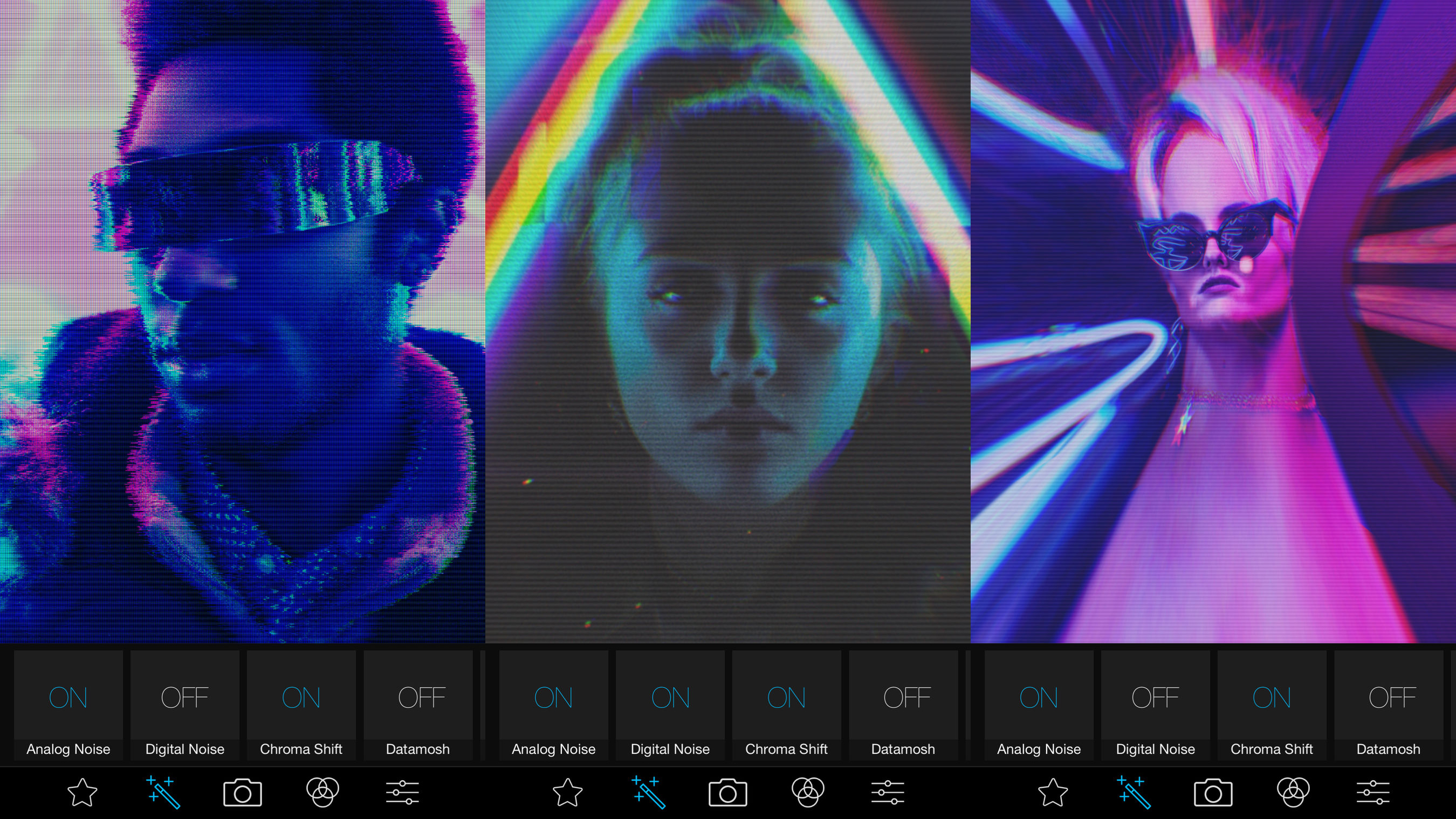
Glitch Art Studio
- Free + $4.99/£4.99/AU$7.99 IAP
Glitch Art Studio is an impressive and arresting photo effects app that brings texture and character to even the most mundane snap. This is achieved by way of slathering on all kinds of distortion effects, up to the point where you’re left with something that’s barely recognizable as a photograph.
We’re not kidding. The first few presets (available in the free app) give you an indication of what’s in store, making videos and stills alike look as if they’re being displayed on an ancient, very broken television. But further filters come across like you’re stuck inside a kaleidoscope or are having a full-on hallucinogenic episode.
If the presets don’t do it for you, you can make custom ones by working with a slew of settings; and when done, you can output your eye-popping miniature masterpieces as stills or videos.
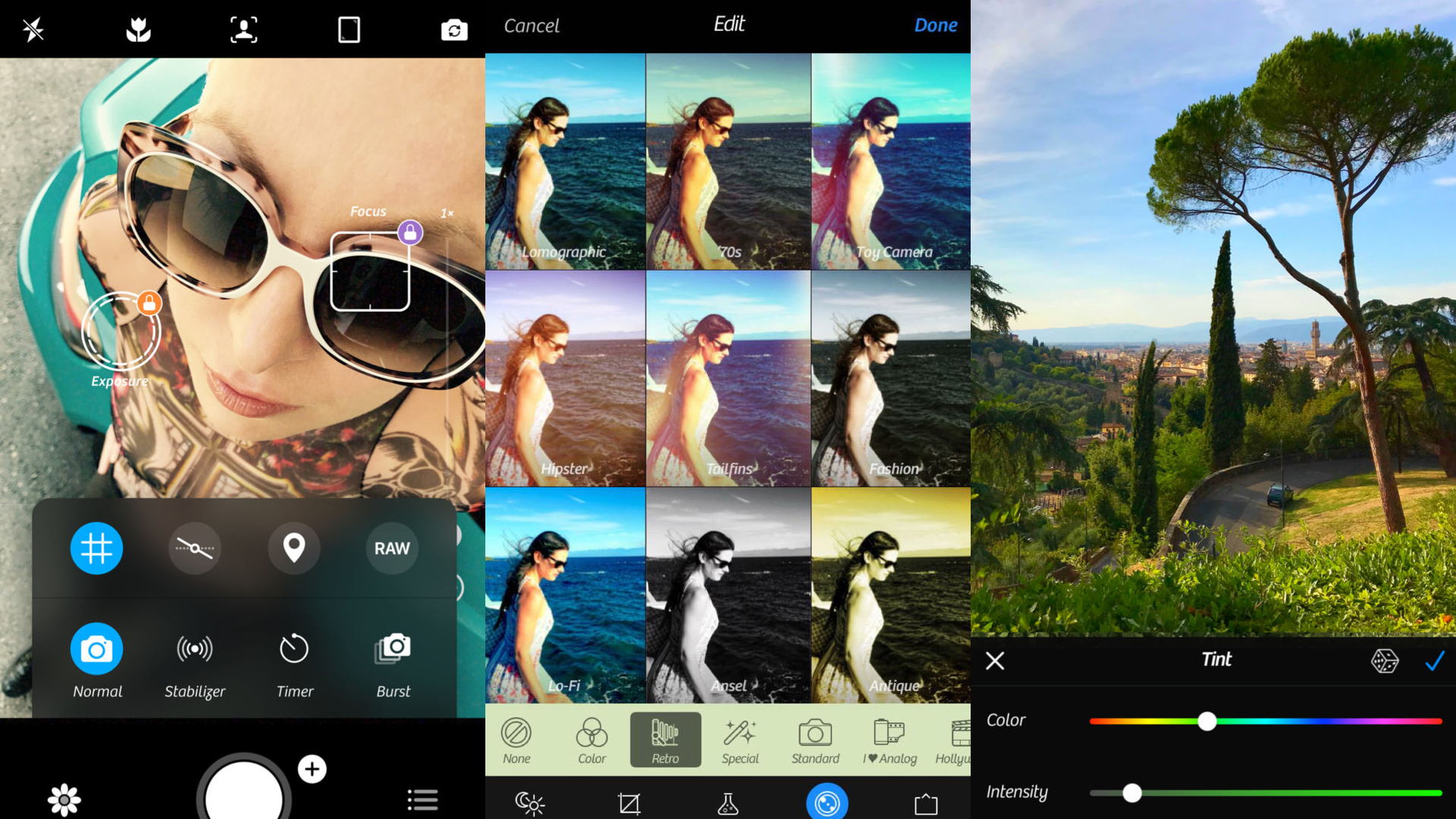
Camera+
- $2.99/£2.99/AU$4.49
Camera+ is a combined camera and editor. Despite the wealth of available options, the interface is initially quite minimal, with a modes strip across the top of the screen, a zoom slider, and the shutter. But tap the + button and you reveal further modes, including a timer, a stabilizer and smile detection.
Similarly, tap the viewfinder area and Camera+ enters a ‘pro’ mode, with manual controls, and scene options for shooting under specific lighting conditions. The interface is finicky compared to Obscura 2, but Camera+ is undoubtedly powerful.
Post-shooting, you can edit with adjustment tools, filters, and frames in the Lightbox. This all comes across as impressively friendly and straightforward, and although the range of tools doesn’t compare to Snapseed’s, it’s enough to keep you within the one app for the most part.
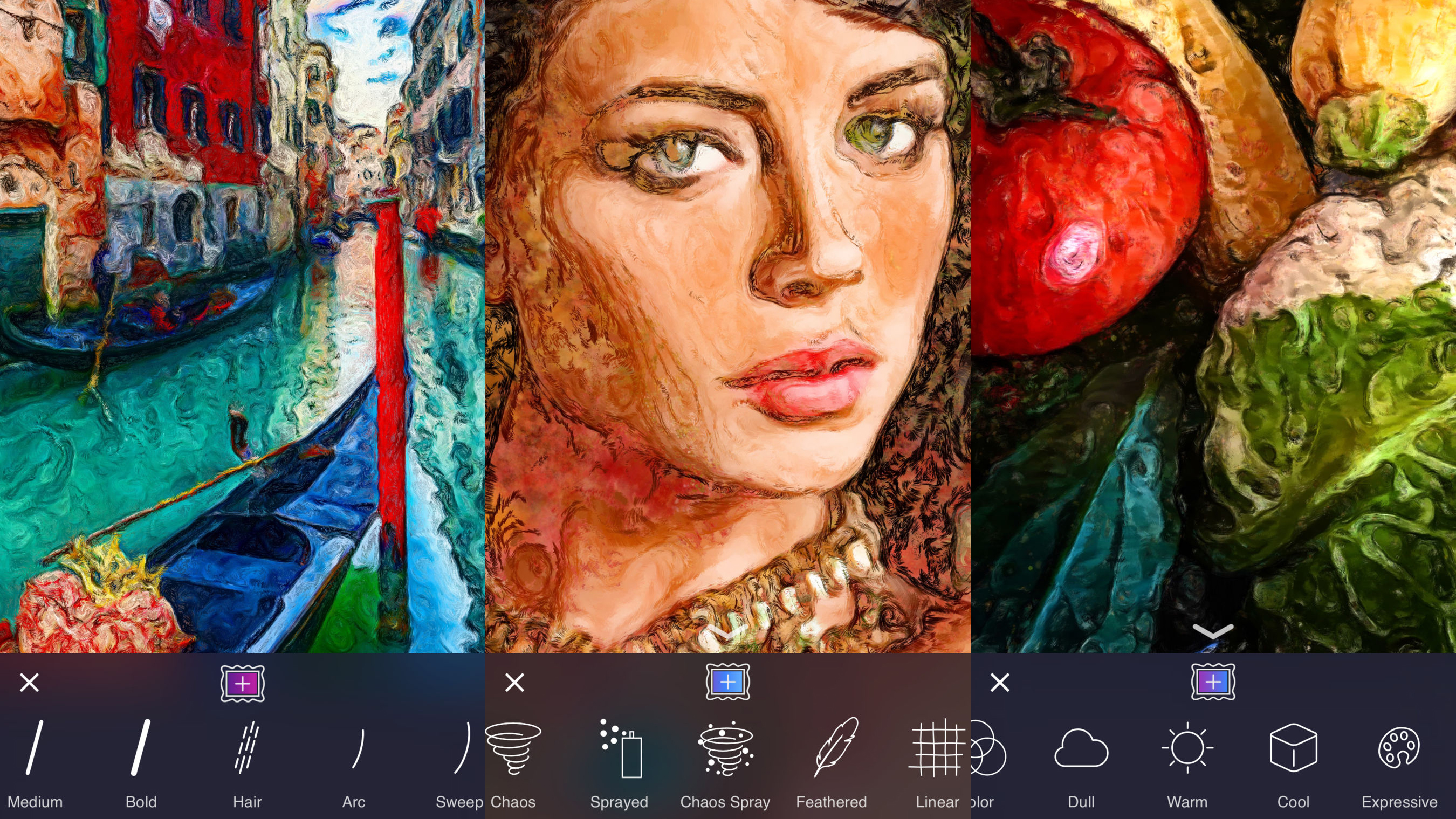
Oilist
- $2.99/£2.99/AU$4.49
Oilist is a generational art app. You feed it something from Photos, choose a style, and it gets to work, continually repainting your image. It’s like someone’s trapped a tiny van Gogh in your iPhone.
In fact, it’s like a slew of artists are stuck in your device, because Oilist has a massive range of styles to choose from, taking in everything from classic oil painters through to modern art. Although the app can be left alone in a dock, you can capture stills for posterity, or fiddle with settings (including brush strokes, mood, ‘chaos’ and gravity) to redirect the virtual artist.
Whether you interact or just sit back and watch, Oilist is mesmerizing – kind of like a painterly lava lamp, only what you see is based on one of your own cherished photographs.
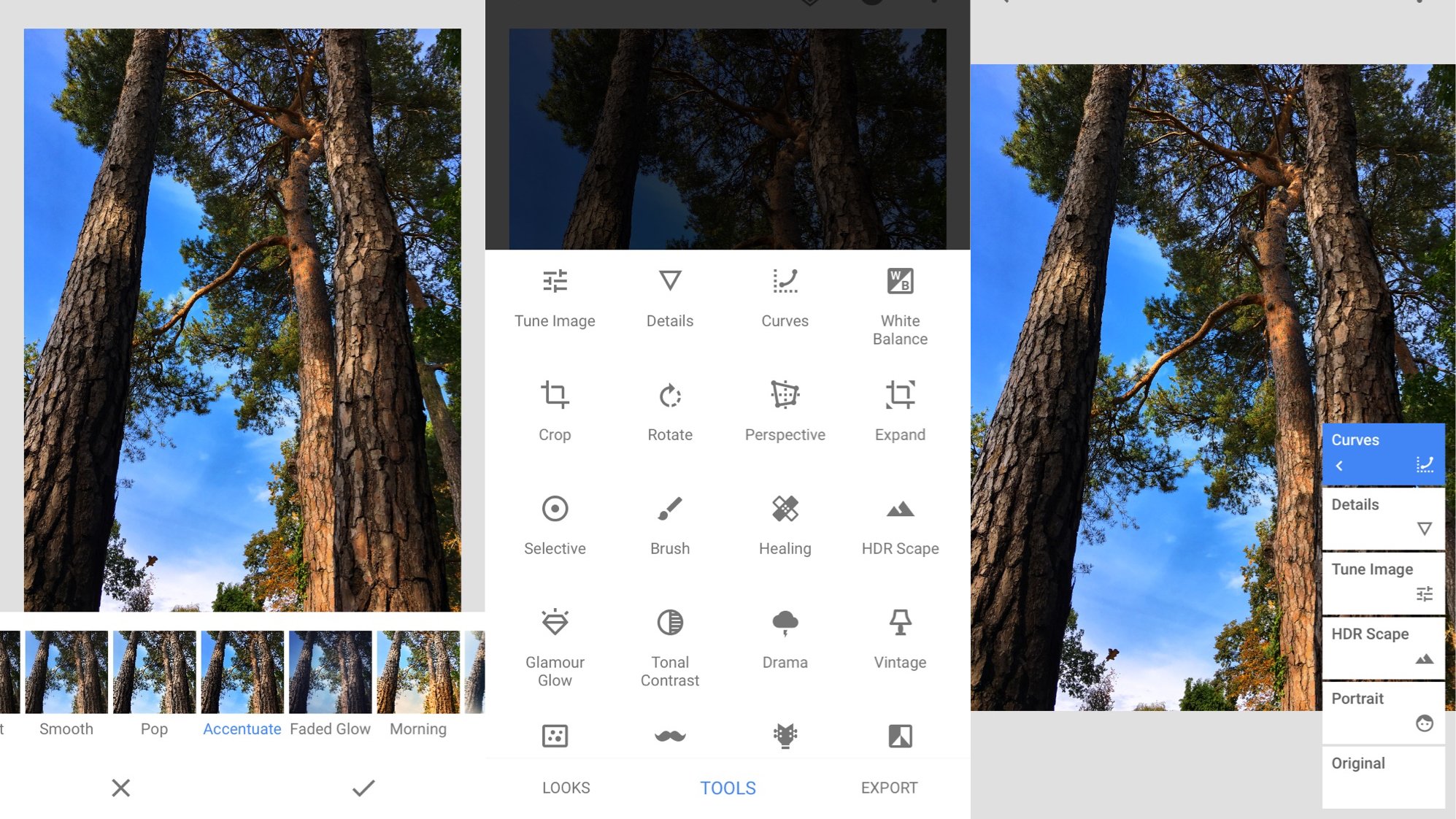
Snapseed
- Free
Snapseed is a free photo editor with a feature set that rivals the very best premium apps. It’s geared towards users of any level, from those who fancy applying quick filters to anyone who wants to dig deep into adjustments and powerful editing tools.
The range of options is dazzling, and the interface is smartly conceived. You can crop, make adjustments, and edit curves, all with a few swipes and taps. Often, vertical drags select parameters, and horizontal drags define an effect’s strength – tactile and intuitive. Even better, edits are non-destructive, and can be removed or changed at any point by accessing them in the edits stack.
As a final sign off, the app enables you to save any combination of adjustments as a custom preset, which you can then apply to any image in the future with a single tap. Superb stuff.
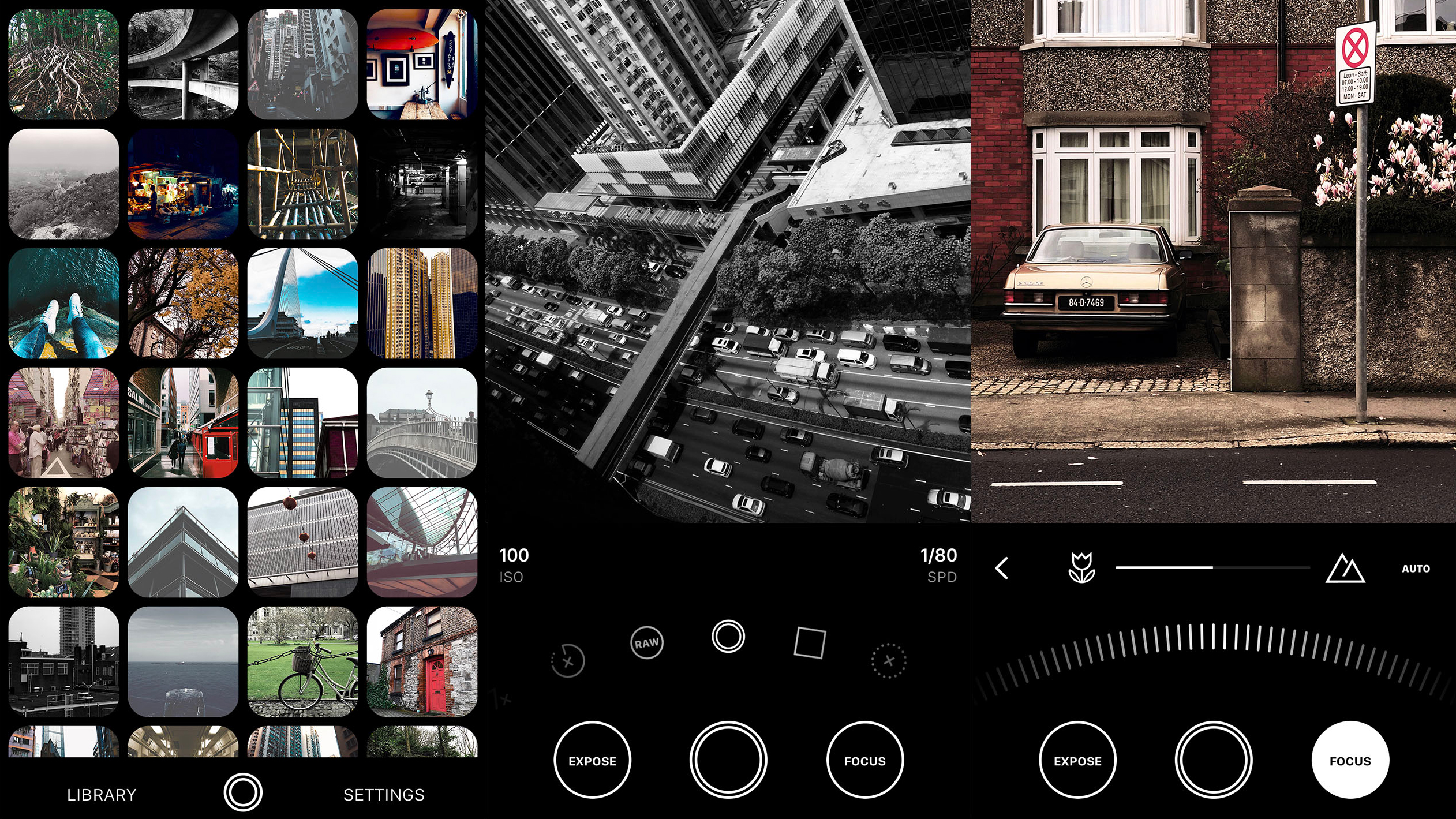
Obscura 2
- $4.99/£4.99/AU$7.99
Obscura 2 is the best manual camera app for iPhone. It achieves this not with a slew of features, but by providing an interaction model that’s so brilliantly conceived that you simply won’t want to use another iPhone camera.
Echoing manual cameras of old, everything is based around a contextual wheel that sits above the shutter. Initially, you use it to select a tool. When setting focus or exposure, the wheel enables you to make fine adjustments with your thumb. You get a real feel of precision control, with optional haptic feedback confirming your choices.
The app makes the odd concession to modern photography trends with a range of filters, but mostly Obscura 2 wants you to think a little more about what you’re snapping, all while breathing in its minimal yet approachable and deeply pleasing design.
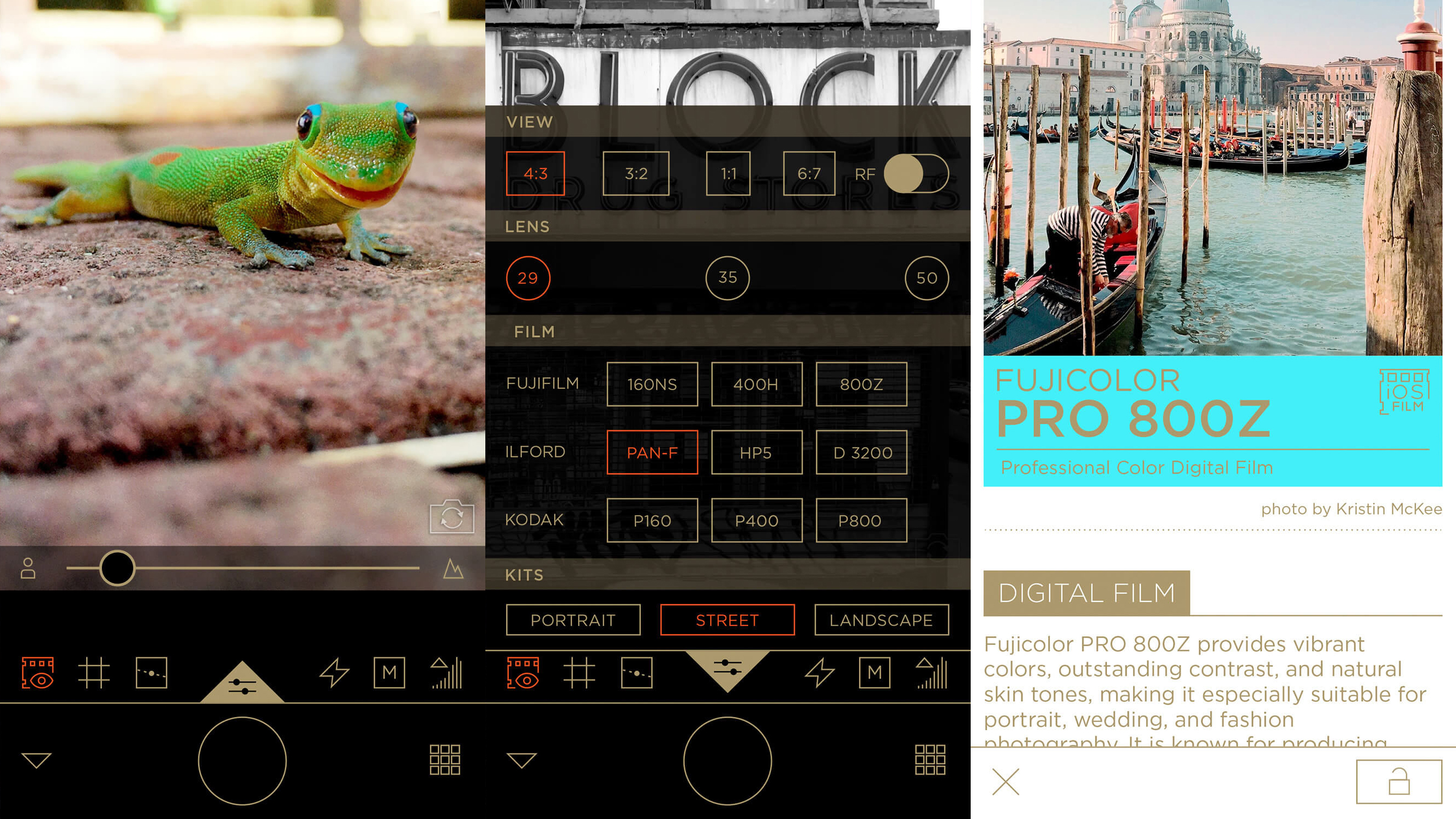
Filmborn
- $2.99/£2.99/AU$4.49
Filmborn is an app for camera obsessives – for those who revel in the joys of film, but come away unimpressed with apps that present an over-saturated, overblown take on old-school photography.
The interface is icon-heavy, but gives you fast access to tools that will improve your photography. There’s manual focusing, a range of grid overlays, and a blown highlights preview that outlines problematic areas of a potential snap.
The film filters will appeal to fans of real-world stock, subtly transforming images in a manner that’s pleasingly realistic. Filmborn even educates you regarding when’s best to use each one. The app also includes basic editing functionality, although a key tool – curves – frustratingly sits behind IAP.
Despite that niggle, Filmborn is well worth checking out if you fancy fusing photography’s past with its present.
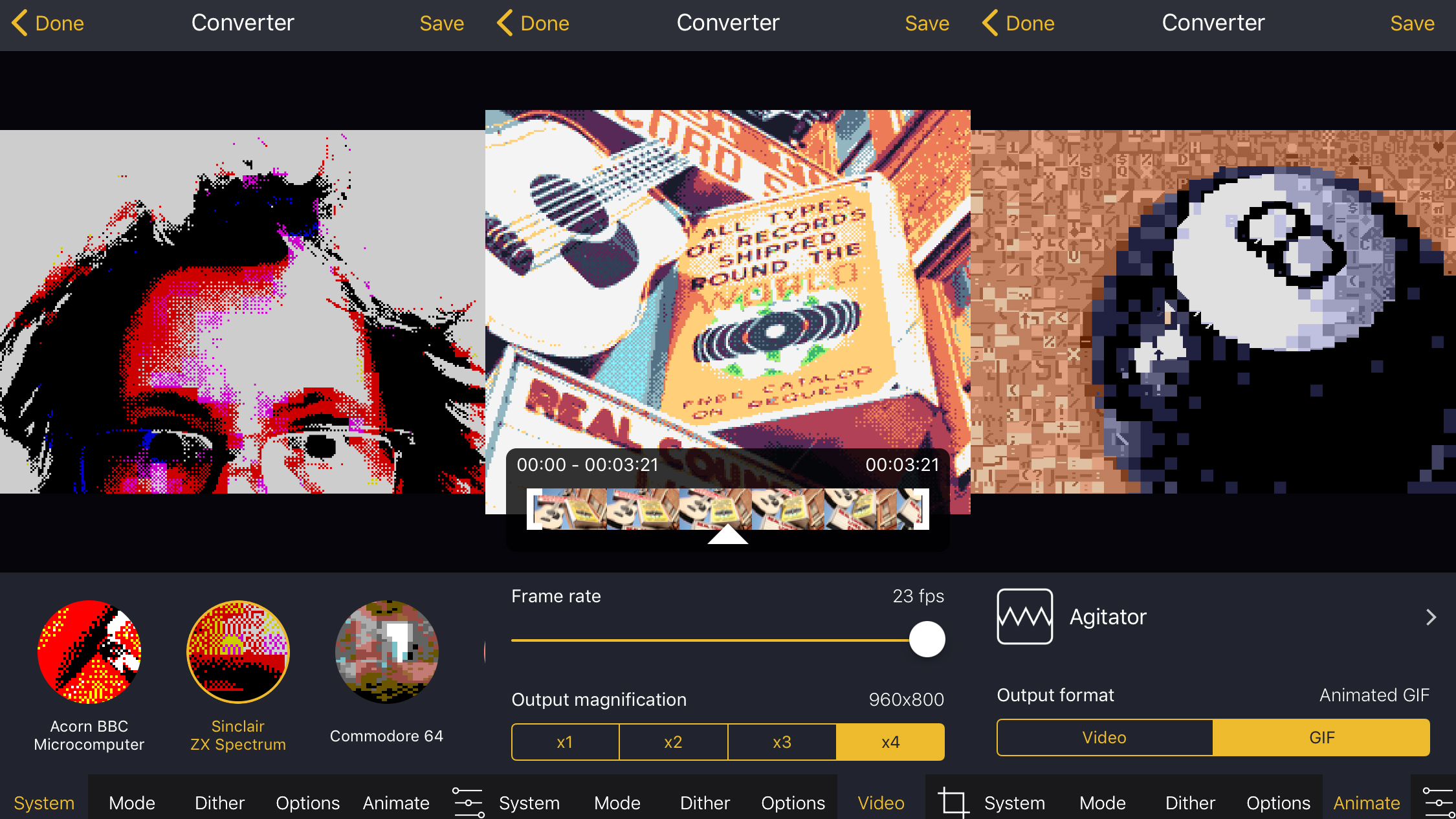
Retrospecs
- Free + $1.99/£1.99/AU$2.99
Retrospecs is a camera app that wants you to see the world as if it was being rendered by ancient computing and gaming hardware. Load a photo – or take one using the app – and you can select from a wide range of systems, such as the Game Boy, Commodore 64, and original Mac.
But this isn’t just a single-tap filter app for aficionados of pixel art. You can adjust dither, image corruption, and virtual CRT distortion. You get animation effects and video support. And should you get fed up with the included emulated systems, you can even make your own.
So whether you believe all your photos should look like an eight-bit video game or want to add a crazy glitch sequence to your next YouTube video, Retrospecs fits the bill perfectly.
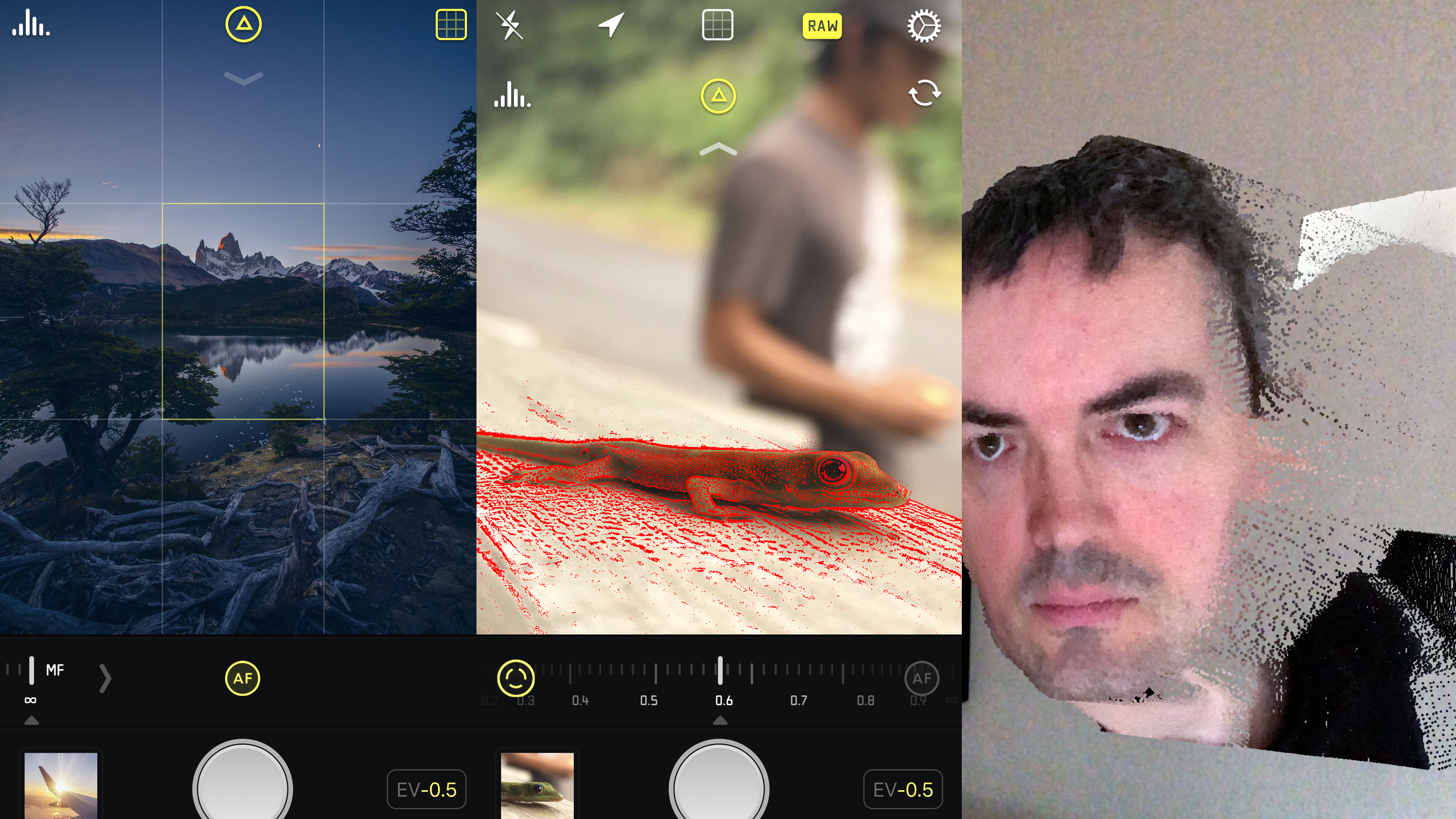
Halide
- $5.99/£5.99/AU$9.99
Halide wants you to focus on deliberate, thoughtful photography. Its creator has remarked that many camera apps now have interfaces like airplane cockpits, and Halide was stripped back accordingly.
That’s not to say Halide is bereft of features, but those it has are all about taking better photos. You can adjust focus and exposure manually, and use ‘focus peaking’ to highlight areas of sharp contrast within the frame, and the grid overlay’s central rectangle turns yellow when your phone is held straight.
If you have a modern iPhone, Halide offers a groundbreaking depth mode with ‘depth peaking’ and a depth map preview. You can also view portrait photos in augmented reality.
The net result of all this is a premium camera app that feels like a professional tool – money well spent if your idea of photography isn’t based around filters and stickers.
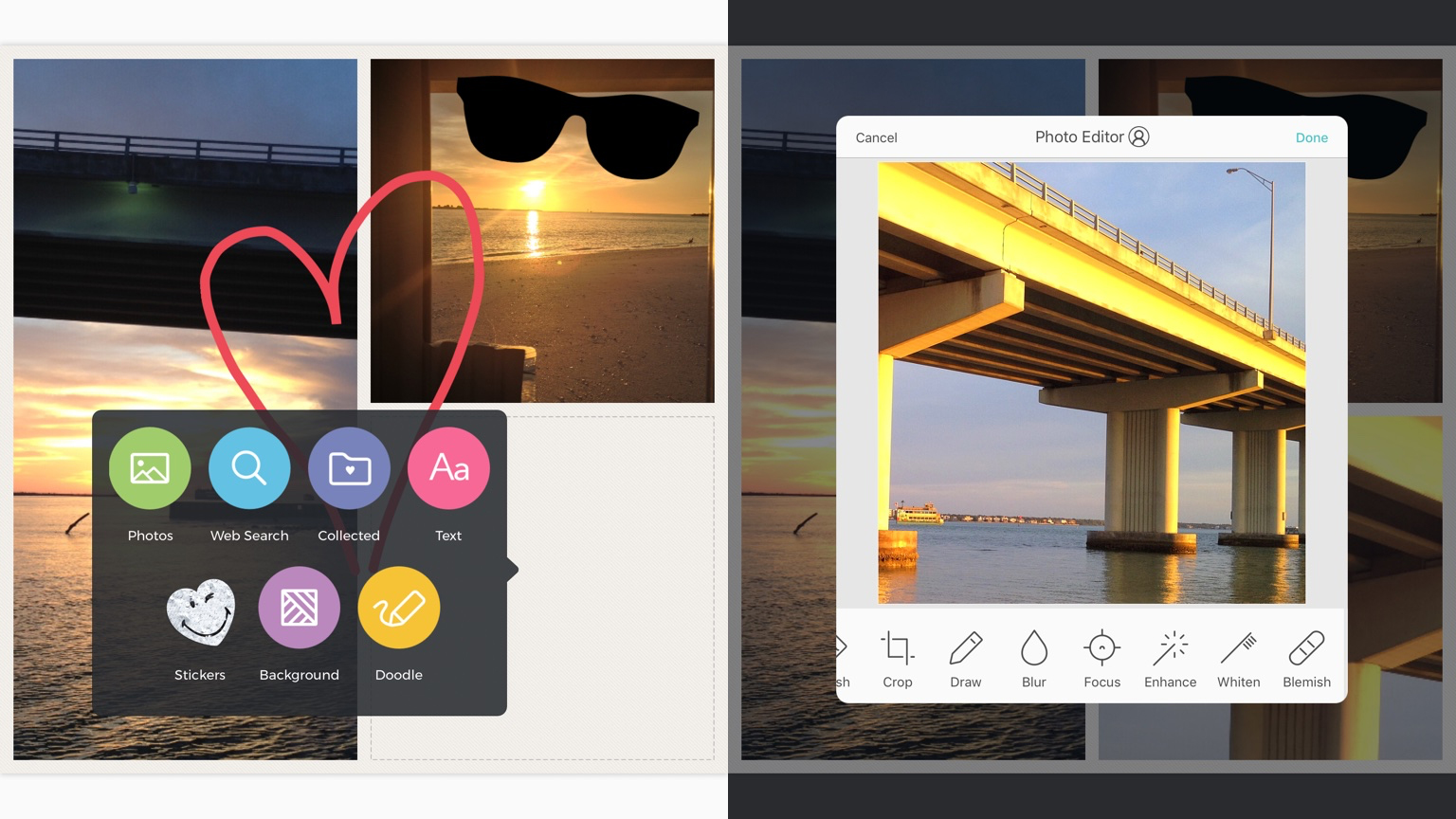
Pic Collage
- Free + $1.99/£1.99/AU$2.99 IAP
Pic Collage offers ways to quickly turn some photos into something special, and the best mode is Grids. You select some images, which Pic Collage automatically drops into a grid layout. If you’re not keen on what you get, you can choose something different, add a background, or manually fiddle with the dividers.
Double-tap an individual image and you get further tools, including an ‘effects’ area that’s not far off a fully-fledged photo editor. You can add stickers and text to your masterpiece, and even doodle over the top of everything. If you fancy something more structured, the Cards mode offers predefined card layouts, and Freestyle lets you go entirely freeform.
Everything can be tried entirely for free, but exports have watermarks. Be rid of those for a one-off IAP that’s very much value for money.
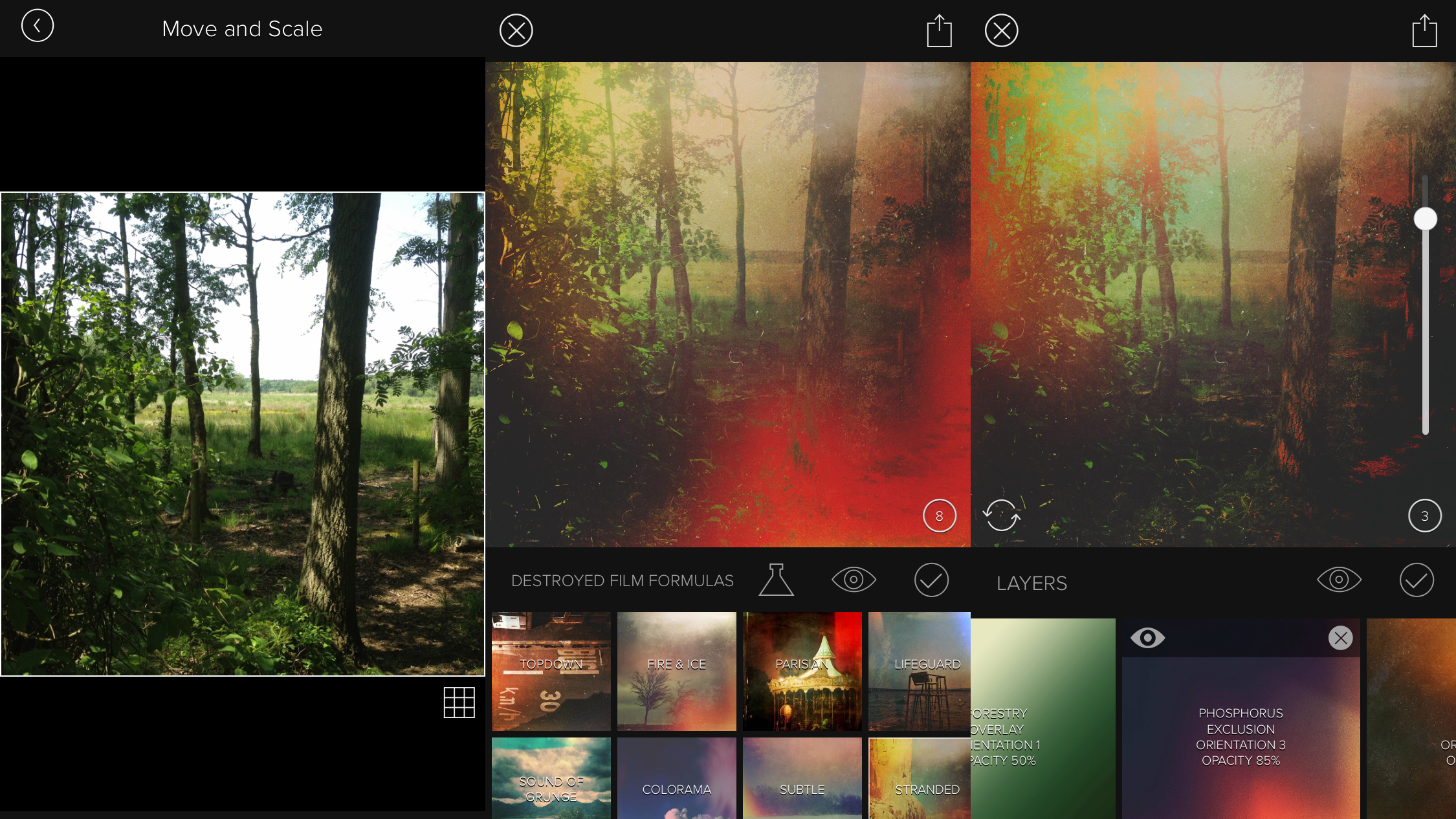
Mextures
- $1.99/£1.99/AU$2.99
Modern iPhones have some seriously impressive camera hardware, and are capable of taking clean, vibrant shots. So it’s perhaps no surprise that iPhone users are often hell-bent on slathering said images in filters and messing them up.
Mextures is a decidedly extreme example, providing a theoretically unlimited number of layers to play with, each of which can have some kind of effect applied. These include grit, grain, light leaks, gradients, and more.
Because each layer can be fine-tuned in terms of opacity and blend mode, you can get anything from subtle film textures to seriously eye-popping grunge effects.
Hit upon something particularly amazing and you can share your ‘formulas’ with other people. Or if you’re in need of a quick fix, you can grab something that’s already online to overhaul your snaps.
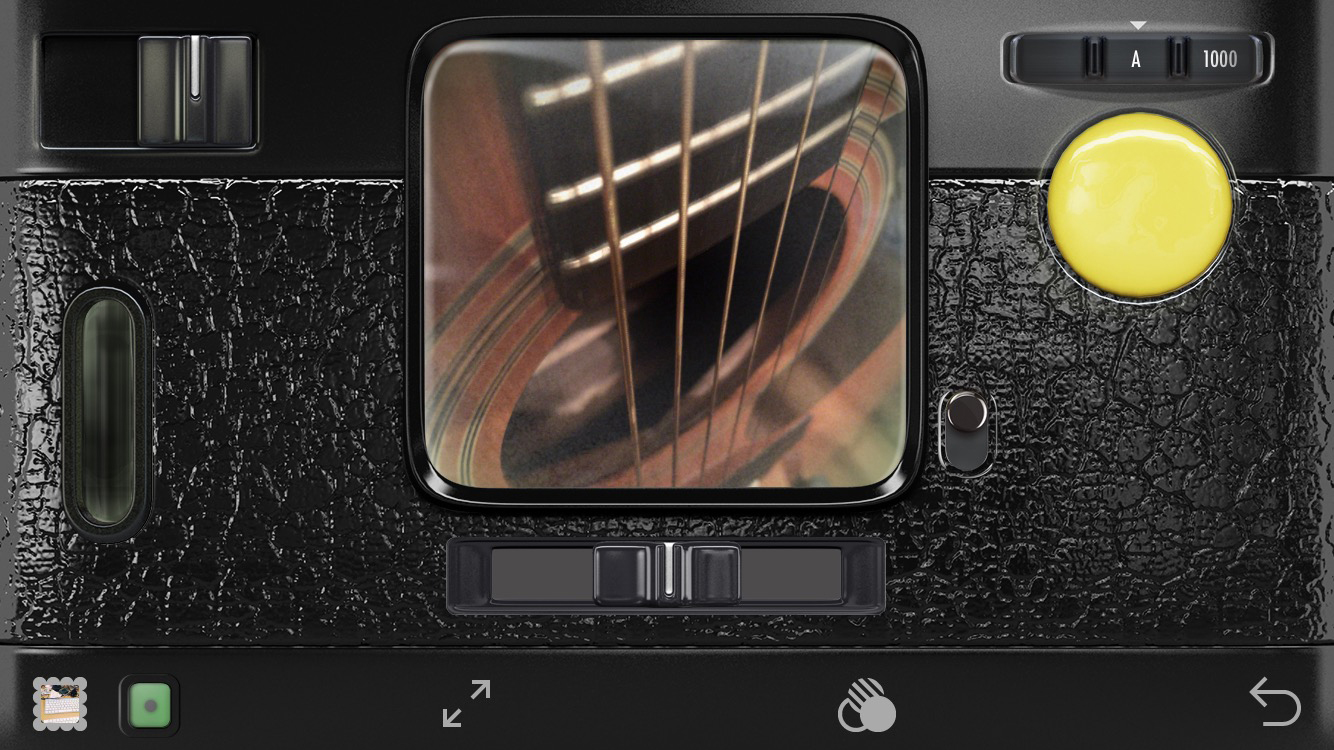
Hipstamatic
- $2.99/£2.99/AU$4.49
There are two sides to Hipstamatic. In its ‘native’ form, the app apes old-school point-and-click cameras. You get a tiny viewport inside a virtual plastic camera body, and can swap out lenses, film, and flashes, along with messing about with multiple exposures and manual shutters. It’s pleasingly tactile and twangs your nostalgia gland, but feels a bit cramped.
If you’d rather use your entire iPhone display to show what you’re snapping, you can switch to a ‘pro’ camera mode. That’s closer in nature to Apple’s own Camera, but with Hipstamatic’s huge range of rather lovely filters bolted on – a great mash-up of old and new.
And if you’re wedded to Apple’s camera, Hipstamatic’s still worth a download, given that you can load a photo, slather it in filters, add loads of effects and bask in your creative genius.
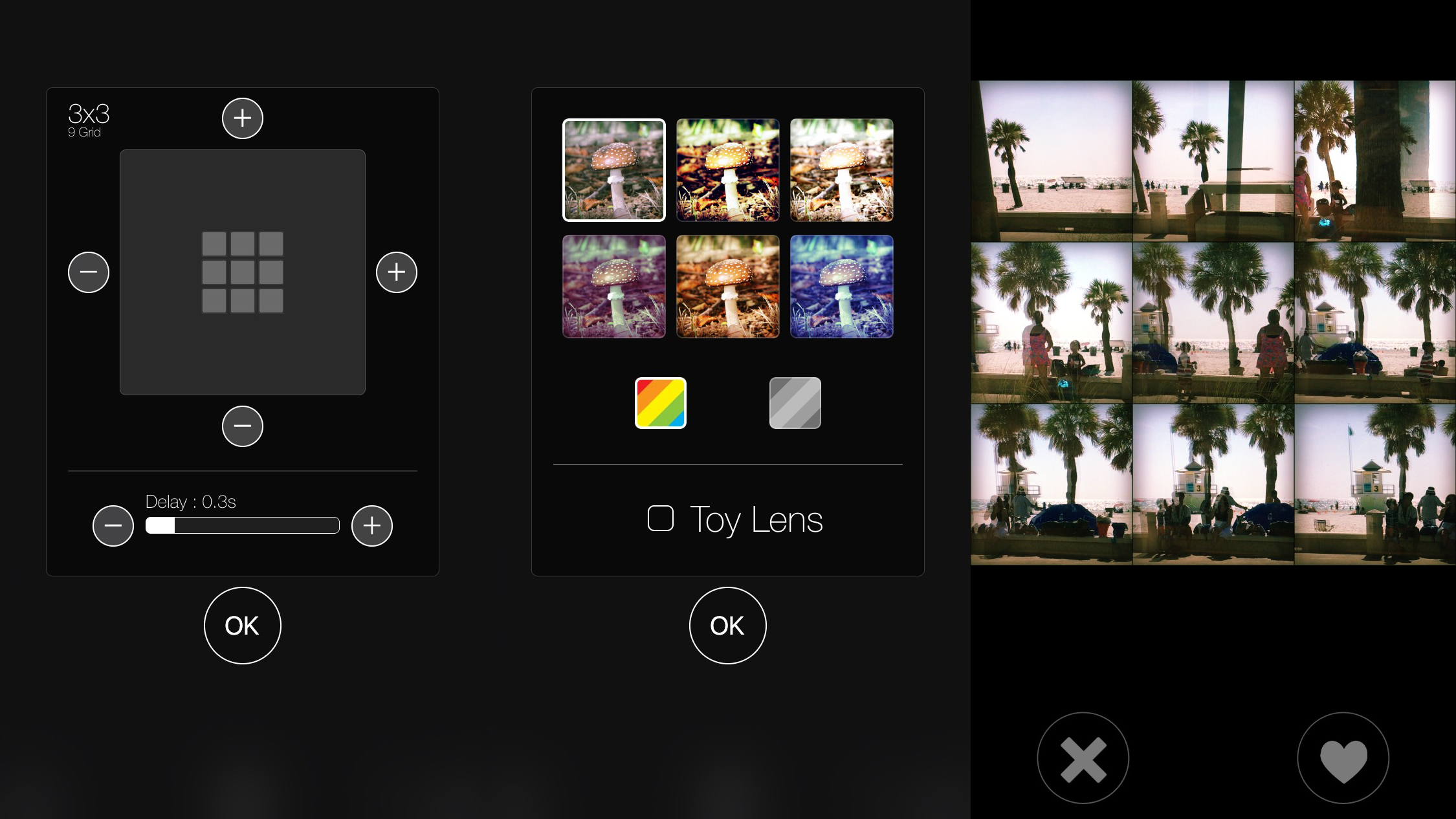
SoSoCamera
- $0.99/99p/AU$1.49
Apple offers a burst mode when you hold down the shutter in its camera app, but this is for very rapidly taking many shots in quick succession, in order to select the best one.
By contrast, SoSoCamera is about documenting a lengthier slice of time, taking a series of photos over several seconds and then stitching them together in a grid.
The grid's size maxes out at 48 items and can be fashioned however you like. It's then just a question of selecting a filter, prodding the camera button, and letting SoSoCamera perform its magic.
The resulting images, while low-res in nature, nicely capture the feel of time passing, in many cases better than video; although do experiment first with the filters, because some are a bit too eye-searing.
The best animation apps and video editors for iPhone
Our favorite iPhone apps for editing and creating videos, GIFs, Live Photos and cinemagraphs.
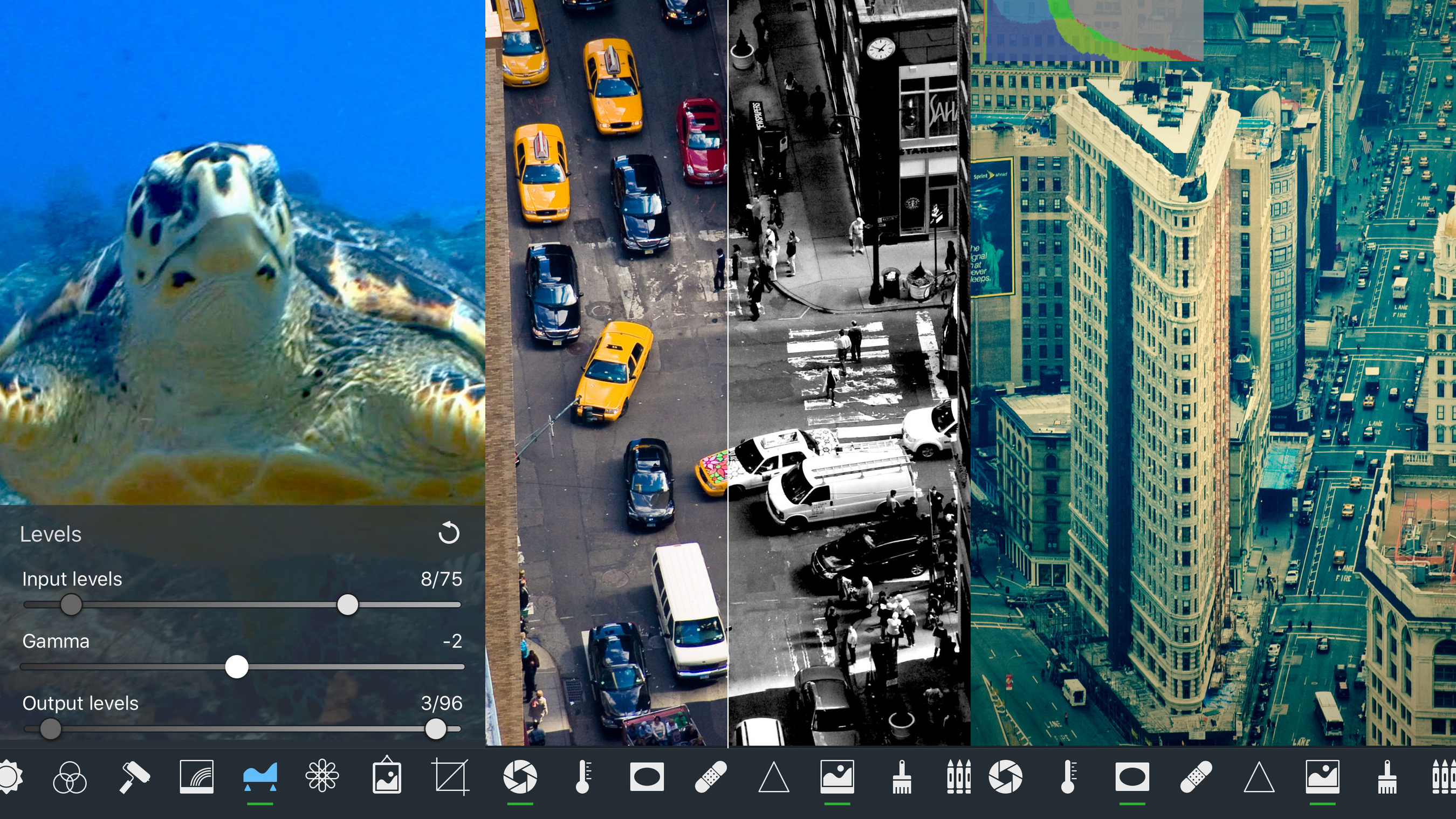
VideoGrade
- $5.99/£5.99/AU$9.99
VideoGrade is a color editor for videos. Its toolset gives you something akin to the color grading effects you find in modern TV shows and movies, along with the means to repair problematic footage.
Although primarily aimed at professionals, VideoGrade is easy to use – essentially selecting tools and dragging sliders. Adjustments are non-destructive, and green indicators denote tools you’ve already used, so you can go back and make changes.
There are a couple of issues. Effects are applied to a still frame, which is awkward to change. Also, full previews require rendering. But there’s an original/edit split view, favorite setups can be saved, and VideoGrade’s entire feature set can be accessed from within Photos. Given that this all happens on a phone, it’s hugely impressive. Just go easy on the ‘teal and orange’, eh?
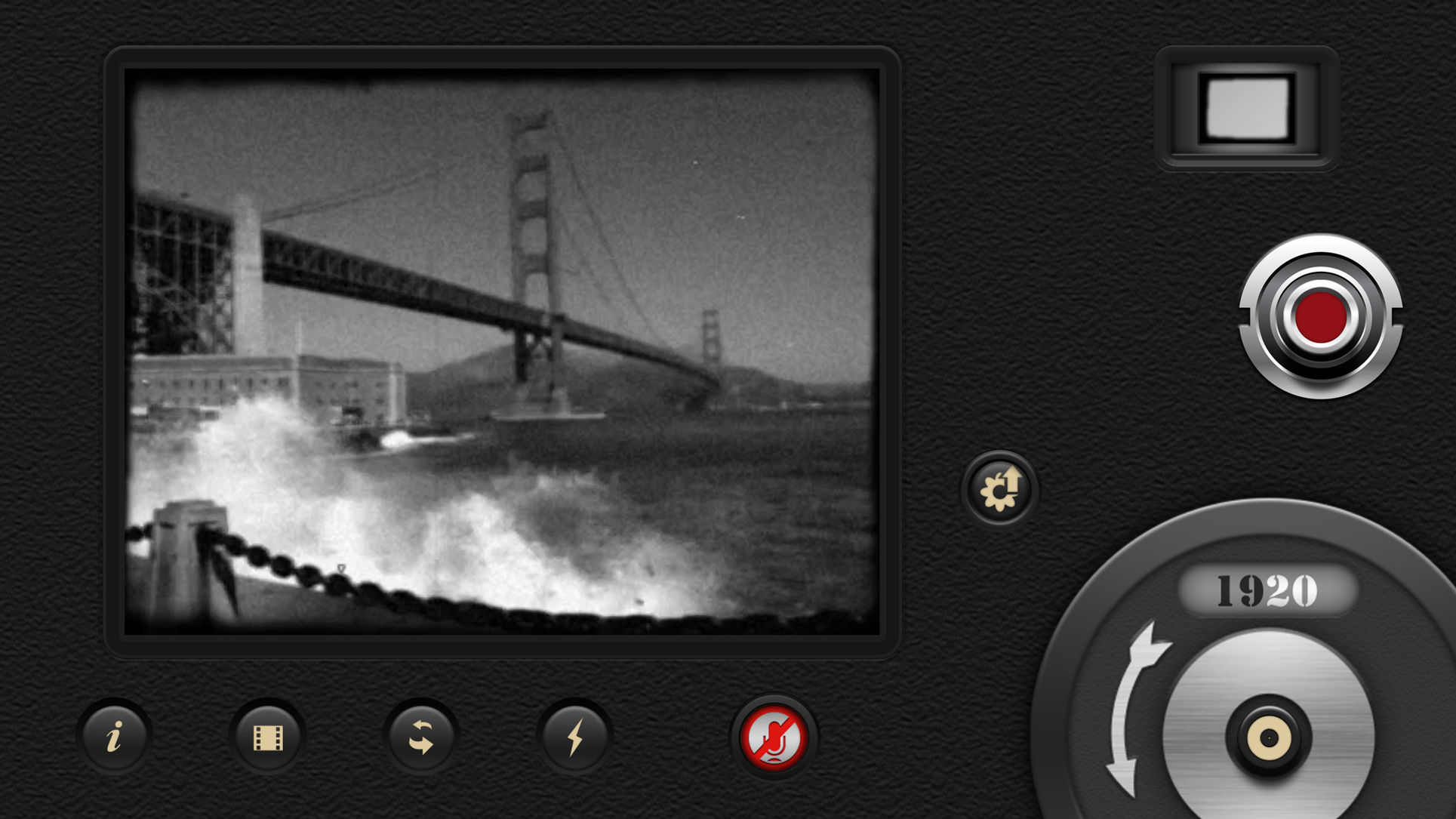
8mm Vintage Camera
- US$1.99/£1.99/AU$2.99
8mm Vintage Camera is an app dedicated to shooting authentic retro films. In other words, it transforms your otherwise pristine iPhone videos into something that could have been shot anywhere from the 1970s back to the 1920s.
This is more than a basic filters app, though. When shooting live, you get to see the effect, can swap out lenses to add spotlights, color fringing and other effects, and can even add jitter to imitate frame shakes.
Polishing off a superb app are features for working with existing video (which you ‘record’ into 8mm, in a manner similar to Apple’s Clips), and stitching together multiple shots, complete with titles and music. You get a couple of themes included in the purchase price, and several more are available via IAP.
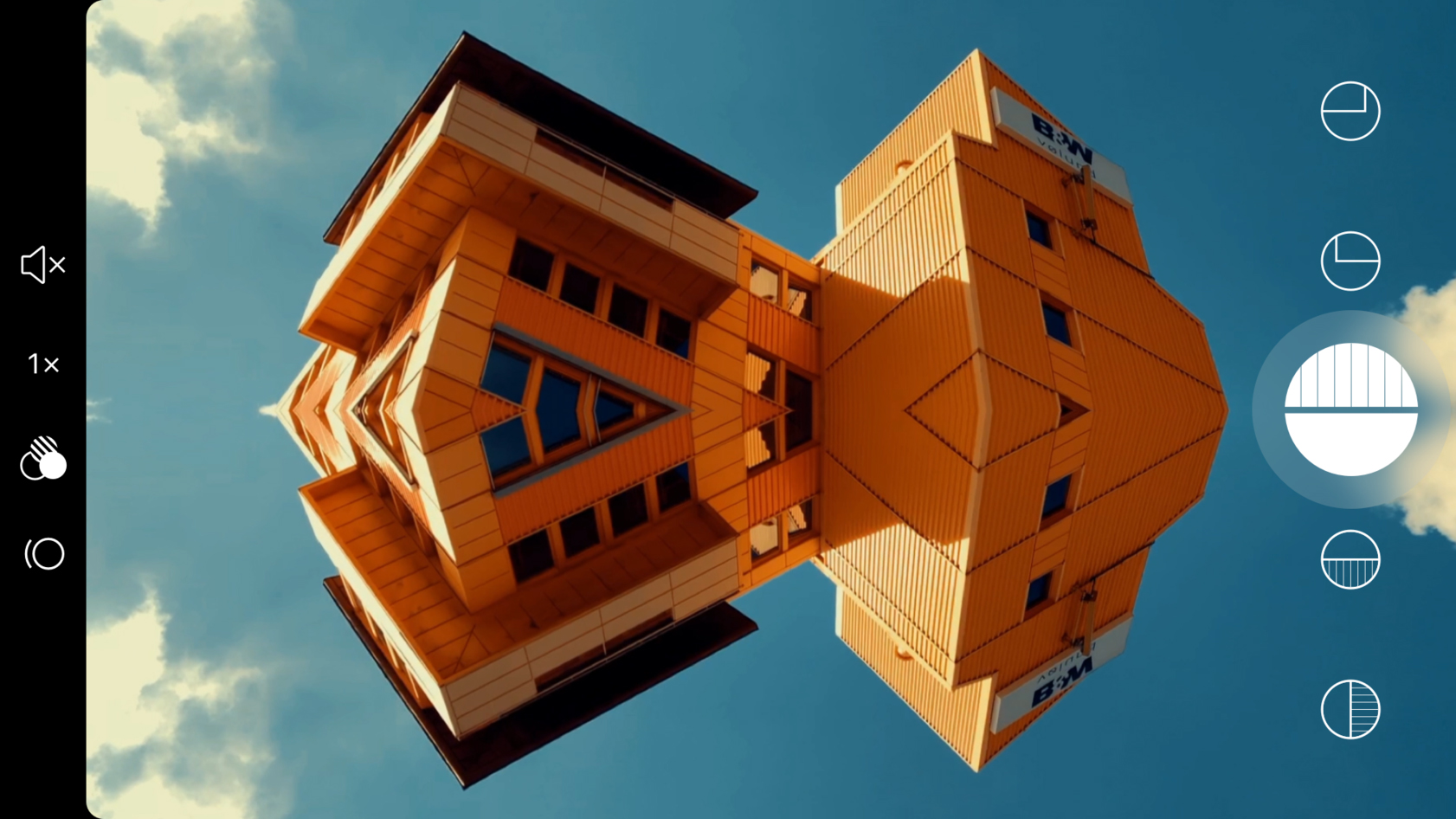
nception
- US$1.99/£1.99/AU$2.99
nception is a photo/video reality-bender of the opinion that everything looks interesting when you start mucking about with mirrors. It provides over 20 symmetric reflection presets, some carving the screen in half, and others being a mite more complicated.
You can shoot live stills or footage, and import existing content. When working with either, there are color filters to overlay; and with video, it’s possible to adjust the frame rate and speed. So if you want some slo-mo (rather than just standard speed) weirdness, that’s just a couple of taps away.
Naturally, nception isn’t the kind of filter app that you’ll wheel out for every occasion, but it’s great for experimenting with, and getting some weirdness into photos, especially when exploring cities and wanting to capture a unique take on local architecture.
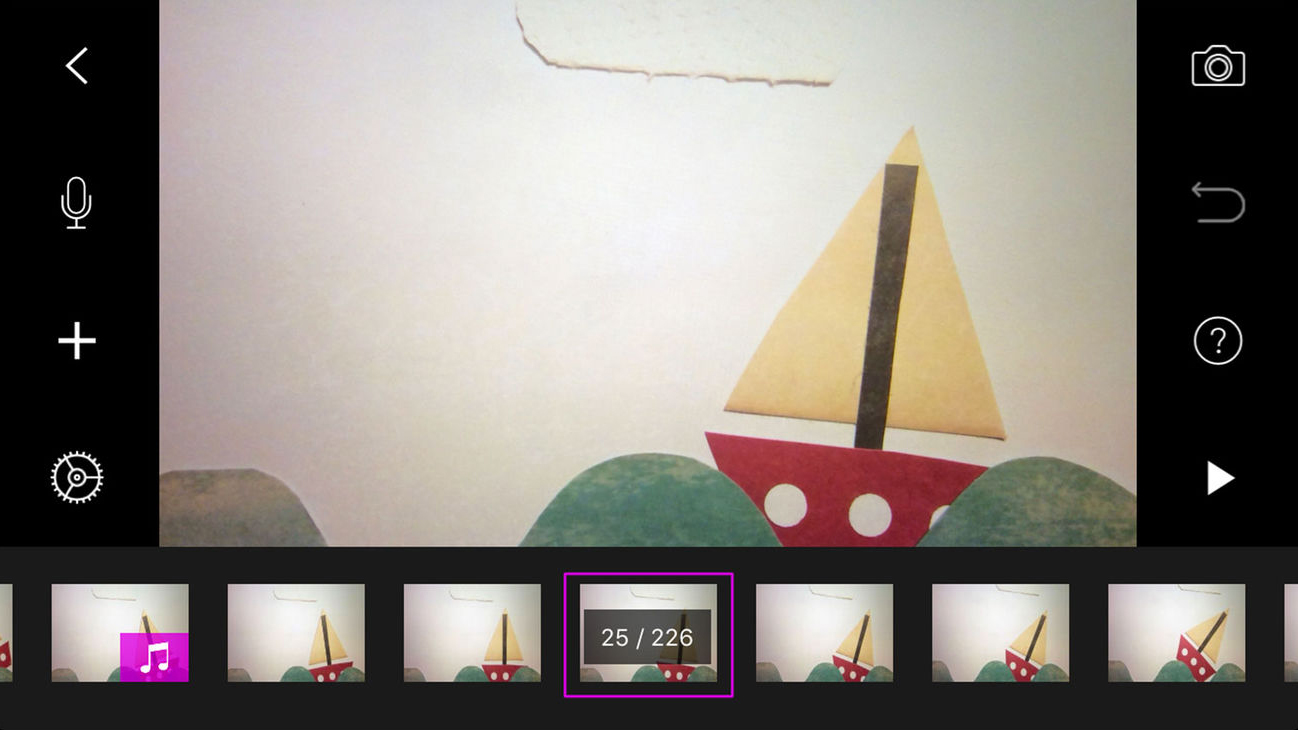
Stop Motion Studio Pro
- $4.99/£4.99/AU$8.99
Stop Motion Studio Pro is designed for people patient enough to craft stop-motion masterpieces. It’s a friendly app, but flexible too. You can shoot in-app to add new frames, add existing images from your iPhone, or import video, which is converted to a string of stills.
The editor is powerful: you can copy and paste frames; a Painter mode offers text, shapes and backgrounds; you can create custom titles; and it’s possible to import audio. Playback of audio is intelligent, continuing until completion (rather than just the end of the frame), allowing multiple effects to be overlaid.
The app overreaches with talk of rotoscoping – drawing over frames in the stype of A Scanner Darkly – but for everything else, this is ideal fodder for taking your first steps towards becoming the next Aardman or Ray Harryhausen.
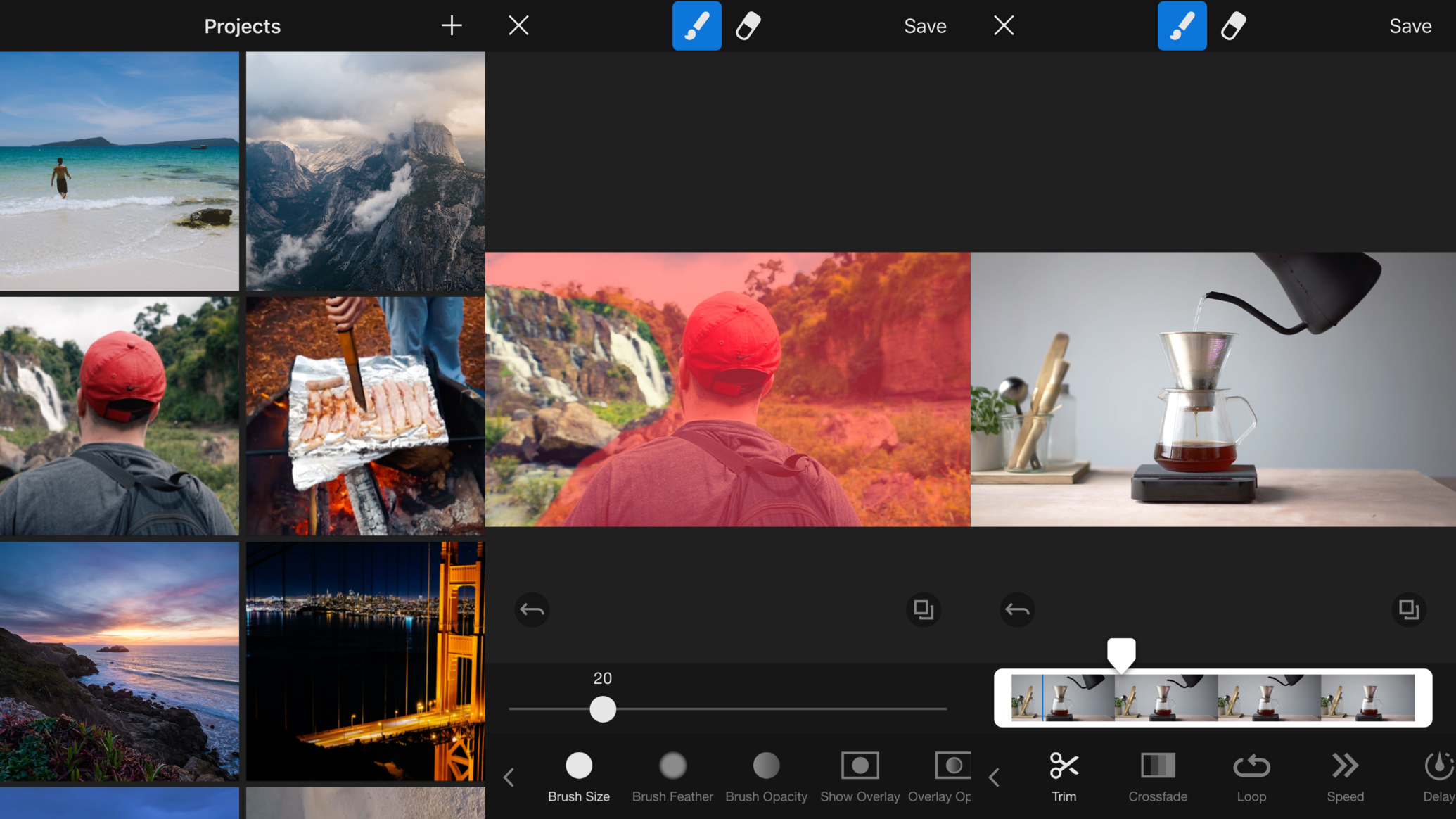
Cinegraph
- $1.99/£1.99/AU$2.99
Cinegraph is about using existing videos (or Live Photos) to create images that move. Areas selected by the user animate in an endless loop while the rest of the image remains static – a beguiling effect.
The selection of tools is small, but focused on the task at hand: basic adjustment options for your image, brush/overlay settings for outlining the part(s) of your image that will move, and the means to fine-tune the video output, for example to crossfade the end of the loop.
There’s no automated stabilization, which is a pity – you’re effectively restricted to videos or stills shot using a tripod with no wobble whatsoever. But with the right starting point, Cinegraph is capable of fashioning little slices of magic. And unlike much of the competition, there’s no messing about with subscriptions or IAP for ongoing use or removing watermarks.
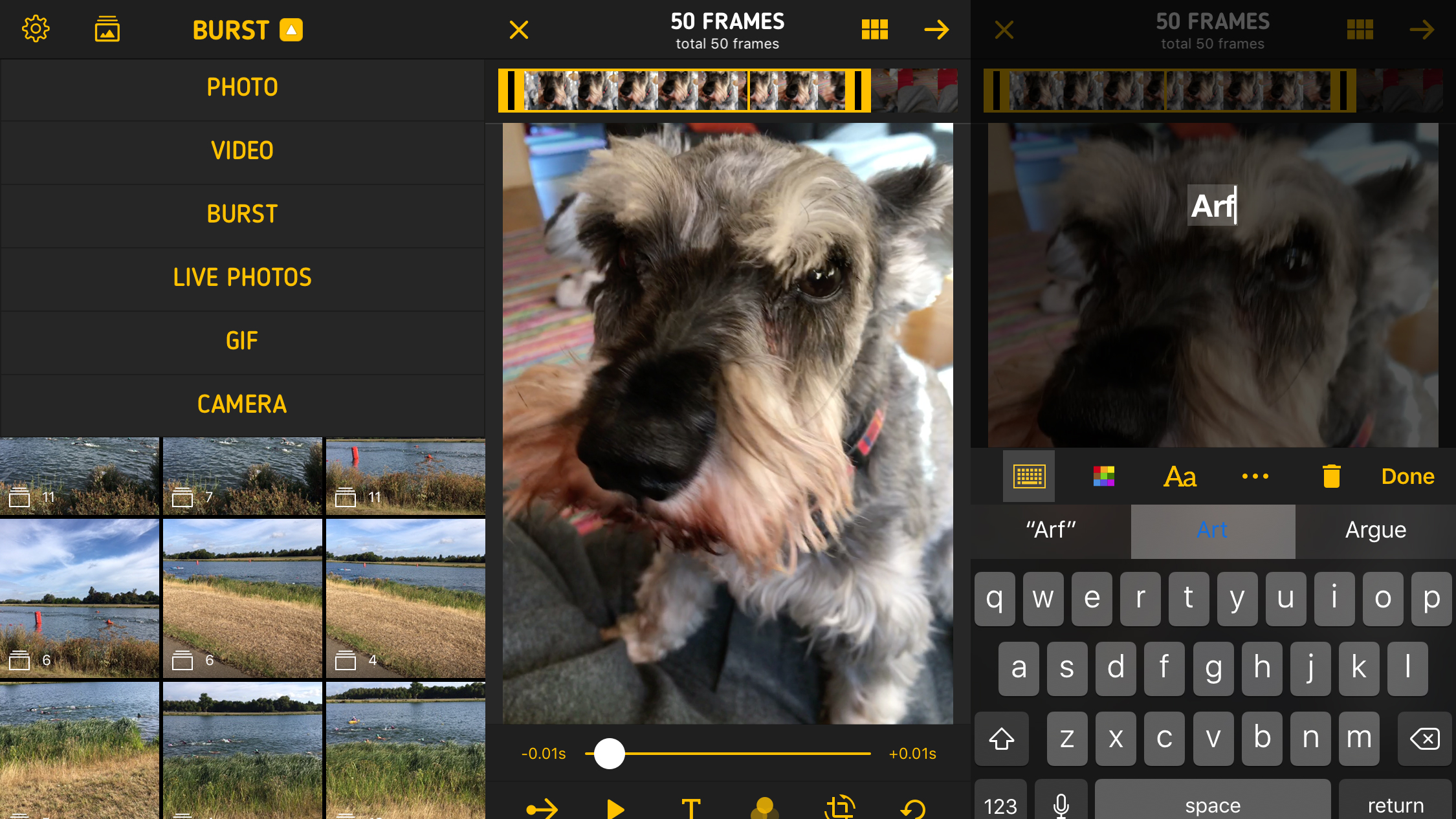
ImgPlay
- Free + $2.99/£2.99/AU$4.49 IAP
A playground for GIFs, ImgPlay aims to bring life to whatever you capture with your iPhone – or to fine-tune the motion within those things that already move.
You start off by loading pretty much anything from your Camera Roll: photos, videos, Burst mode images, Live Photos, or GIFs. With stills, you can select a number of them to stitch together, essentially making ImgPlay a kind of low-end stop-motion tool.
But it’s with Live Photos and Burst shots that ImgPlay really becomes interesting. You can take the video or sequence of images your iPhone shoots, trim the result (including removing individual frames), add a filter and text, and then export the lot as a GIF or video.
For free, the app’s full-featured, but buy the small IAP and you get more filters, no ads, and no watermark on export.
The best art and design apps for iPhone
Our favorite iPhone apps for painting, drawing, sketching, design and animation.
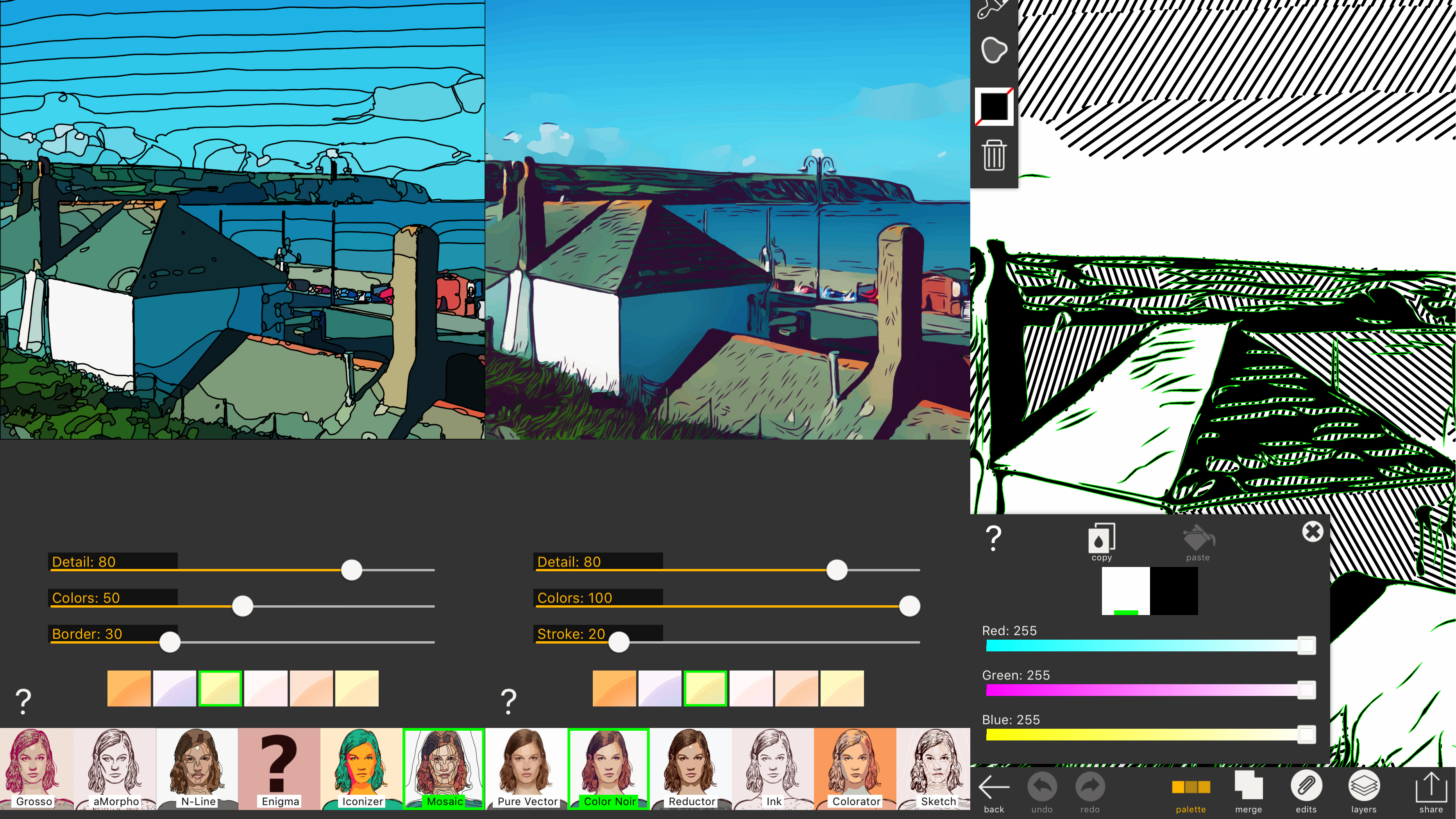
Imaengine Vector
- Free + $2.99/£2.99/AU$4.99
Imaengine Vector is a camera app/photo editor. Take a shot – a selfie, your lunch, or an amazing landscape – or load an image, and it’s turned into a vector drawing. That in itself perhaps isn’t anything special, but what else the app does very much is.
First and foremost, some of the predefined filters are spectacular. Even the dullest of pics when fed through this app can end up looking like art. The settings can be tweaked, too, including detail levels, colors, and line thickness. If that’s not enough, tap the Editor button and you end up in a full-fledged vector graphics editor.
The interface is a bit messy on iPhone, and the editing section might baffle. But even for the filters, it’s worth the outlay, and for illustrators happy to tweak the app’s output, it’s a bargain.
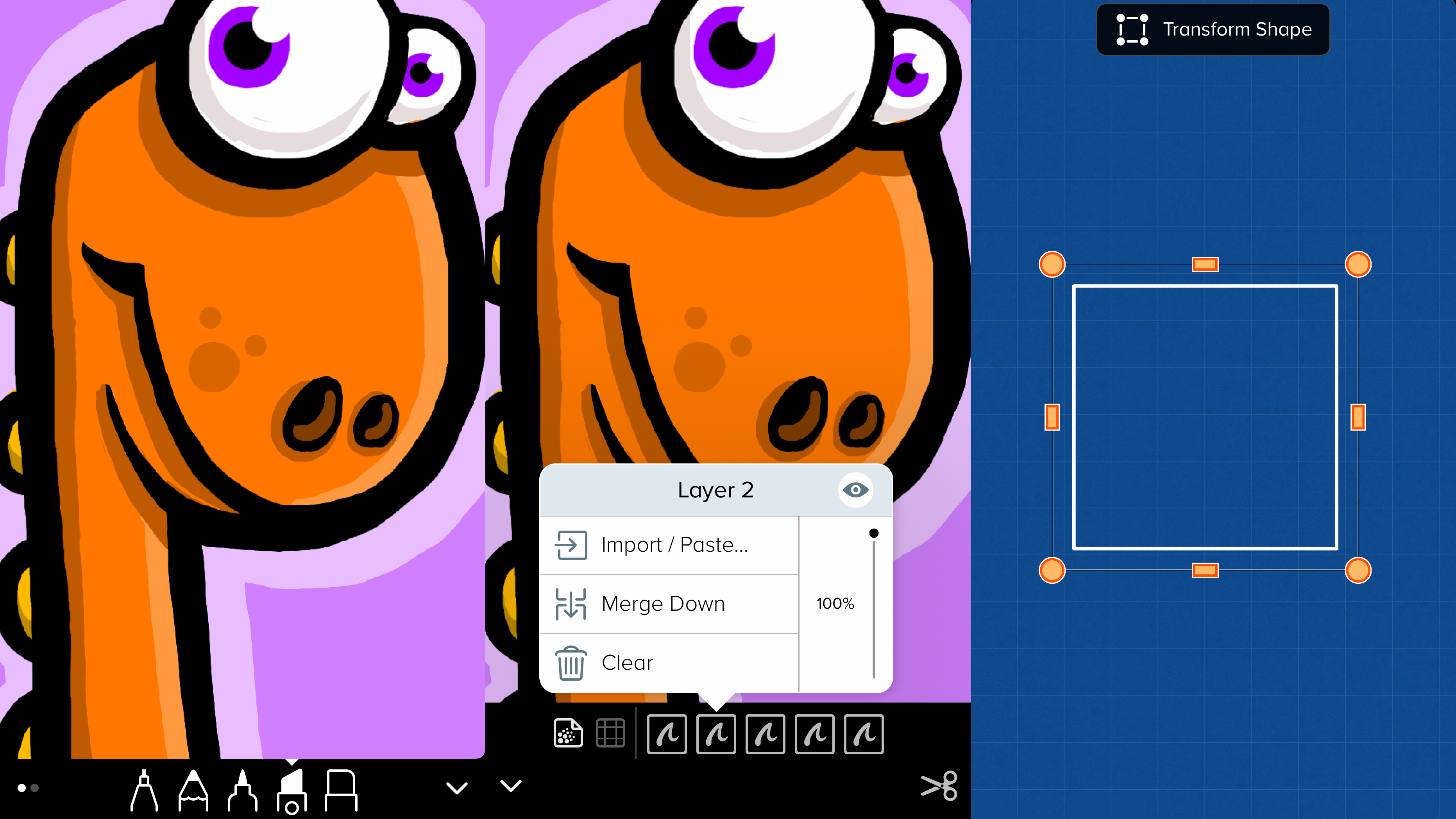
Linea Go
- $2.99/£2.99/AU$4.49
Linea Go is designed to make sketching on iPhone effortless. It does this by way of a friendly, stripped-back interface – although one that doesn’t lack for features.
The base of your image can be a paper texture or a grid. Atop that you get five layers, offering great scope for complex compositions – or to isolate one component while drawing another.
When sketching, there’s a pencil and a few pens, a flood fill that can also be used for creating arbitrary blocked-in areas, and Zip Shapes. That last feature recognizes rough shapes you draw, and tidies them if you keep your finger pressed down. They can then be rotated, moved, and scaled.
Although the end results look a bit digital, Linea Go is elegant and efficient, and iCloud cross-device sync makes it a smart choice for iOS-based sketching.
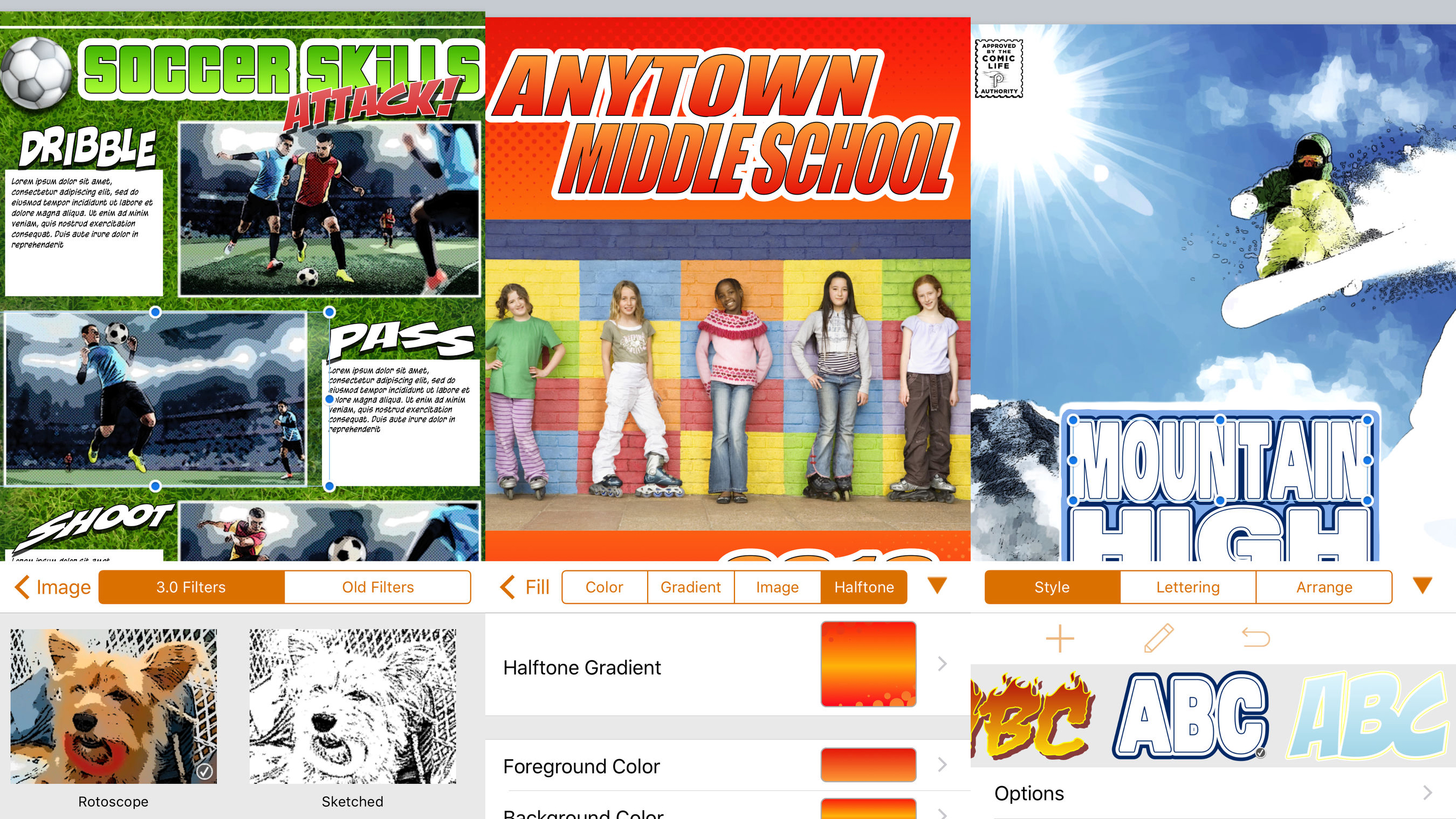
Comic Life 3
- $4.99/£4.99/AU$8.99
Comic Life 3 is for creating comics from photos and other images on your iPhone. Although it works best on the bigger screen of an iPad, it’s surprisingly usable on an iPhone, not least due to the sheer speed at which you can put together a great page (or, if you’re feeling ambitious, a full multi-page book).
Much of this is down to the app’s varied templates, which get you up and running in no time. You can quickly import pictures into frames, add speech bubbles and sound effects, and then export the lot to a variety of different formats.
Oddly, the one thing the app does badly is comic-style filters – you’re better off using Prisma for that. But for making custom comics from doodles or photos of amazing days out, Comic Life 3 can’t be beaten.
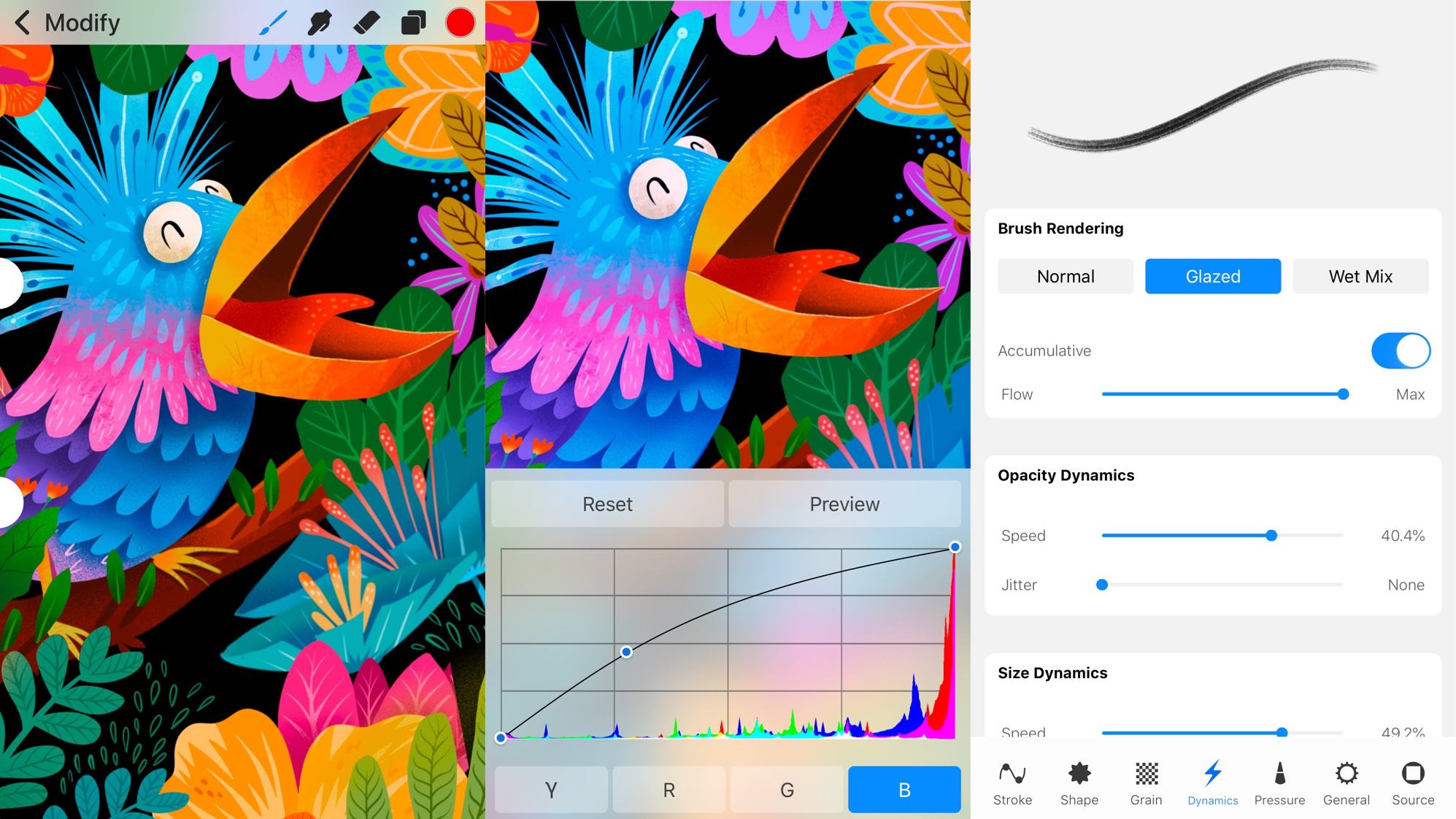
Procreate Pocket
- $4.99/£4.99/AU$7.99
Procreate Pocket is a great bet if you fancy dabbling in digital finger-painting. Whether you’re a novice scribbler or a jobbing artist, this app’s sleek interface wants to get out of your way and let you paint.
The toolbar that runs along the top of the display provides fast access to brushes. At the left of the screen are two sliders, for adjusting brush size and opacity. If you find them distracting, a four-finger tap puts you in full-screen mode, leaving you alone with your miniature masterpiece.
It all feels fluid and sleek, but there’s depth here too. A fantastic brush editor (including custom grain sources) unleashes all kinds of creativity, and the layers system provides scope for more advanced compositions. And when you get really good, you can share time-lapse recordings created automatically by Procreate Pocket, and await glory when a TV network comes calling.
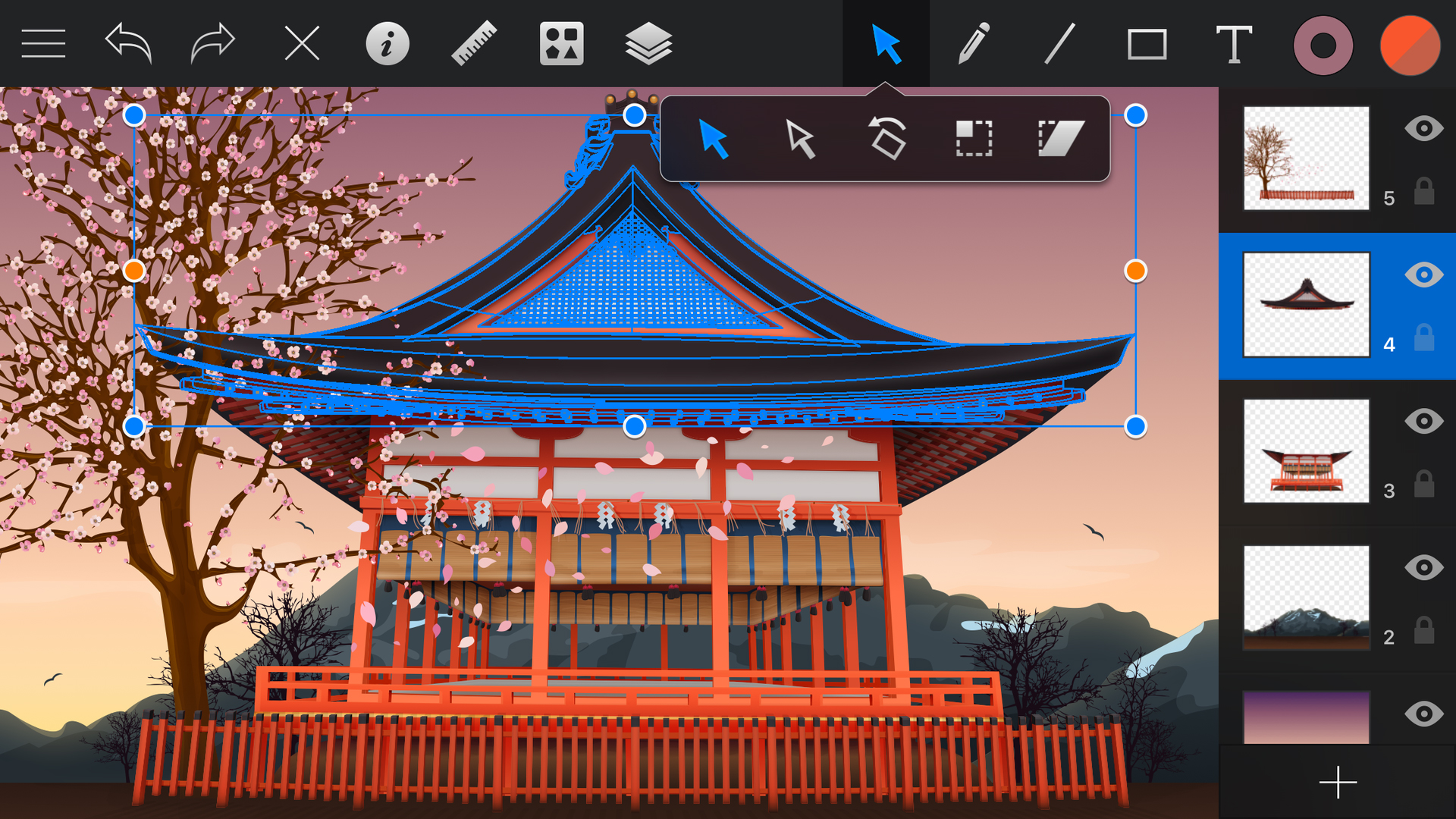
Graphic
- $2.99/£2.99/AU$4.49
On the iPad, Graphic resembles a touchscreen take on desktop vector powerhouse Adobe Illustrator. You might think you’d need to be mad to try and squeeze that into an iPhone, but Indeeo has succeeded in fine style.
The app, equally happy in portrait and landscape, is initially set up for vector-based sketching, with you scribbling freehand lines that can subsequently be tweaked and edited. Smartly, the app always lets you know what’s going on under your finger, because Graphic shows that area elsewhere on the screen while you draw.
Delve deeper and you’ll find a shape library, Bézier curves, a layers system and everything else you need to craft illustrations and logos on your iPhone. It can be a touch fiddly at times, but the powerful zoom and general friendliness, of what’s a hugely powerful mobile app, help immeasurably.

Pixelmator
- $4.99/£4.99/AU$7.99
Photoshop is so ingrained in people's minds when it comes to image editing that it's become a verb. Oddly, though, Adobe's largely abandoned high-end mobile apps, choosing instead to create simpler 'accessories' for the iPhone and iPad, augmenting rather than aping its desktop products. Valiantly filling the void is Pixelmator, a feature-rich and truly astonishing mobile Photoshop.
It's packed full of tools and adjustment options, and works well whether you're into digital painting or creating multi-layered photographic masterpieces. On iPhone, Pixelmator's naturally a bit cramped compared to using the app on iPad, but at the price it remains an insanely great bargain.
The best entertainment apps for iPhone
Our favorite iPhone apps for having fun with your iPhone, whether stargazing, reading, watching TV or checking out Twitter.
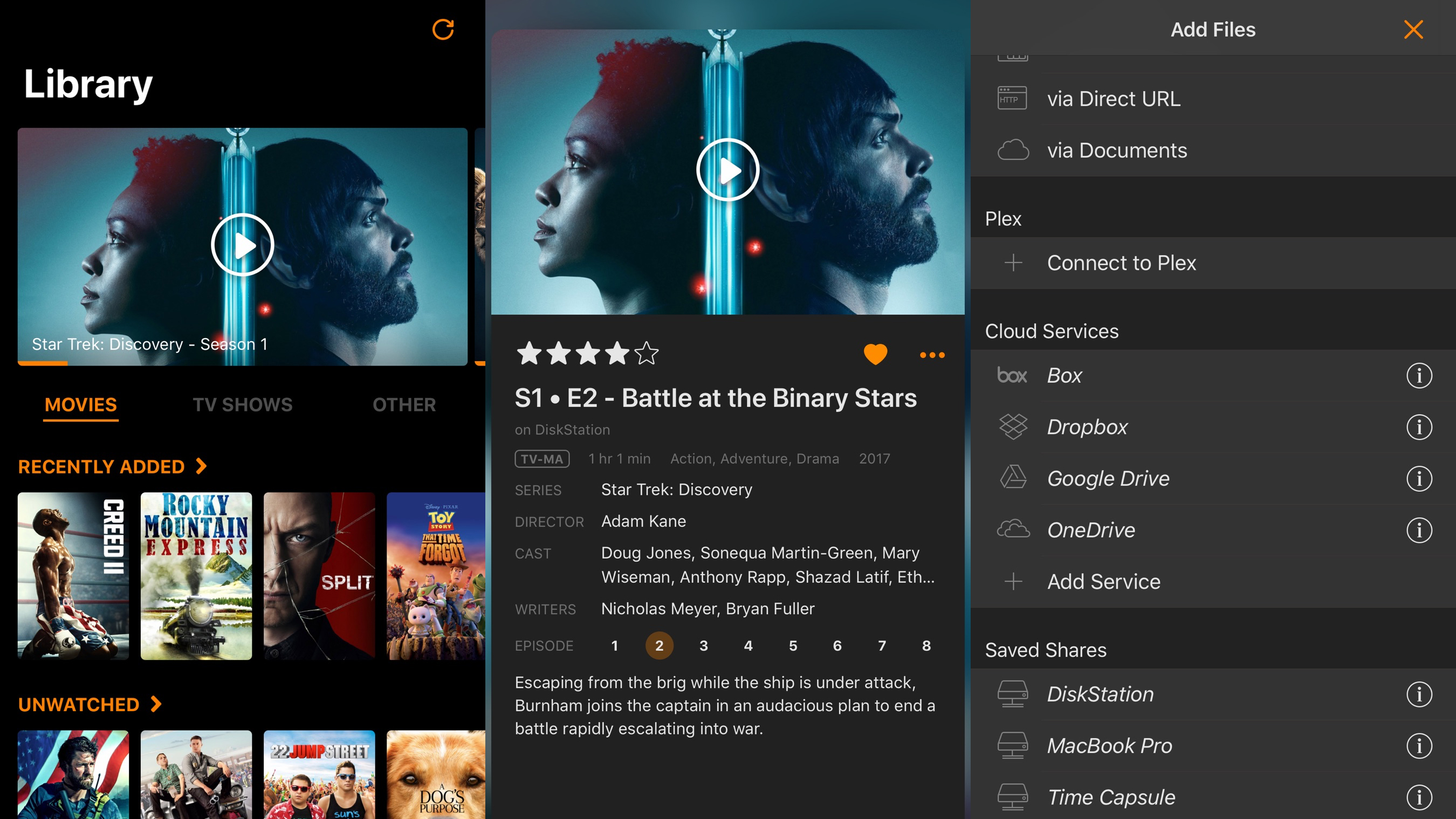
Infuse Pro 6
- $24.99/£23.99/AU$38.99
Infuse Pro 6 is a premium video player. Rather than having you transfer files to your iPhone (although that is an option), it streams from pretty much anywhere, including local PCs, network drives and cloud storage. It can connect with Plex, too, but doesn’t require a server to be running for general use.
From a usability and interface standpoint, the app’s a winner. Assuming your files are sensibly named, Infuse will helpfully organize them and download cover art. When watching, you can grab subtitles with a tap. Halfway through a movie after a commute? Infuse will sync progress to your Apple TV, so you can see the conclusion.
This isn’t a cheap app, and if your demands are simpler, perhaps start with the free version, but if you want the best video player for iPhone, Infuse Pro 6 is it.
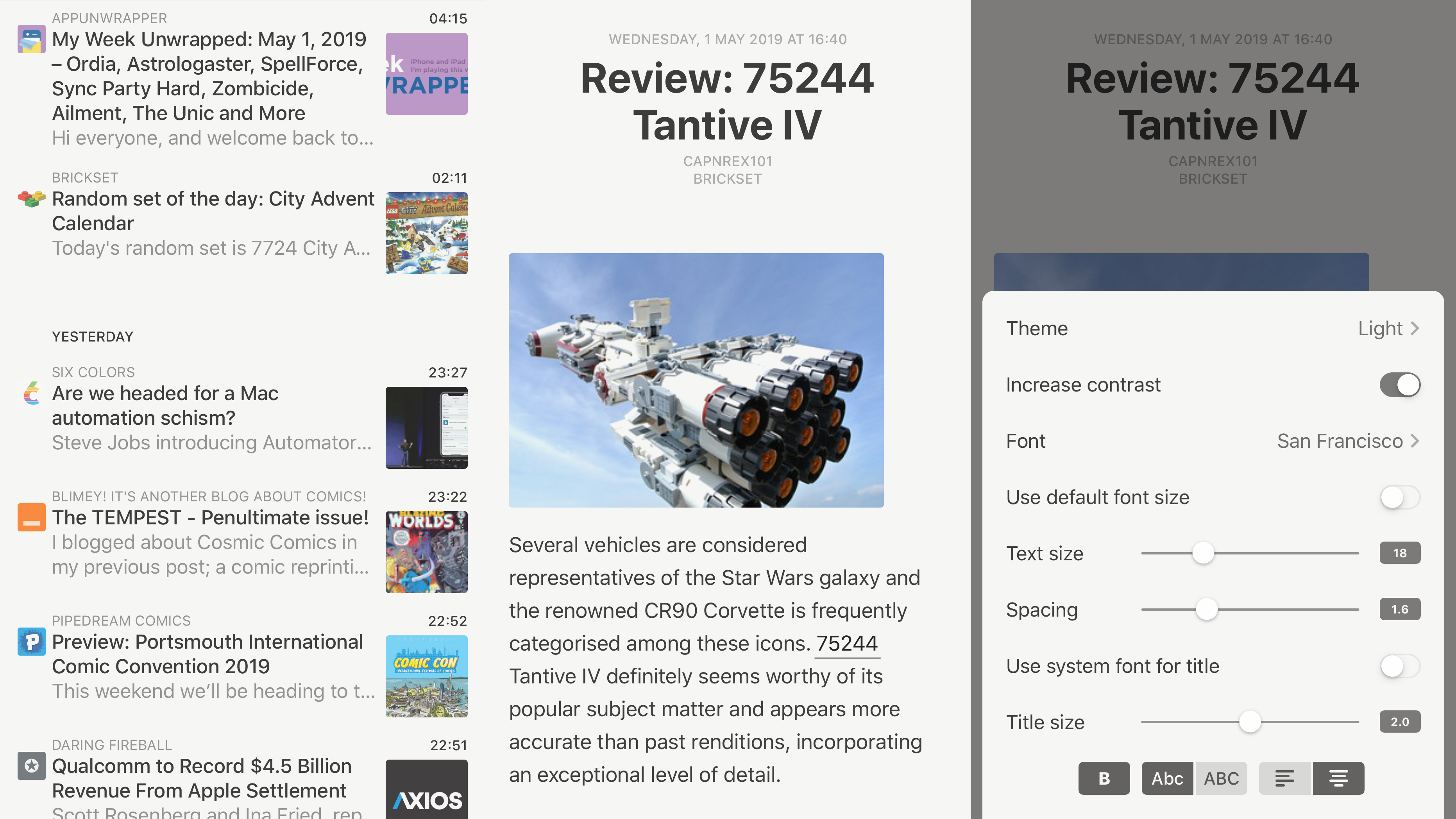
Reeder 4
- $4.99/£4.99/AU$7.99
Reeder 4 is a sleek RSS reader. Through RSS, you can subscribe to your favorite websites, safe in the knowledge you’ll never miss an article. Reeder then lets you browse headlines by individual feed, or a combined one that displays all articles in chronological order.
When reading an article, you get plenty of options. There are light and dark modes, and you can adjust the typography and contrast – the latter being a good thing, given that the default setting isn’t terribly readable.
Further handy features are a button that loads entire articles for feeds that initially just supply synopses, and Bionic Reading. The latter aims to encourage in-depth rather than skim-reading, through guiding the eyes via artificial fixation points. Surprisingly, it works. And overall, it adds to what – in its fourth incarnation – remains the best RSS reader on iPhone.
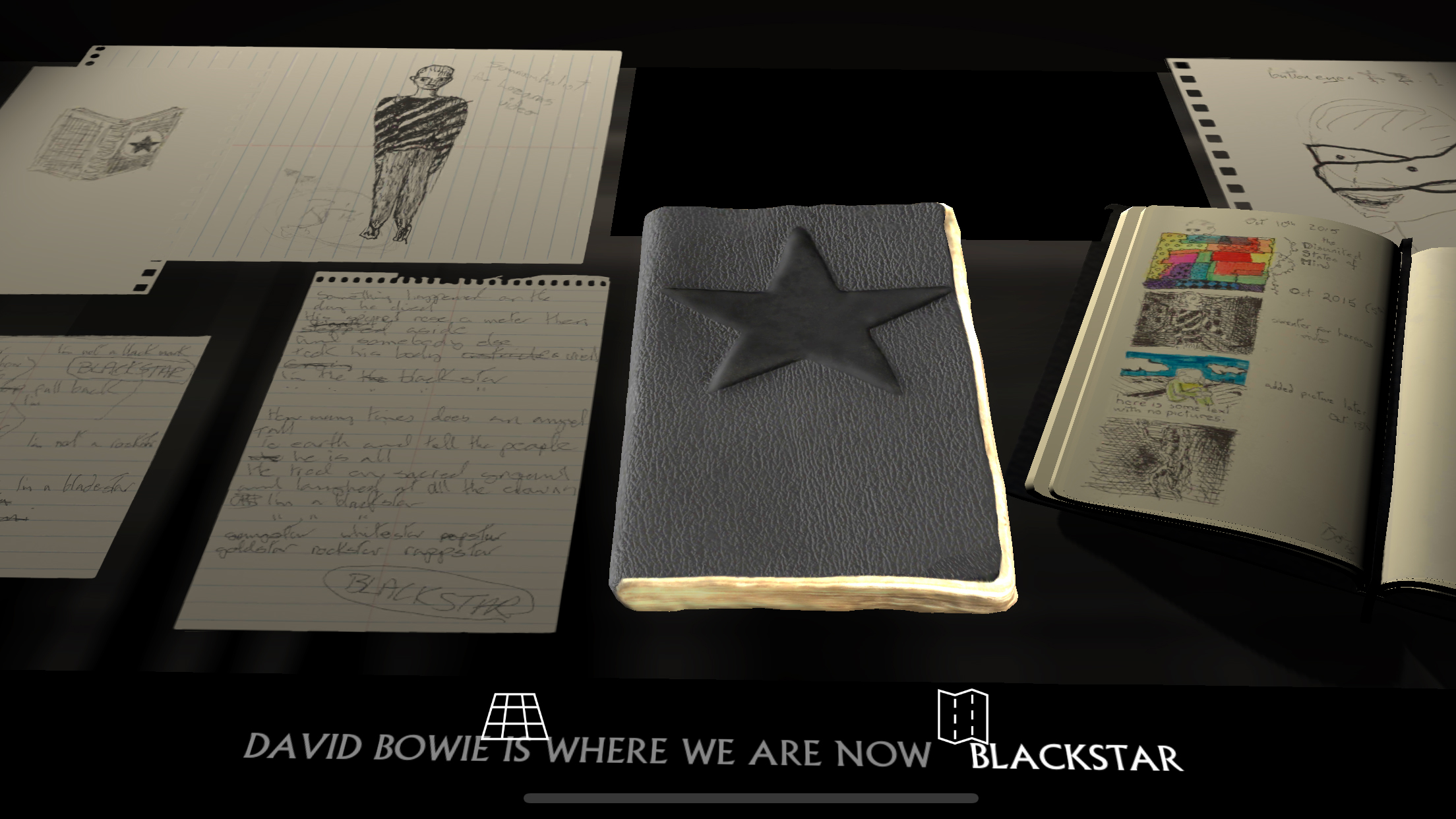
David Bowie is…
- $9.99/£9.99/AU$14.99
David Bowie is… reimagines a famous touring exhibition about a music industry icon as an augmented reality experience. You work your way through Bowie’s life story, exploring videos, costumes, handwritten lyrics, and other objects, which sit before you in a pseudo-3D desk-bound view.
Although less directly immersive than Shepard Fairey – Damaged, it’s arguably more accessible, simply due to Bowie’s infusion into popular culture. And although there are limitations on the smaller screen – the slight awkwardness of a letterbox view; costumes looking a bit like videogame character clothing – this is a fascinating glimpse into one of pop music’s most famous and influential artists.
Given the content lurking within, and its price tag being far less than a ticket to the original exhibition, it’s a must-buy for fans and the merely curious alike.

Bloom: 10 Worlds
- $7.99/£7.99/AU$12.99
Bloom: 10 Worlds is the follow-up to 2008’s Bloom, in which you tapped the screen to play notes while dots of color emanated from your fingers like ripples in a pond. A decade later, 10 Worlds takes that app’s premise and expands out what was effectively a single into a full album.
You get 10 distinct playgrounds to experiment with. Their sounds are varied, as are their visual effects. Some slash lines horizontally and vertically across the screen, while others soak the canvas in watercolor curtains.
Whether you want to interact or just let 10 Worlds play itself (which it starts doing when left alone for a short while), this is an enchanting ambient audio experience that breathes new life into what was already an iOS classic.
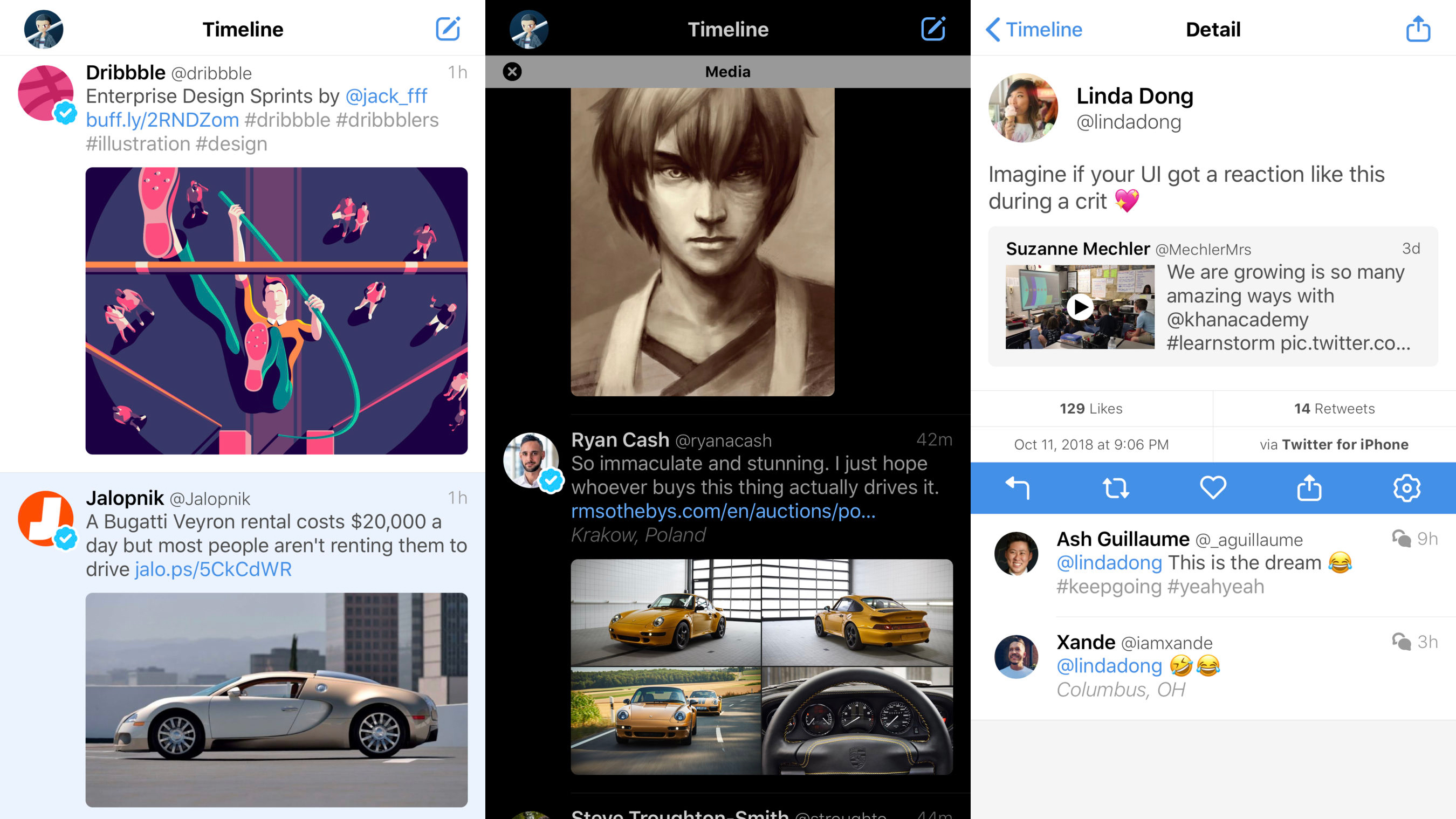
Tweetbot 5
- $4.99/£4.99/AU$7.99
Tweetbot 5 is a premium Twitter client, and in an era when Twitter seems to be doing its level best to grind third-party clients into dust, it might seem an odd recommendation. However, hampered though it may be in some areas, Tweetbot remains highly recommended for people who want to free themselves from Twitter noise.
This is especially apparent when exploring timelines: everything’s in blissful reverse-chronological order; the Mentions tab isn’t cluttered with like and retweet notifications; and you can swap out a toolbar tab for fast access to user-defined lists.
In other words, despite not having access to all of Twitter’s toys, Tweetbot continues to offer the best iPhone Twitter experience for heavy users of the service – and anyone who prefers order over chaos.

Shepard Fairey AR - Damaged
- $4.99/£4.99/AU$7.99
Shepard Fairey AR - Damaged is essentially an art exhibit crammed into your iPhone – and in a rather more literal sense than you might expect. If the name Shepard Fairey doesn’t ring a bell, you’ll likely recognize his most famous work – the iconic ‘Hope’ image of Barack Obama. In Damaged, he tackles the current political climate in a similarly arresting manner.
As a viewer, the AR bit of the app’s name is important. This is no slideshow with written notes. Instead, the entire warehouse-sized show has been transformed into a virtual space you can explore with swipes and taps, or even by walking around yourself.
All the while, you can optionally take in Fairey’s narration, giving you extra context behind the work in what’s easily the best virtual art exhibit on the iPhone.
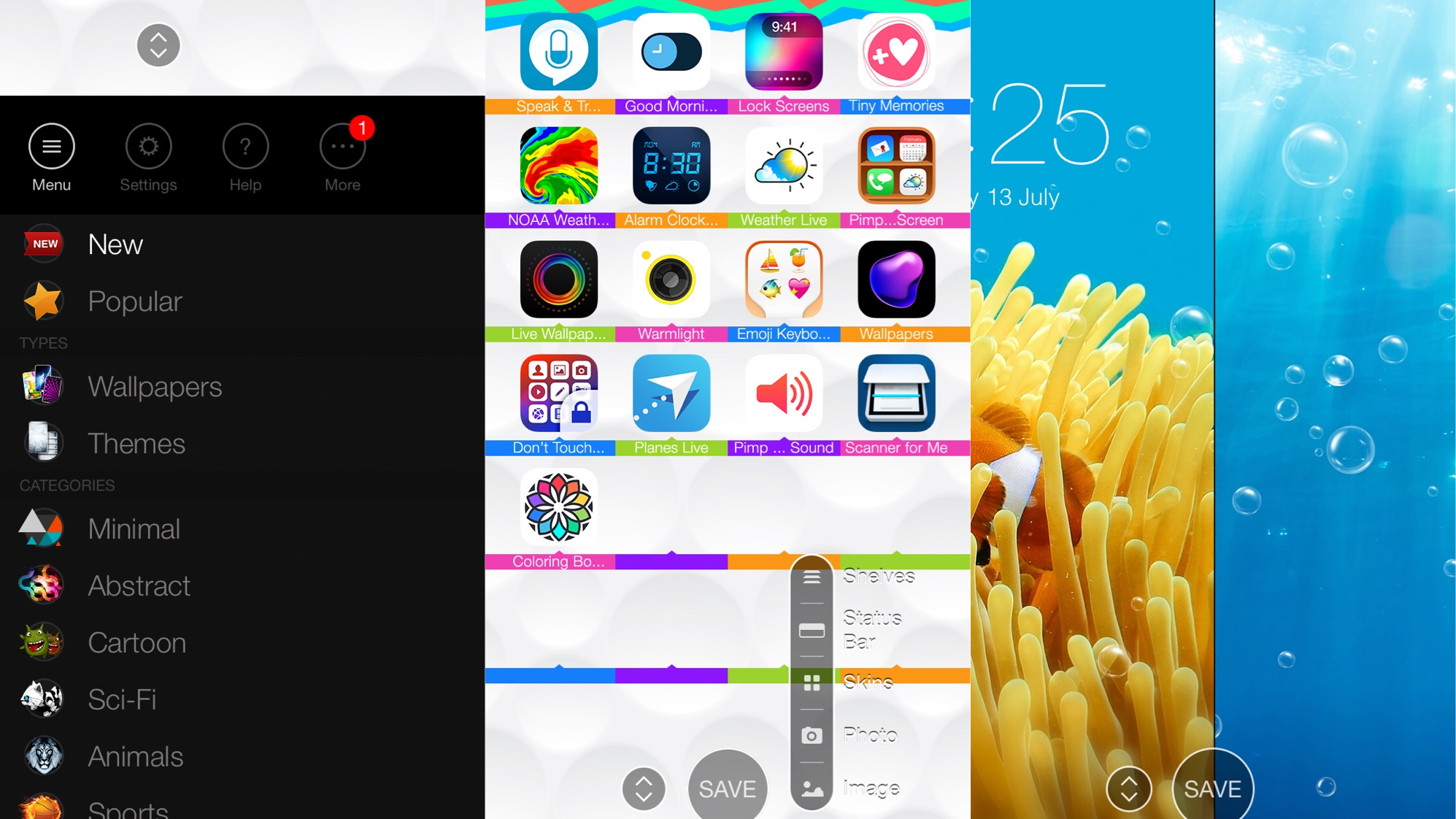
Pimp Your Screen
- $1.99/£1.99/AU$2.99
Pimp Your Screen is an app for customizing your iPhone. At its most basic, this means wallpaper. You select a category, swipe until you find something you like, tap to bring up a Home screen mock-up, and save the image to Photos when you’re done.
However, Pimp Your Screen goes further than its contemporaries in key ways. There’s a Themes section, which pairs matching lock and Home screen wallpapers. There are also ‘makers’ for both screen types, which enable you to combine components in a creative manner.
In the Lock Screen Maker, you can define a background, and add text. Swiping the status bar or clock adds a background for that area alone; swipe below the clock and a (static) calendar appears.
The Home Screen Maker adds a slew of virtual shelves and icon ‘skins’ to the status bar and page backgrounds. The results can vary from beautiful to eye-punchingly taste-free. Probably best if you try to veer toward the former.
The best health, diet and exercise apps for iPhone
Our favorite iPhone apps for keeping fit, workouts, reducing stress and relaxing.
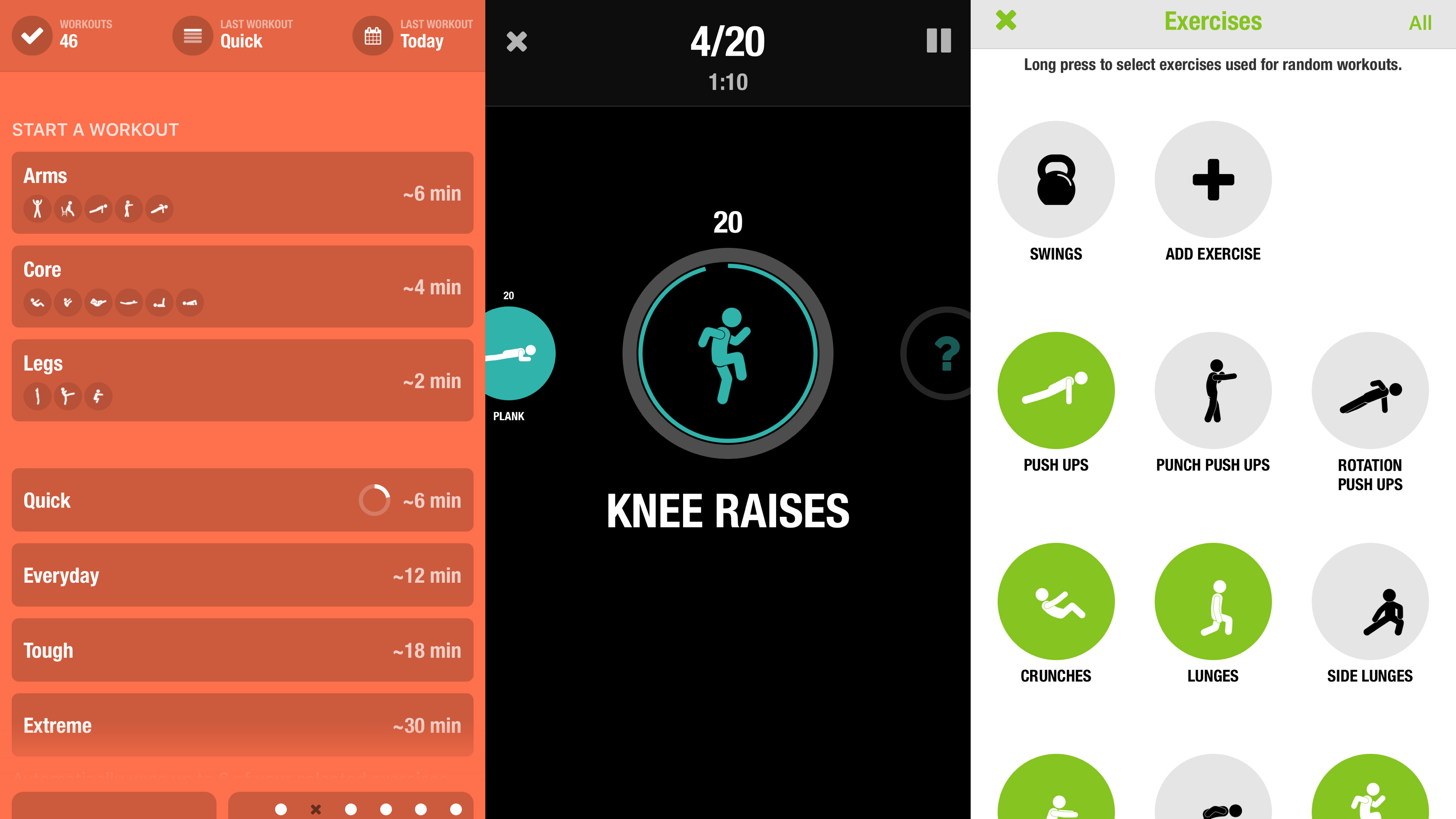
Streaks Workout
- $3.99/£3.99/AU$5.99
Streaks Workout is an exercise app that marries immediacy and depth. To quickly kick off a workout, tap a time. The app will formulate a routine on your behalf, barking orders as exercises switch. Options range from the relatively easy six-minute ‘Quick’ to the frankly masochistic 30-minute ‘Extreme’.
When you have the time and inclination to plan, there are plenty of additional options. You can toggle specific exercises on and off, or add your own, stating how long a rep takes, and whether it should be timed or counted. Want an entire custom routine? That’s possible, too.
Continue to use Streaks Workout, and the app will log your history and streaks. You can set weekly goals, and the app links to Apple Health. It will even track workouts across devices should you start on an iPad or Apple TV. So now there’s no escape from getting fitter.
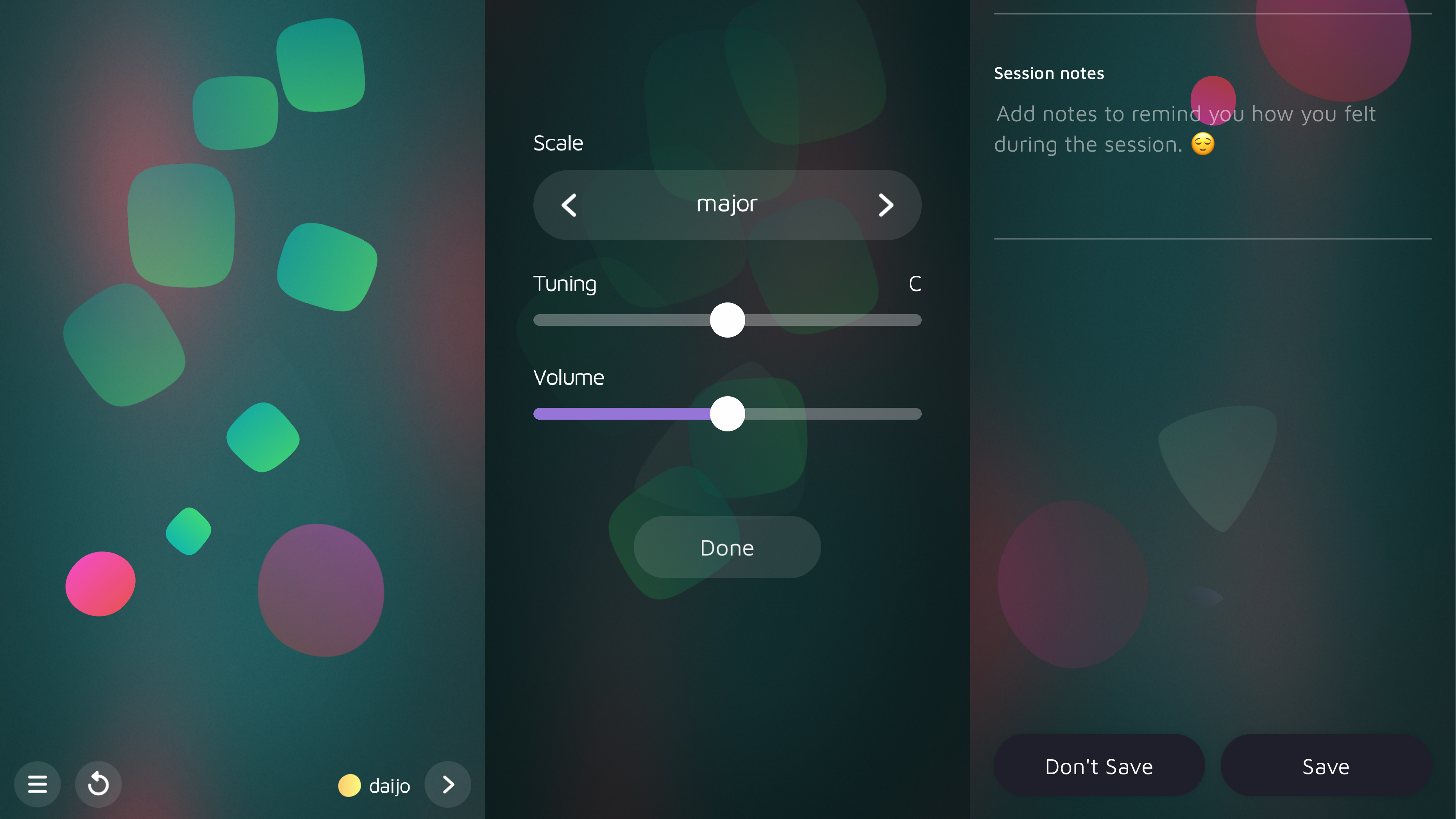
Cosm
- $1.99/£1.99/AU$2.99
Cosm is designed to calm and focus your mind, through ambient audio composition – and journaling.
The music bit resembles Brian Eno’s Bloom app, with you tapping the screen to simultaneously play notes and have shapes appear from beneath your digits. Your taps coalesce into a semi-random repeating loop.
But Cosm differentiates itself from Bloom in key ways. There are multiple instruments to select (albeit from an awkward picker), and the option to define tuning. Also, there’s the writing bit.
This suggests you align soundscapes with how you felt when making them. But the text fields are blank, and so it’s down to you to decide how to use them – while Cosm gets on helping to make your mind a calmer place.
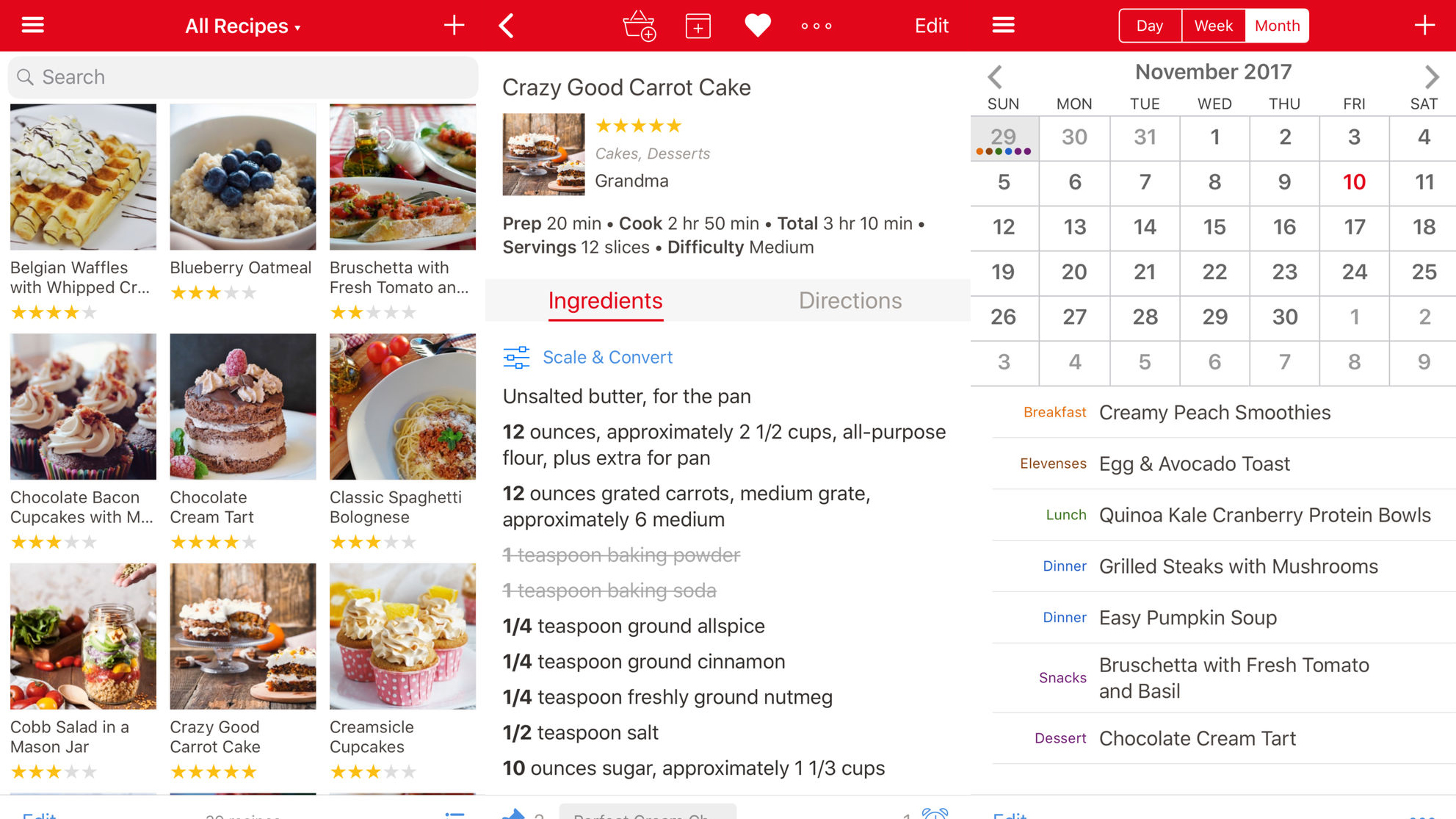
Paprika Recipe Manager
- US$4.99/£4.99/AU$7.99
Paprika wants your main companion in the kitchen to be your iPhone. With the app, you can store clippings from foodie websites. Recipes are intelligently saved offline, and can be edited. You can even add photos of your successes, thereby giving you something to aim for next time!
The app also supports everything else about mealtimes. You can create grocery lists, track what’s in your cupboards and when ingredients expire, plan meals that are synced with Calendar, and create reusable menus.
The app’s not the most vibrant in its class, and lacks the handy step-by-step imagery and videos found in the likes of Kitchen Stories and Tasty, but for getting on with the business of planning and making meals, on an ongoing basis it deserves the app equivalent of a Michelin star.
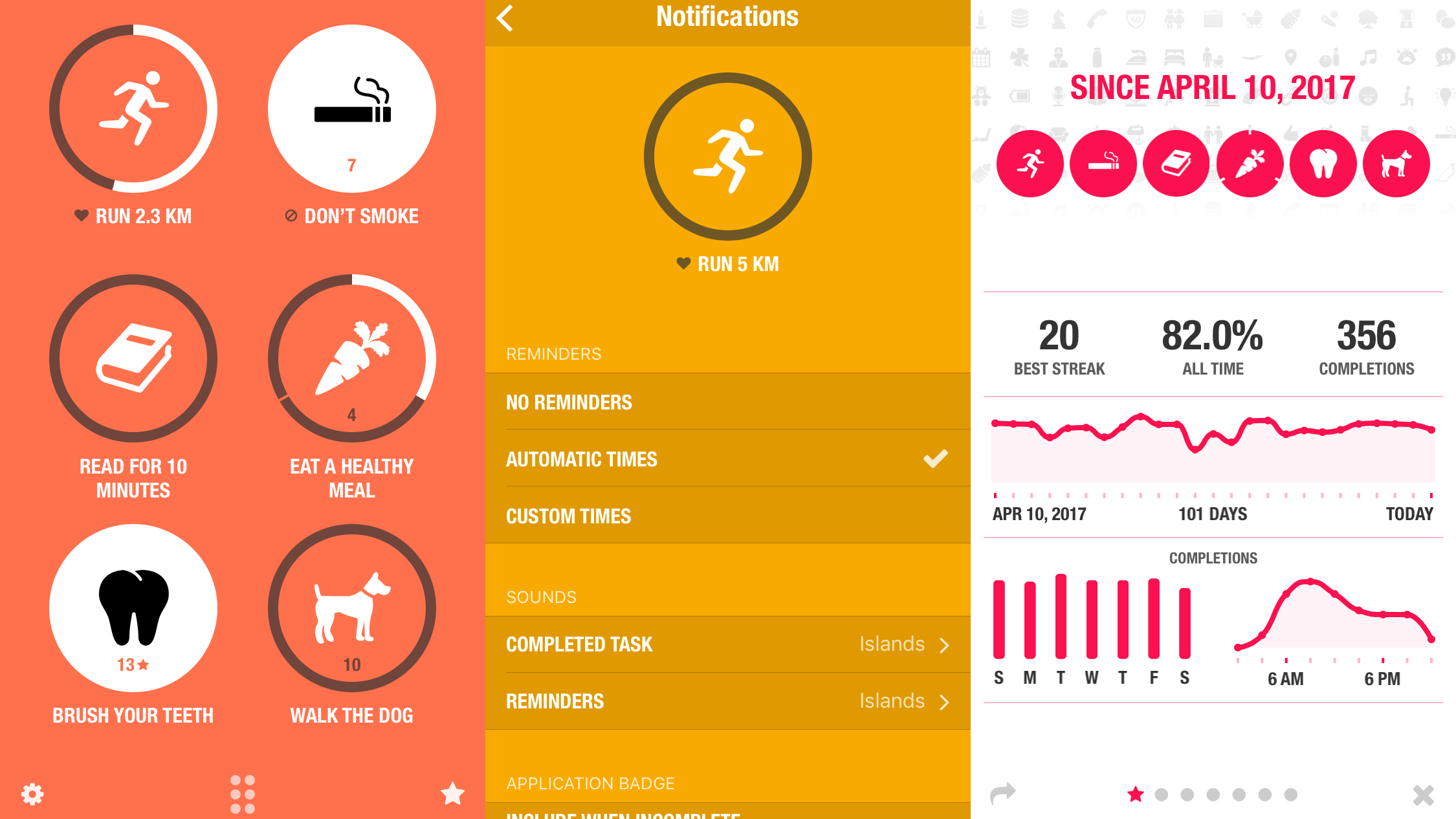
Streaks
- US$4.99/£4.99/AU$7.99
Streaks is a to-do manager all about helping you form good habits – and ridding yourself of bad ones. You begin by selecting a task and defining how often you want to do it. Tasks are subsequently checked off, and you can track your progress by way of the app’s various graphs and statistics.
Where Streaks succeeds is in the flexibility of the tasks you can add, and the razor-sharp focus on getting habits infused into your routine. The bold interface is ideally suited to six tasks, forcing you to prioritize. You can set reminders, and mark items as done using the Today widget or an Apple Watch.
Task types are varied. There are those that integrate with Health, negative tasks (like smoking) to avoid completing, and timed tasks for things like meditation sessions. In all, it’s an excellent app for coaxing out a better you.
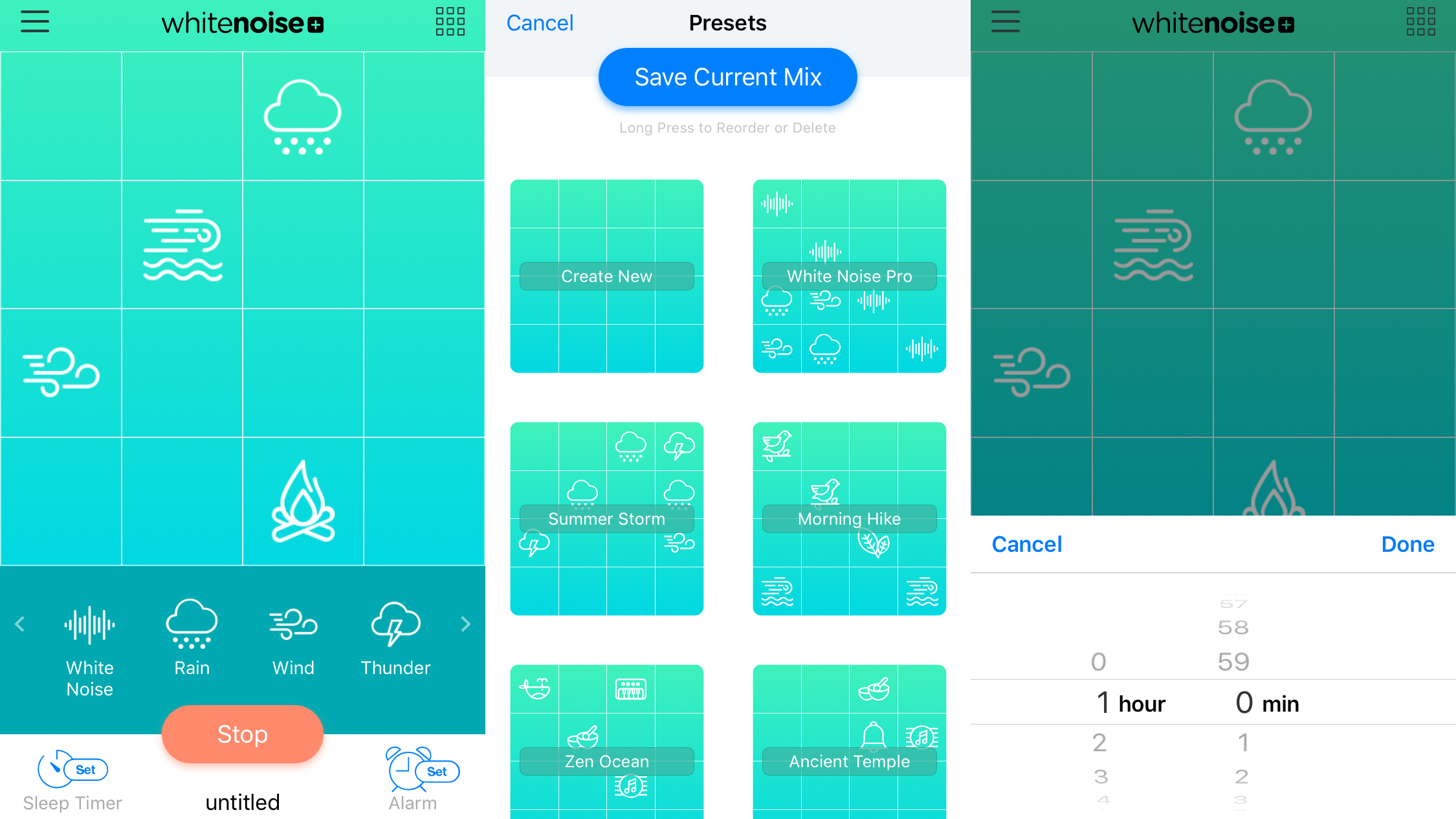
White Noise+
- Free + $2.99/£2.99/AU$4.49 IAP
White Noise+ is an ambient noise machine, which aims to drown out distractions by filling your ears with something pleasant instead.
Rather than just offering you sounds to play, or sliders to adjust volume levels, it takes the form of a mini mixing desk akin to the smart drums grid in GarageBand. You drag sounds into the 16 available slots, with those towards the top playing at a louder volume, and those towards the right offering more complexity. It’s intuitive, effective and looks really great as well.
Neatly, should you happen upon a particularly pleasing combination, it can be saved for later playback, and the app itself includes a few examples to get you going. There’s also an alarm built-in, for using the app for meditation sessions – or to help you not oversleep when having a quick afternoon nap.
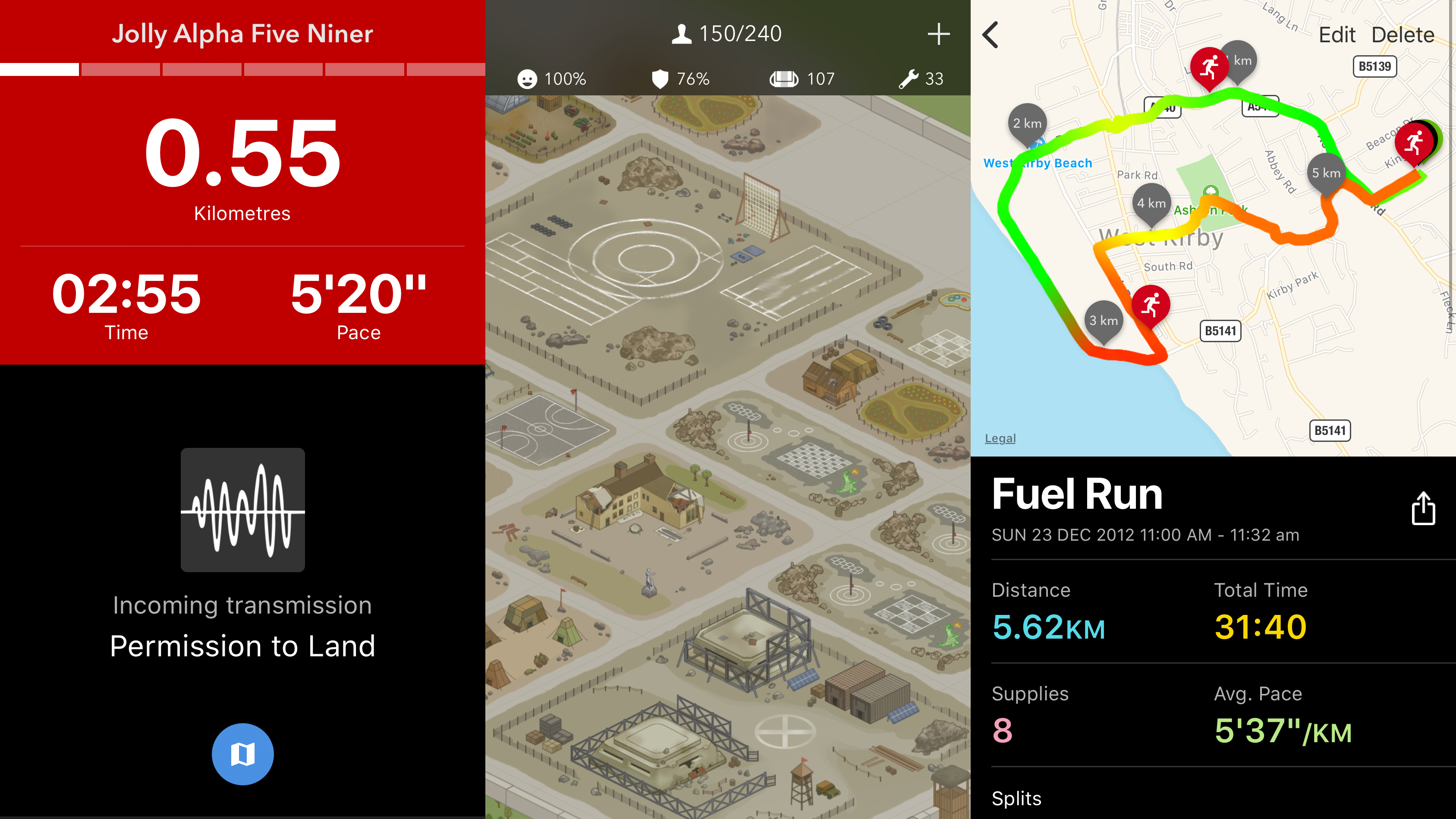
Zombies, Run!
- Free + IAP
Zombies, Run! is a fitness app that urges you on not just with stats and data, but with the threat you’re about to be torn limb from limb by the undead.
Fortunately, it doesn’t just randomly blare BRAINZZZZ into your ears – it’s a full-fledged adventure experience, co-created with an award-winning novelist. So as you huff and puff, you gain insight into a dystopian future, head out on supply runs, and try not to become lunch for a zombie horde.
For free, you get a few missions, one of which unlocks every week, and interval training workouts. But the subscription packs in hundreds of missions – enough to keep you going for many months. If you’re a fan of horror or just fancy an exercise app that isn’t all about numbers and music, it’s an excellent buy.
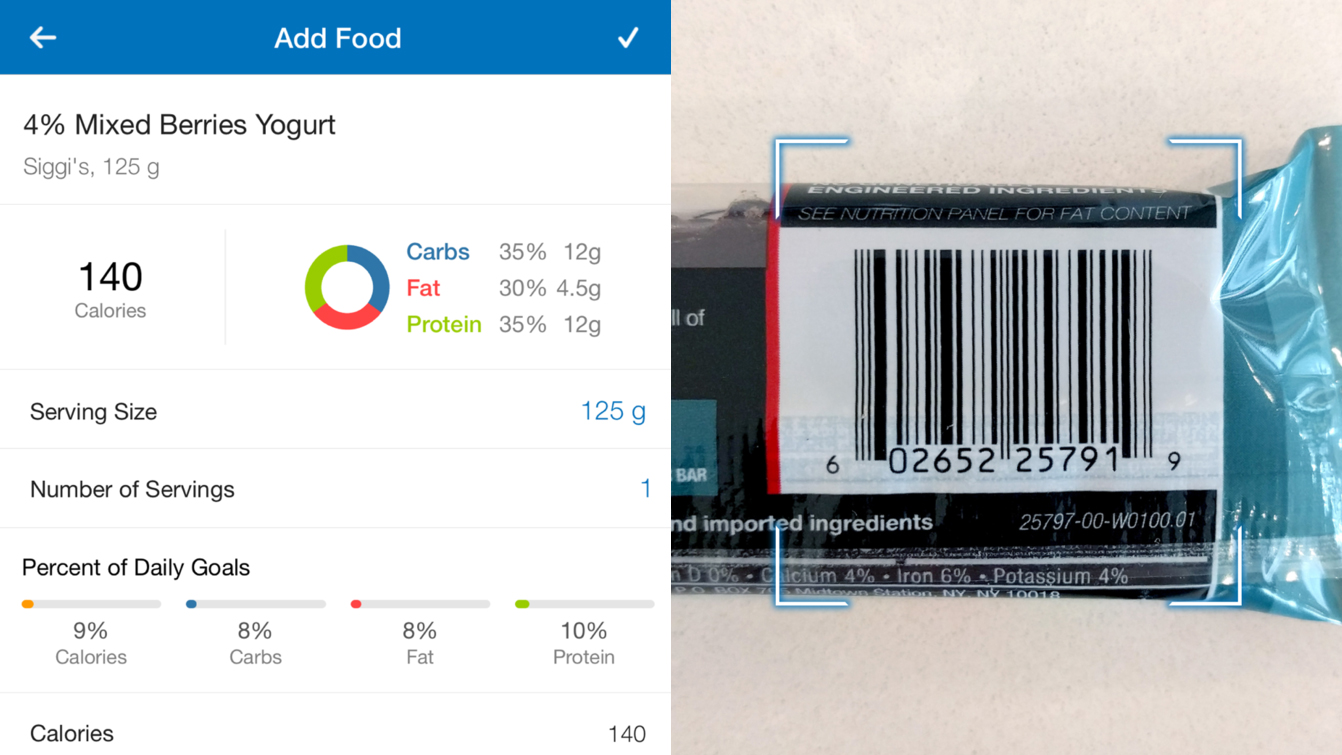
MyFitnessPal
- Free
MyFitnessPal aims to get you fitter by helping you track what you eat. Given that such tracking often involves logging meals, the app speeds things along by way of a barcode scanner, a colossal food database and a recipe importer. If you tend to eat the same meals often, you can save favorites.
All the while, your calories are tracked, and you can check how you’re doing against any goals you’ve set. The ability to connect exercise apps also means MyFitnessPal can become a kind of hub for your general wellbeing.
As ever, there’s a pro version. This seriously ramps up data, analysis and support, with the likes of nutrient insights, tips articles and fine-grained goals. In either incarnation, MyFitnessPal works well to help you more easily understand how food intake affects you.
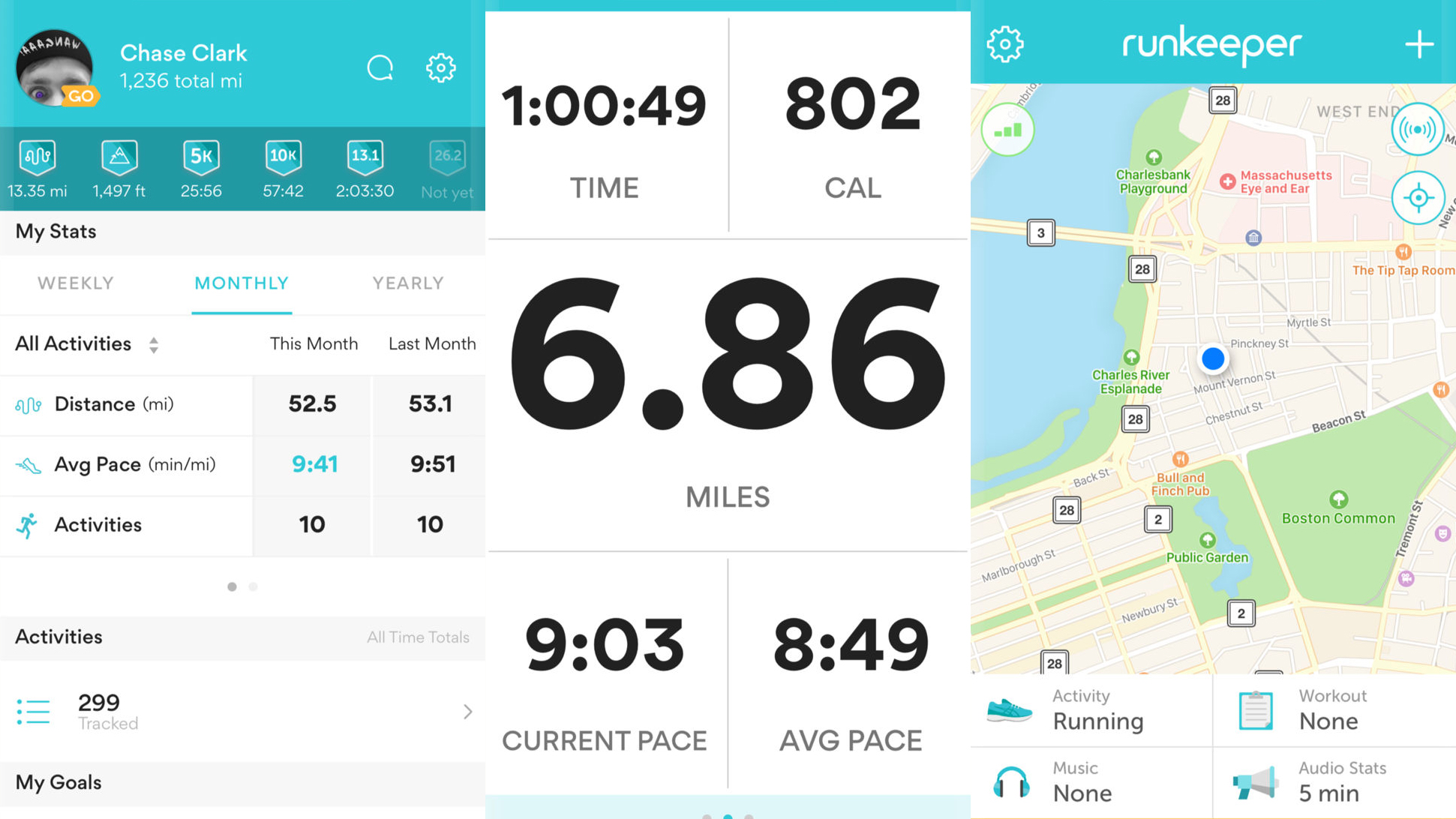
Runkeeper
- Free
Runkeeper is a training aid and run tracker, which has been around for more than a decade. Since its debut, it’s evolved from mapping out your runs by utilizing your iPhone’s GPS to become a kind of digital personal trainer.
If all you’re looking for is a way to track exercise, Runkeeper remains a winning app. Whether you’re running, walking or cycling, Runkeeper provides real-time data in massive glanceable numbers, and plenty of data to delve into when you’re done.
Runkeeper Go takes things further than logging and stats. For $9.99/£7.99/AU$14.99 per month, you gain access to premium training plans, and custom workouts designed to fit your schedule and ability. The price is obviously a jump up from the free app, but it’s cheaper than a human trainer, and effective when you want more than the basics.
The best kids apps for iPhone
Our favorite iPhone apps, learning tools, musical toys and games for toddlers and children.
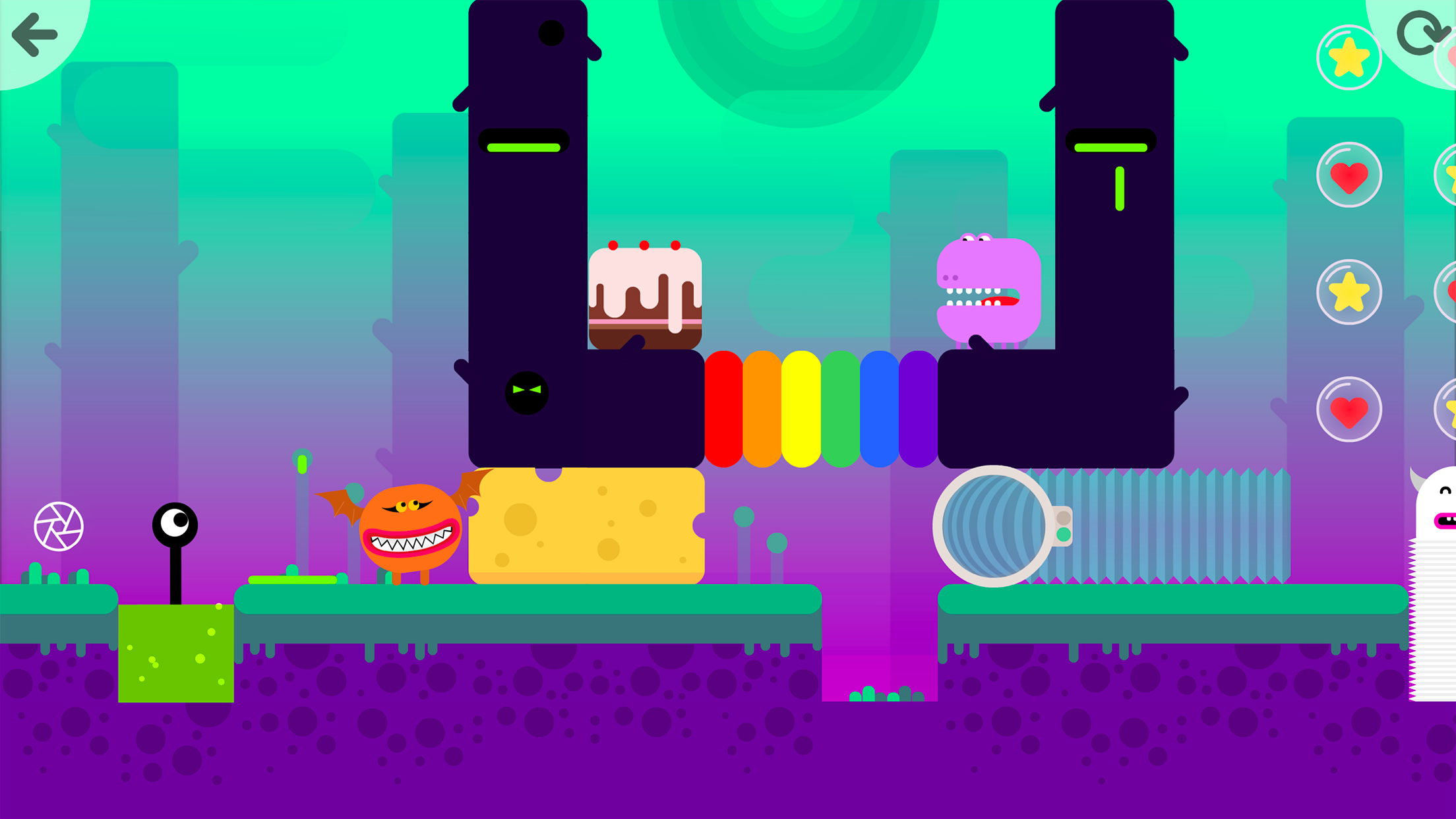
Thinkrolls Space
- $3.99/£3.99/AU$5.99
Thinkrolls Space finds a cast of oddball rotund critters trundling around 200 mazes set across seven unique planets. With its tactile interface and amusing characters, it has the appearance of a stylish cartoon – but one children can interact with, and that makes them think.
Essentially, the player tries to get the Thinkroll to an exit, swiping to make it roll, and manipulating other critters on screen as necessary. Cheese monsters tuck into moon cheese, clearing blocked tunnels. Goo monsters, robots and others also have their parts to play, as do vanishing bridges, plasma fields and teleporters.
With two distinct level sets, 24 Thinkrolls to collect, and no ads/IAP whatsoever, this one’s a good bet for keeping a kid with an iPod Touch happy – without filling their head with junk.
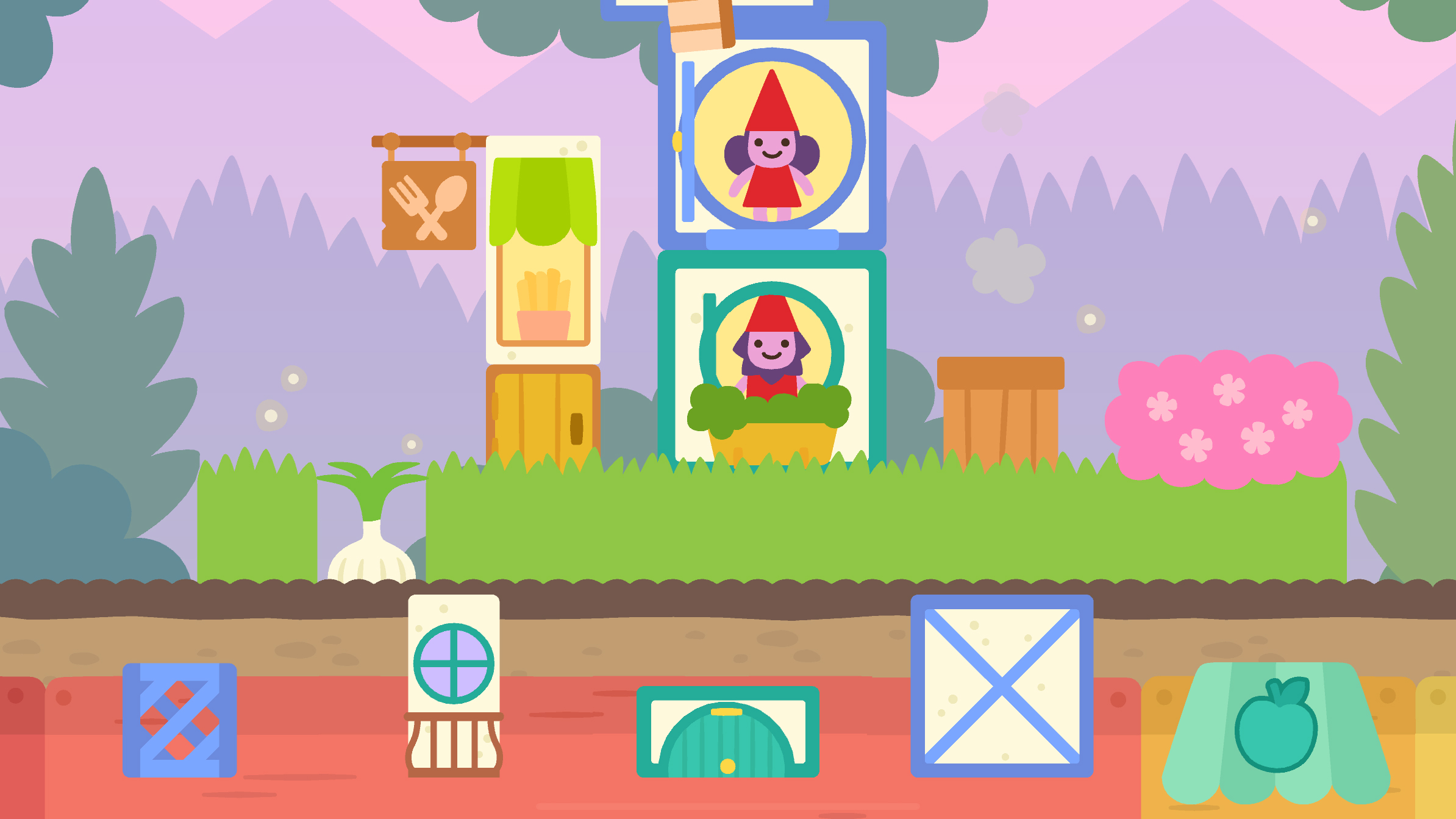
Sago Mini Village
- $2.99/£2.99/AU$4.49
Sago Mini Village is a building blocks game for small children. It takes place in a vibrant, fantastical realm apparently entirely populated by grinning gnomes. Shops and houses are constructed by drag-and-drop, like a cross between prefab housing and Duplo. As your village grows, more gnomes will move in, and then start milling about the place, visiting new friends.
In the hands of a kid, Sago Mini Village becomes a thing of wonder. It’s reportedly inspired by Minecraft, but clearly knows how to engage and cater for very young children. The interface is elegant and usable,there are no ads, it’s possible to play offline, and all of the surprises within the game are of a delightful kind. And as an added bonus, after a major building session, there’s nothing to tidy away!
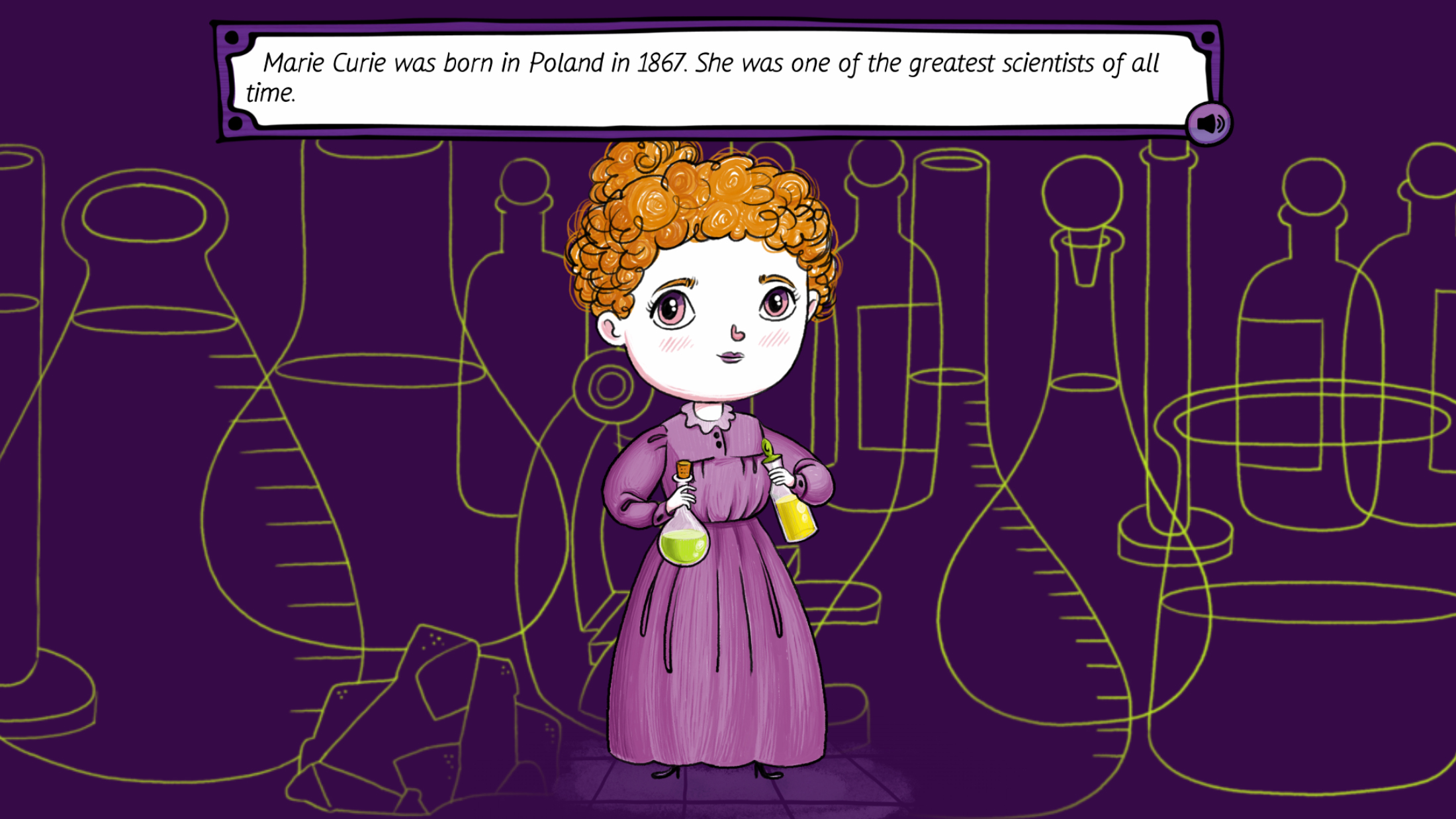
Women Who Changed the World
- $2.99/£2.99/AU$4.49
Women Who Changed the World is an animated picture book for children, exploring the achievements of influential and iconic women, including Rosa Parks, Amelia Earhart, and Marie Curie.
The stories are approachable, providing useful facts, but not deluging children with too much content. The illustrations are bright and adorable, and many scenes in each story have interactive elements, such as being able to drag Earhart’s plane around.
There are a few niggles, most notably that it isn’t always obvious what should be done to move the story on. However, this low-cost, advertising-free introduction to such important subject matter is a must-download app for any kids (small or large) who’d like a grounding in the achievements of some of history’s most brilliant and brave women.
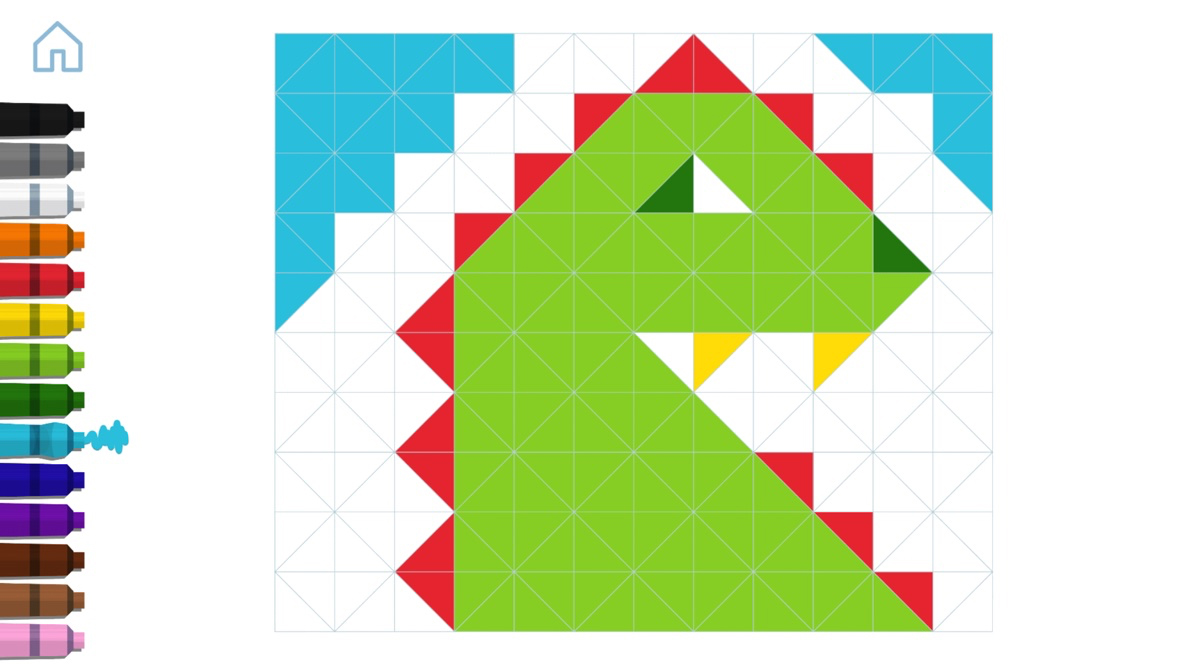
Zen Studio
- Free + $2.99/£2.99/AU$4.99 IAP
Zen Studio‘s developer describes it as a meditation app for kids, but really it’s an engaging and entertaining combination of coloring and musical toy. It’s ideal for anyone who needs to relax for a while – regardless of age.
The app’s canvases are triangles that you color in with a tap and emit a note whenever you do so. Drag out a line or tap a few triangles in quick succession and you’re treated to a little melody. It’s all very ‘zen’.
You get the bulk of the app for free, but pay the one-off IAP and it opens up in useful ways: white paint for ‘deleting’ colored triangles; a range of template-based tutorials; and unlimited save slots. You might feel ‘zen’ about not splashing out, but this is an app that’s well worth paying a few bucks for.
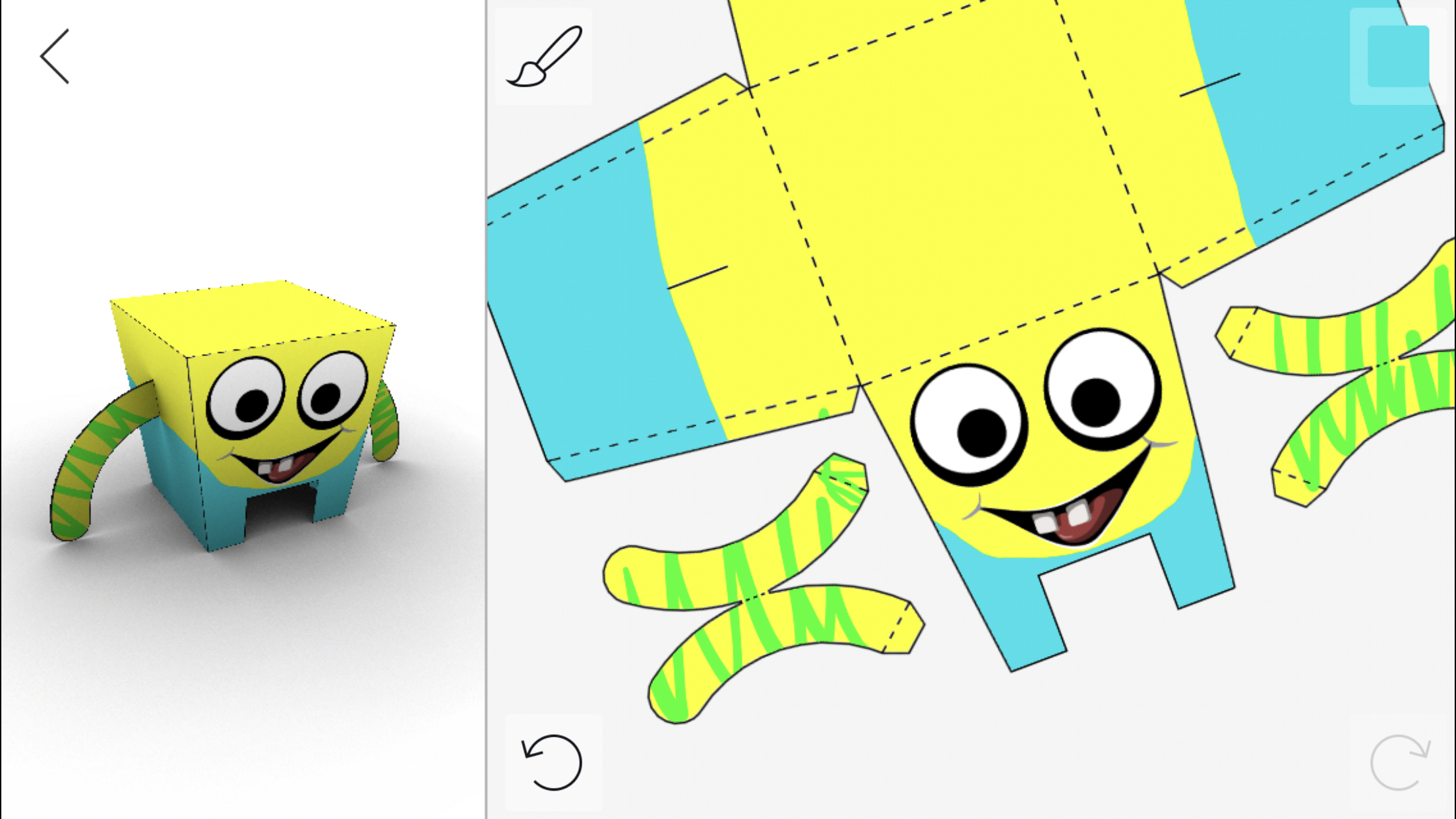
Foldify
- $2.99/£2.99/AU$4.49
Foldify is a rarity – an app that’s not entirely devoted to the digital realm. Instead, it invites you to create little characters on your iPhone, which you can then print on to card or paper, and construct by way of deft folding and a dab of glue.
The interface is first-rate. You kick things off with a template – anything from basic cubes to little blocky people, cars and arcade machines. You then scribble all over that with a pen tool, slap on stickers, and import your own images. All the while, you can admire your handiwork as a little 3D model that’s updated in real-time and can be spun with a flick.
There’s also a social aspect for sharing your creations and downloading other people’s works – including amusingly cuboid takes on Steve Jobs and the original Mac.
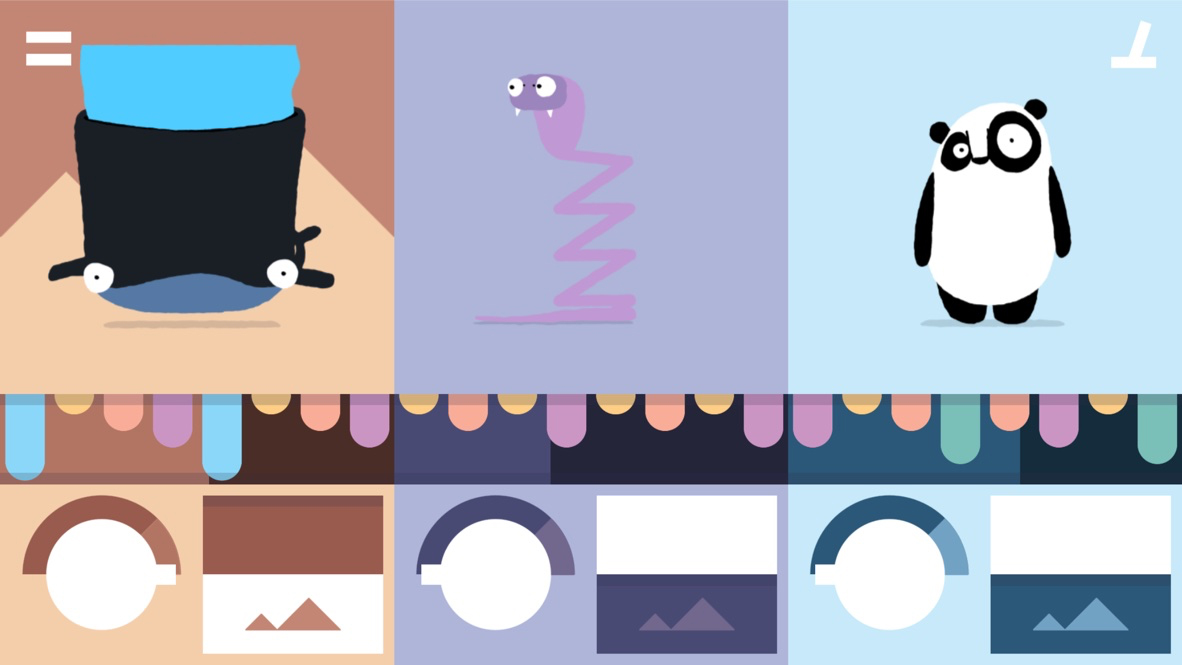
Bandimal
- $3.99/£3.99/AU$5.99
Bandimal is probably the world’s cutest music-making app. And although it was designed for children, we’ll wager anyone with a soul will be grinning from ear to ear shortly after starting to play.
It involves loading animals into one of three available slots, and tapping out notes on a dotted grid. When the playhead moves over the dots, a sound plays, and the animal bops along accordingly – such as a whale blowing colored water while emitting suitably deep bass noises.
It’s relentlessly jolly, sounds superb, and automatically stores every song you make. And as if to cement how perfect the app is, load one of your songs and the animals count in before it starts playing.

Toca Life: Office
- $3.99/£3.99/AU$5.99
Toca Life: Office is an app designed for children, ostensibly giving them insight into what their parents do all day at work. Only this office is probably a lot more exciting than the one you get to spend many hours in every week.
Here, tiny fingers can dot 35 distinct characters about the place, and role-play in an office, bank, rooftop, courthouse, and apartment. There’s a virtual daycare, a swanky glass elevator, and a bank vault with an alarm.
You can draw on a whiteboard, print from the computers, discover a helicopter, and even make superheroes. Chances are you’ll want to try this out yourself when your kid’s done, too, if only to imagine how exciting your own office life could be.

DNA Play
- $2.99/£2.99/$4.49
DNA Play is an educational app for children that serves as an introduction to the basic science behind DNA. At least in theory. Really, most tiny people will be more excited about the prospect of fashioning all kinds of bizarre, colorful creatures by way of dragging and tapping.
The app begins with you completing simple ‘gene’ puzzles, which see you dramatically adjusting a monster’s characteristics, and this can be done by simply hammering away at a body part to switch it for something new - ideal for less dextrous younglings. Each monster can then be saved and its photo shared.
Occasionally, objects show up, giving you the chance to propel your monster along on a skateboard, feed it a pile of fruit, or have it totally freak out when faced by a spider significantly less terrifying than the monster. But best of all, if you get caught playing with the app yourself, you can argue you’re in the midst of an important scientific breakthrough. Probably.
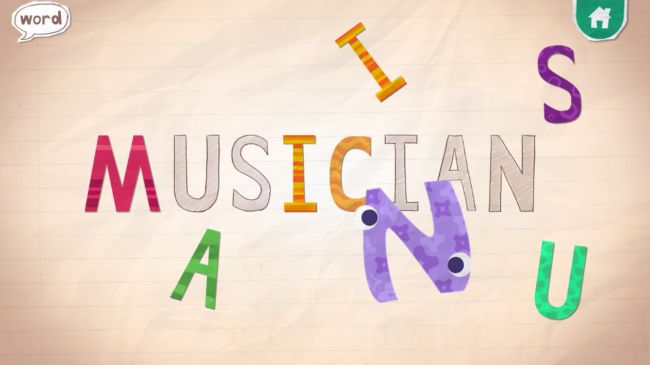
Endless Alphabet
- $8.99/£8.99/AU$13.99
If you’ve got yourself a resident tiny human, your house probably has a few of those wooden puzzles where letter shapes are shoved into their respective slots. Endless Alphabet isn’t quite, well, endless, but contains dozens of such puzzles, which work brilliantly on the touchscreen.
On your child selecting a word, monsters sprint along the bottom of the screen, scattering its letters. They then need to be dragged back into place, coming to life as they’re moved. When a word’s complete, monsters act out what it means in a charming animated cut scene.
There are some minor grumbles here and there – the app’s resolutely US-English in nature, and the sounds letters make when dragged might confuse, since they’re not full letters nor the phonics often used in education. Otherwise, this is a first-rate, charming, enjoyable educational app for youngsters getting to grips with words.

Metamorphabet
- $3.99/£3.99/AU$5.99
If you've seen tiny humans around iOS devices, you'll have noticed that even those that can't speak beyond bababababa and dadadadada nonetheless merrily swipe and poke at screens.
Metamorphabet capitalises on this ingrained infatuation with shiny touchscreens, and cunningly attempts to teach the alphabet via the medium of surreal interactive animations.
It starts off with A, which when poked grows antlers, transforms into an arch and goes for an amble. Although a few words are a stretch too far (wafting clouds representing a daydream, for example), this is a charming, imaginative and beautifully designed app.
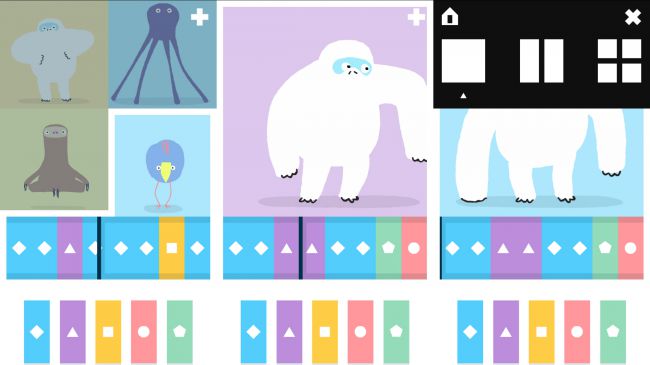
Loopimal
- $3.99/£3.99/AU$5.99
For most kids, plastic keyboards and annoyingly loud toy drums are a typical starting point in music, but Loopimal ambitiously attempts to introduce children to the concept of computer sequencing. Fortunately, it does so by way of highly animated dancing cartoon animals, bright shapes, and plenty of flair.
Hit play and you're immediately shown an animal bobbing its head to a backing track. You then drag coloured pieces (from a selection of five) into eight empty slots. When the playhead moves over the shapes, the animal adds its own sounds and melodies, often while performing impressive gymnastic feats.
It's Loopimal's character that initially wins you over. Unless you're dead inside, you won't fail to crack a smile when an octopus starts playing funky basslines with its tentacles, or the percussive Yeti gets all stompy. Smartly, once the player clocks how Loopimal works, the screen can be split into two or four, to combine animals and their unique sounds.
The one big miss is the inability to save your compositions, but every Loopimal riff is in C-major; this means you can use just the white notes on nearby keyboards to play along with whatever madness is happening inside the app.
The best music and audio apps for iPhone
Our favorite iPhone apps for making music, listening to podcasts and being a DJ.
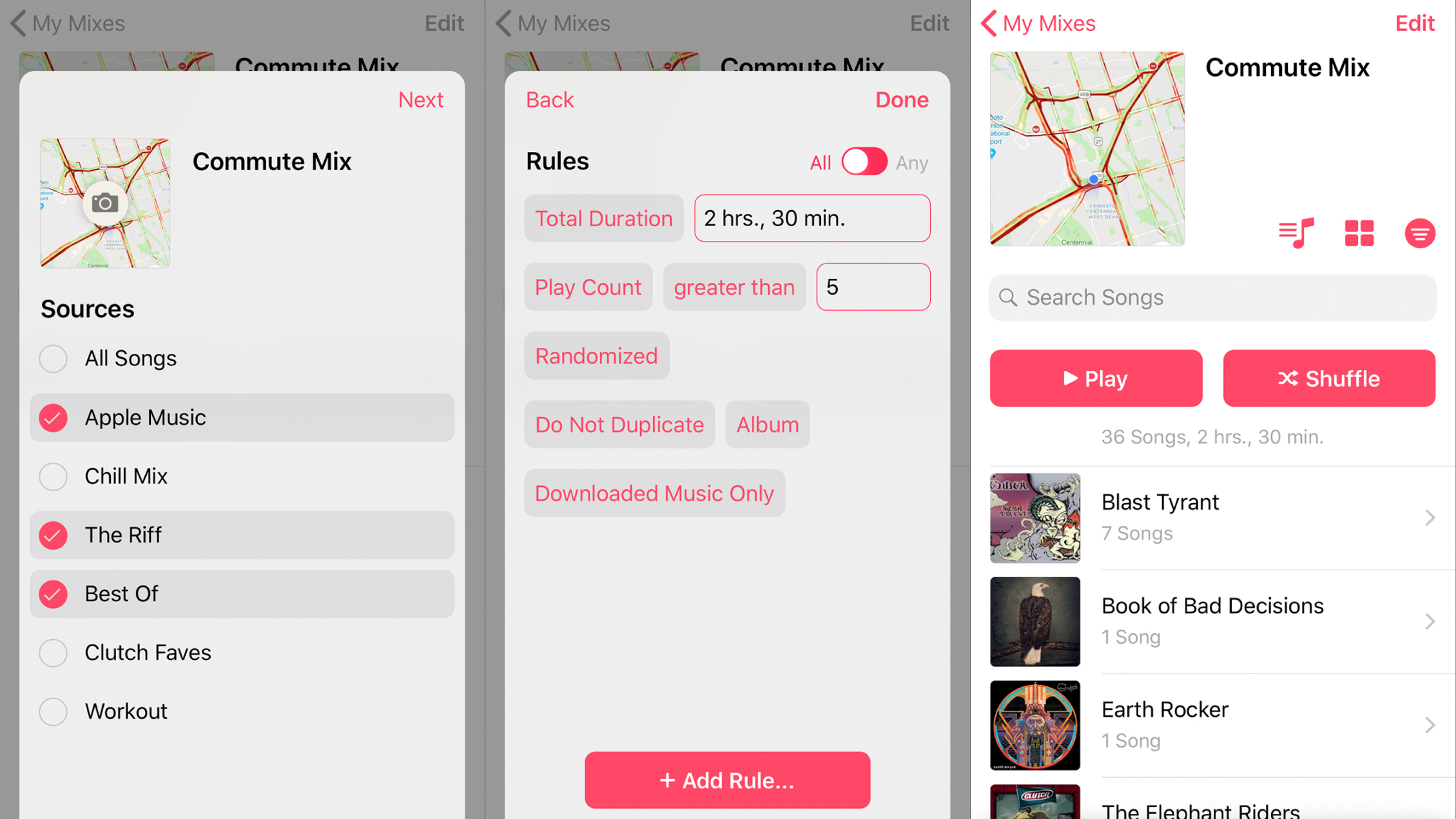
Miximum
- Free + $1.99/£1.99/AU$2.99
Miximum brings to your iPhone a playlist power-user feature from iTunes. Rather than laboriously dragging and dropping tracks from Apple Music, or relying on Apple’s curated lists, you can define collections based on your own criteria – dynamic playlists that update as you adjust their rules.
For example, you could create a playlist based on tracks you’ve flagged as ‘loved’, but that haven’t been played over the past month. Or you could get up to date with your listening by having a playlist based on recently added tracks you’ve not yet heard, and that have been downloaded to your phone for offline use.
Despite the inherent power in this app, Miximum is extremely easy to use. This iPhone app is therefore beneficial to Apple Music users who want more control over their playlists, in a manner that recognizes collections often change over time.
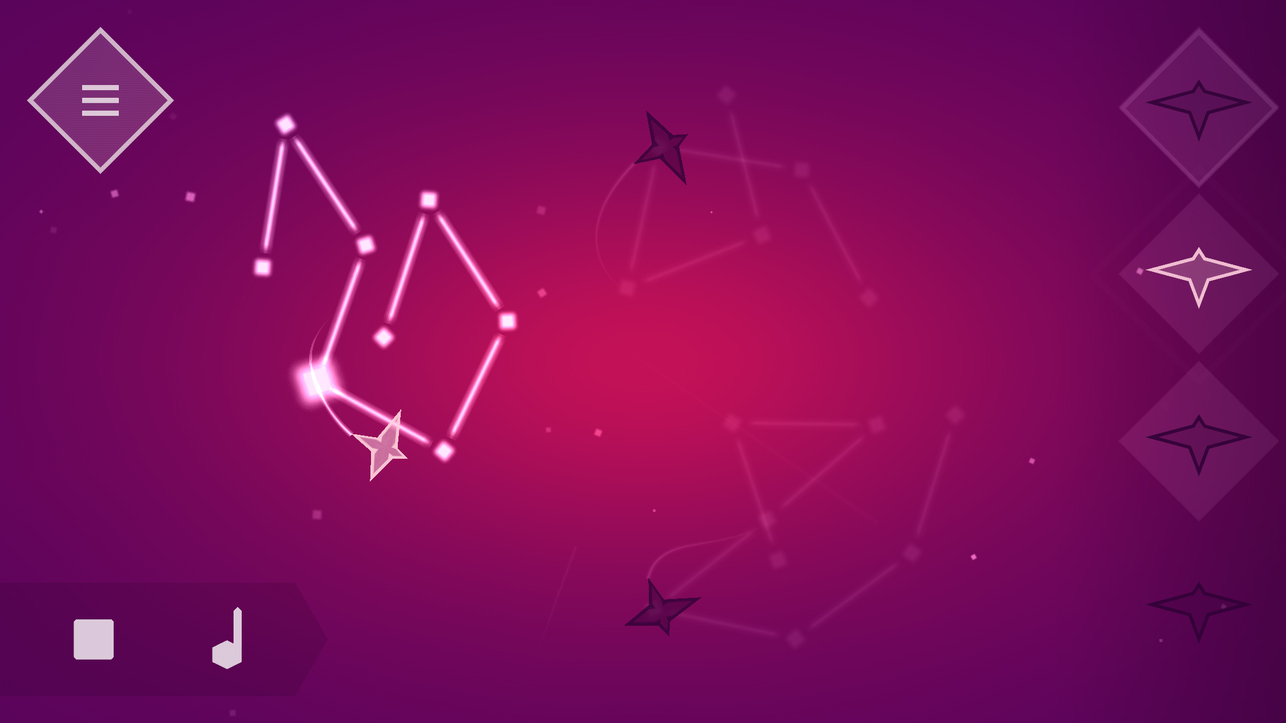
Songbirds
- $1.99/£1.99/AU$2.99
Songbirds is a set of three artistic vignettes that are part meditative aid, part musical instrument. Each of them finds you crafting melodies by directing digital birds across vibrant, minimal scenes.
The best of them is called The Sky. It has you draw pathways akin to constellations, each ‘star’ playing a note when a bird moves over it. With support for up to four simultaneous melodies, you can craft surprisingly intricate sounds, and if you make something you love, tap record to output a video.
The other two options are The Lake, where you control the timing of birds diving into water, and The Flock, in which you use square ‘moons’ to record compositions played out on abstract keyboards. Neither quite matches the intoxicating joy of The Sky, but together, this collection is calming, engaging, and beautiful.
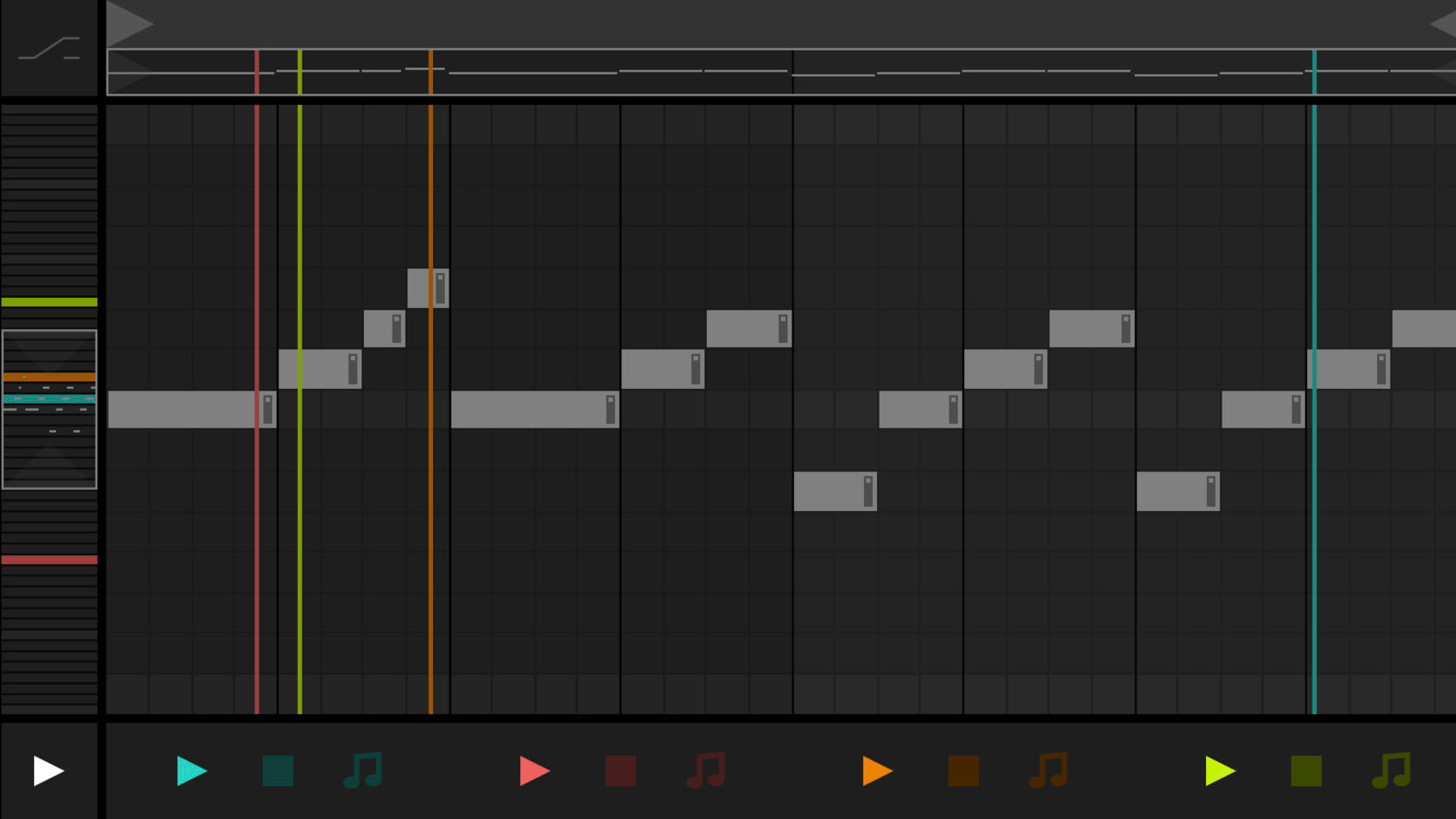
Fugue Machine
- $9.99/£9.99/AU$14.99
Fugue Machine is a tool for making music based on compositional techniques used by Bach. That perhaps sounds dry, but stick with us, because Fugue Machine makes it astonishingly easy to create beautiful audio.
You tap out notes on a piano roll, much like in GarageBand. The twist is that in this app, there’s only ever a single loop, but with up to four playheads moving over it. Each playhead is controlled independently, and this means you can play your loop at different speeds and pitches simultaneously, and in different directions.
The interplay of several variations of a melody quickly becomes hypnotic. For beginners, it’s a great way to start making music. For professionals, it’s also a must – not least given that Fugue Machine ships with comprehensive MIDI, AUv3, Ableton Link, IAA, and Audiobus support.
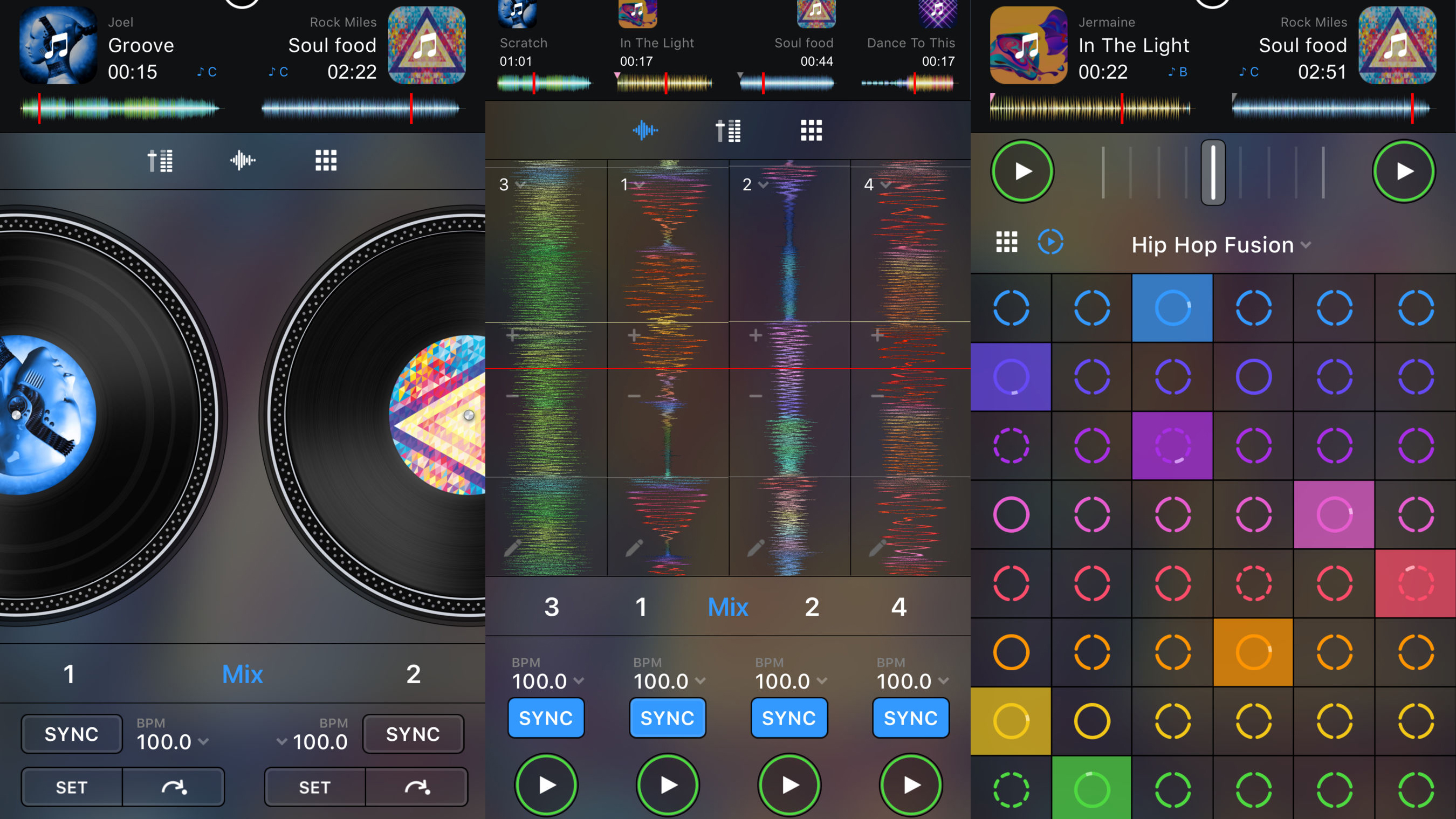
djay
- Free + $4.99/£4.49/AU$7.49 monthly
djay is a hugely powerful DJ app for iOS. Formerly released in various flavors, it’s now universal and a free download. On install, you get a basic two-deck system with crossfader, looping, and some effects. Go pro, though, and a world of high-end DJ power opens up.
At that point, you can run up to four decks, and dabble in video mixing. You get over 1GB of samples, loops, and visuals to trigger. There’s a ton of integration with a range of hardware solutions. Automix is available too, for when you can’t be bothered doing the DJ work yourself.
On iPhone, it’s naturally a bit fiddly compared to the iPad’s relative acres – but it’s also a very portable way to always have the app on you for experimenting with – and useful for hooking up to physical controllers.
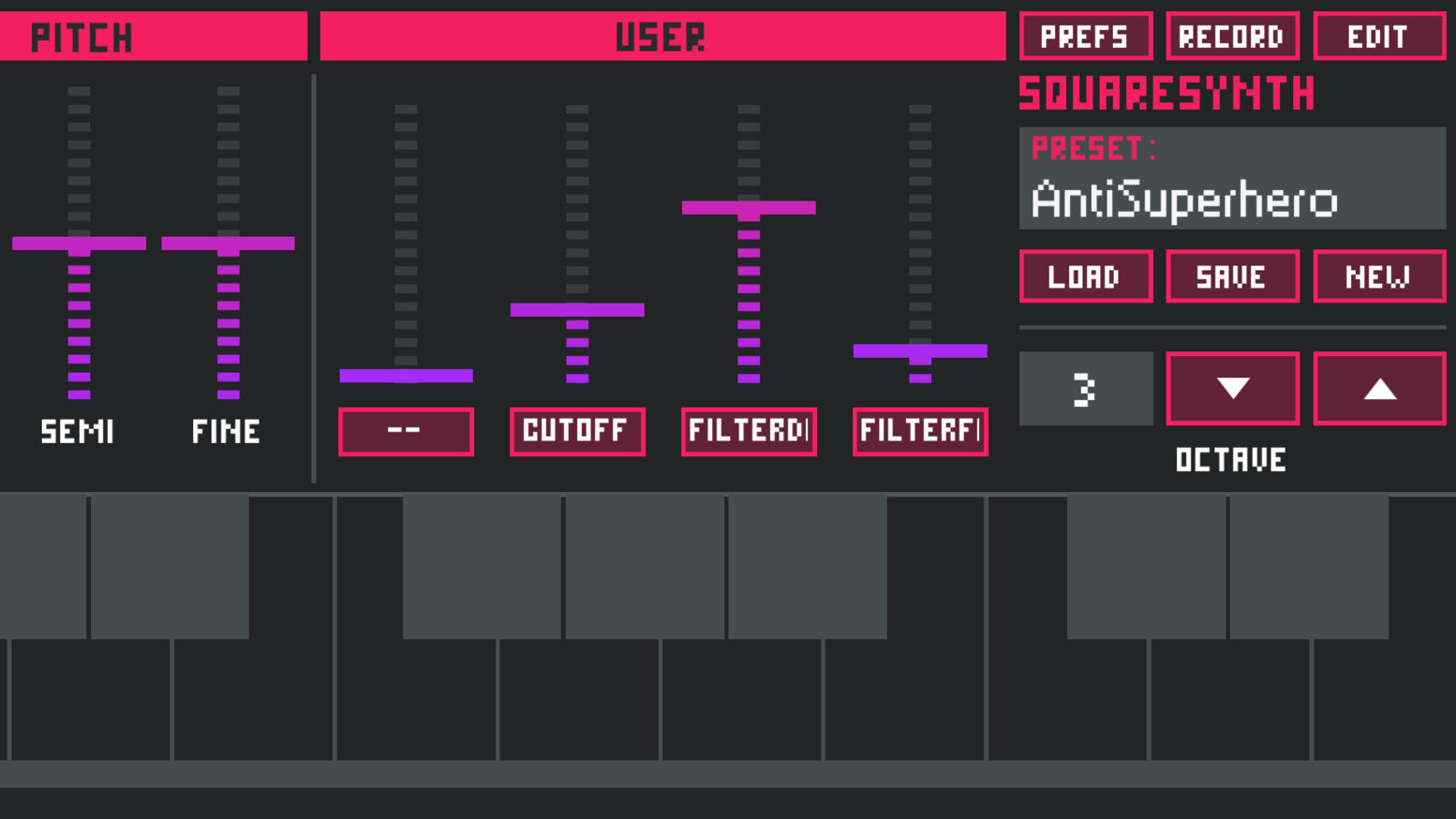
SquareSynth 2
- $4.99/£4.99/AU$7.99
SquareSynth 2 seems to have two reasons to exist. The first is to make you grin on selecting a preset, tapping a key, and having some retro audio blaze forth from your iPhone. The built-in sounds are reminiscent of noise you’d once have heard blasting from a Commodore 64 or NES; this in itself is all rather good fun.
But for musicians, this is a full-fledged synth. You can delve into each sound and muck about with its parameters – the results of which can be ear-thumpingly terrific. AudioUnit support also means this isn’t an isolated box – the entire thing can essentially be squirted into GarageBand. Only the slightly awkward interface on iPhone when editing lets it down a touch – but the great sounds more than make up for that.
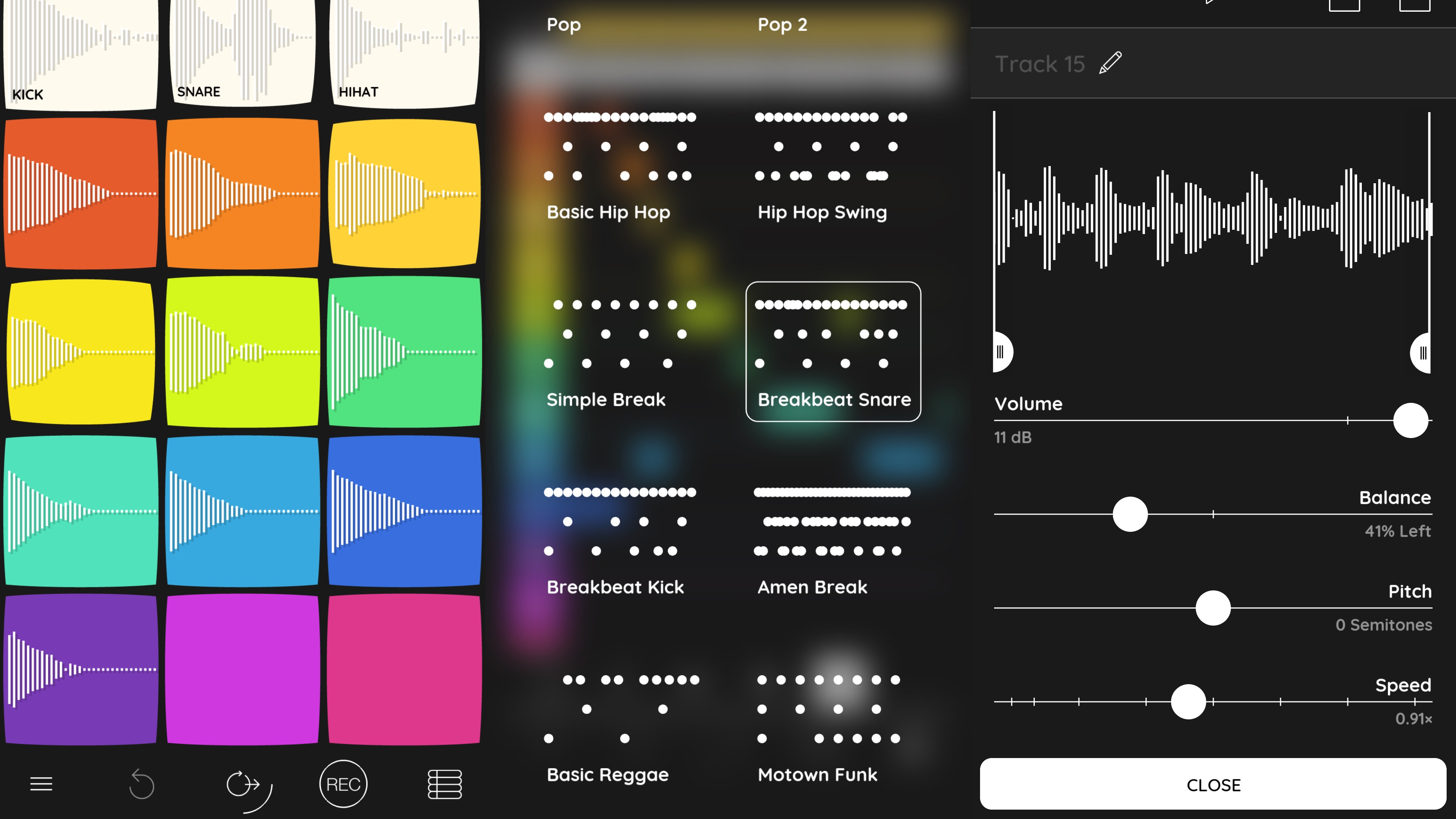
Samplebot
- $3.99/£3.99/AU$5.99
Samplebot is a colorful grid of buttons that you use to capture sounds. Press a pad, make a noise, and it’s then played by tapping the pad again. Fun stuff – but it turns out Samplebot has more layers than an onion.
Recorded sounds can be trimmed, and arranged in a sequencer. Pre-defined drum patterns are included, but you can also tap out your own. Beyond that, you can import audio from cloud services, Music, Files, or the clipboard, and manage sounds in-app. Tracks can be exported, and Samplebot can even be synced to other music apps.
In short, then, Samplebot is ideal for anyone wanting to make some noise, whether you fancy recording and playing back pots and pans being whacked, or creating entire songs.

GarageBand
- Free
GarageBand is a music creation app and recording studio. Ambitiously, it aims to suit newcomers and pro musicians alike – and it succeeds.
For newcomers, there are smart instruments that automate chords and riffs, and a grid pad for triggering samples and loops. Gain in confidence and you can plug in a guitar and use GarageBand’s excellent range of amps, experiment with the timeline, and create drum patterns in the Beat Sequencer.
For pros, though, this app connects to other apps via Inter-App Audio and Audiobus, can ‘import’ entire third-party apps as Audio Units, and enables you to record, arrange and mix up to 32 tracks.
The app’s a stunning achievement, and we suspect many long-time musicians can’t believe such a thing exists on a phone.

Brian Eno: Reflection
- $30.99/£29.99/AU$47.99
In a sense, featuring Brian Eno : Reflection in this round-up is a bit weird. Unlike other collaborations between musician Eno and software designer/musician Peter Chilvers, Reflection is broadly devoid of interaction. Instead, it effectively just plays Eno’s ambient Reflection album, but with some clever twists.
Unlike the standard album, which is the same every time you listen, the audio here has phrases and patterns within that continually interact in different ways, and subtly change as the day progresses, creating an endlessly changing version of the music. Likewise, the painterly visual on the screen slowly morphs before your eyes.
It’s pricey, but ultimately gives you endless Eno and is an intoxicating experience for anyone that likes their ambient fare. The man himself describes the app like sitting by a river: it’s the same river, but always changing. By contrast, the standard Reflections album initially sounds similar, but it’s a recording frozen in time, never changing.
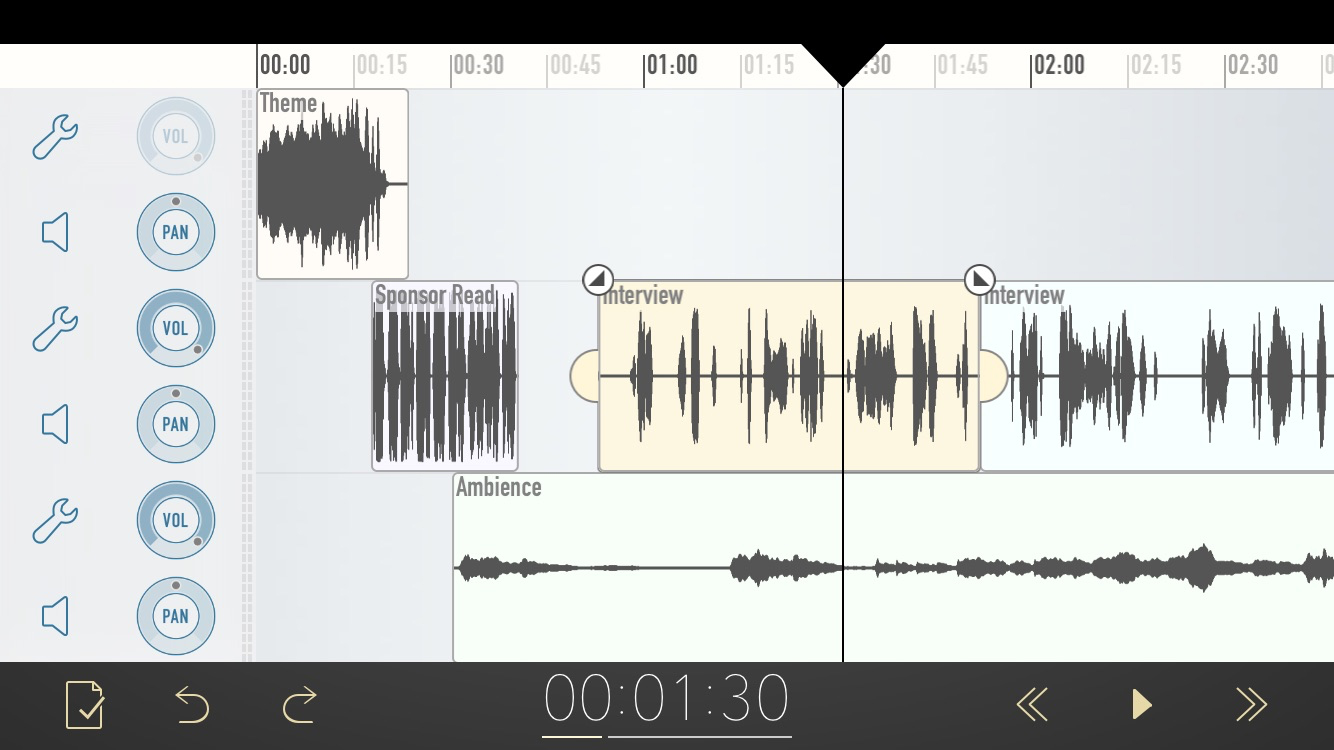
Ferrite Recording Studio
- Free + $29.99/£28.99/AU$46.99
Ferrite Recording Studio in its initial form appears similar to Apple’s Voice Memos, but under the surface, this is a powerful multi-track editor. Pay the IAP and you get a full-fledged podcast creation studio right on your iPhone.
Of course, you don’t have to delve into such complex fare. For free, you can work with a few tracks, make basic edits, and export your reworked audio. But pay money and you get eight-band EQ, a slew of effects, auto-leveling, and noise reduction. Project templates help you quickly create new podcast episodes, and presets can be created for chapters; said presets can be stored in templates or shared via iCloud.
This is top-notch stuff for creating podcasts on the go; and even if you usually edit on a PC or Mac, Ferrite works wonders as a sketchpad to bash out ideas on a commute.
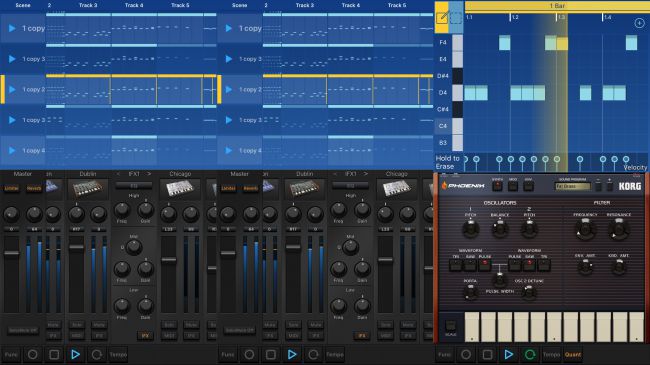
Korg Gadget
- $39.99/£38.99/AU$62.99
Let's immediately get one thing out of the way: Korg Gadget isn't cheap. It's not the sort of app you're going to download for some larks, use for a few minutes, and then casually toss aside. However, if you've any interest in making music — whether as a relative newcomer or jobbing musician — it is quite simply the best app available for iPhone.
Purely as a tool for live performance, Korg's app is first-rate. You get a bunch of miniature synths, referred to as 'gadgets'; they're geared towards electronic music, but still have plenty of range.
There are drum machines, a gorgeous bell synth, some ear-smashing bass instruments, and plenty of other options, whether you want to be the Human League for a bit or go all clubby.
Each synth comes with a slew of presets, but you can fiddle with dials and levers to make your own, which can be saved for later use.
When it comes to writing music, you can record live, tapping out notes on a tiny on-screen keyboard or by using a connected piece of hardware. Alternatively, there's a piano roll for tapping out notes on a grid as you do in GarageBand, creating loops to then combine into a song in the mixing-desk view.
Korg Gadget is one of the most flexible and intuitive music-making apps we've seen on any platform, and the deepest on iOS. It was superb on the iPad, but that it actually works — and is very usable — on iPhone is nothing short of astonishing.
The best office and writing apps for iPhone
Our favorite iPhone apps for file management, video memos, writing, email, spreadsheets, notes, presentations and calculations.
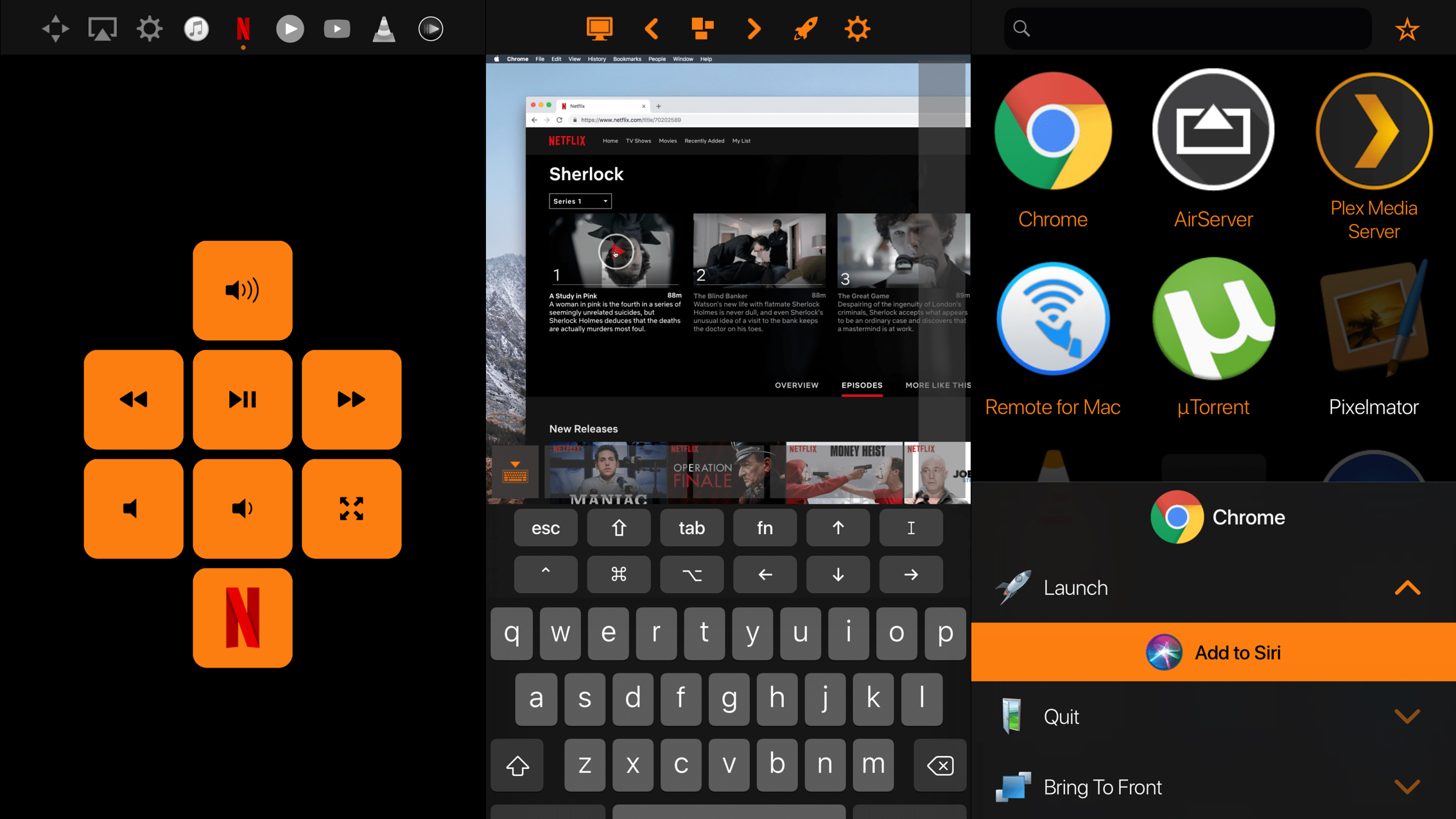
Remote Control for Mac – Pro
- $9.99/£9.99/AU$14.99
Remote Control for Mac – Pro enables you to control your Mac using your phone so you don’t have to bother with the Mac itself, and although there’s a lot going on in this app, it somehow gives you an interface that’s immediate and coherent.
Using taps, you can flick between media keys, direct input, app launching, triggering menu items, and special commands like restart and sleep. Naturally, some of these work better than others. During testing, responses to media buttons and app launching were instantaneous, but direct input with a Mac display on an iPhone is understandably fiddly.
Still, if you’ve a headless Mac you need to command – or just one elsewhere in your home you can’t be bothered actually walking over to – this app is first-rate stuff.
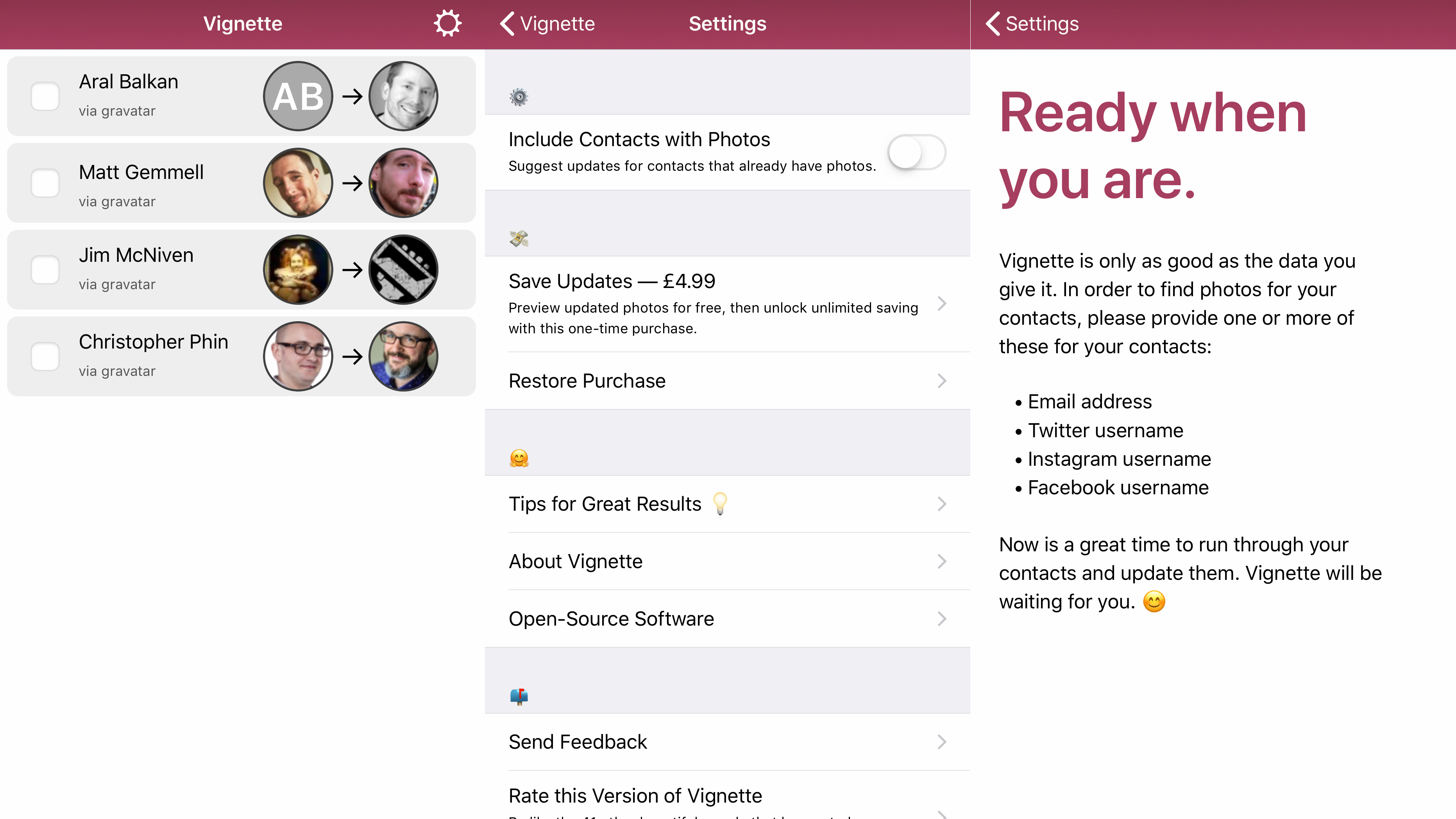
Image credit: TechRadar
Vignette
- Free + $4.99/£4.99/AU$7.99 IAP
Vignette is the solution when you have a Contacts app full of blanks rather than faces, but can’t be bothered to put in the work to fix this. Since other iPhone apps – including Messages and Mail – use these thumbnails, having them around can be a handy way to spot who’s chatting with you.
That said, for Vignette to work, you need to give it a hand. It essentially rifles through each contact in turn, finding relevant images from their social media accounts. You can then choose to update a contact’s thumbnail, or leave things as they are.
Neatly, Vignette does all the grunt work for free, so you can see whether or not it will work for you. Should you want to save thumbnails, only then will you need to pay the one-off IAP.

Memento: Modern Reminders
- $2.99/£2.99/AU$4.99
Memento: Modern Reminders is a modern take on reminders, and feels a lot like the app Apple should have made itself. The interface is clean, with bold headings, and is peppered with tools to speed up creating and editing reminders.
A smart keyboard row makes it a cinch to add a time or location alert. The former have friendly options like ‘tomorrow morning’, and these presets can be edited and added to. Notifications are similarly powerful, with snooze and move options.
Browsing is superior to Apple’s app, too. There are views to zoom through all your reminders (grouped by list), or just ones with time alerts attached. Add in dark mode and Apple Watch support, and you’ve got a superb replacement for a tired stock app.
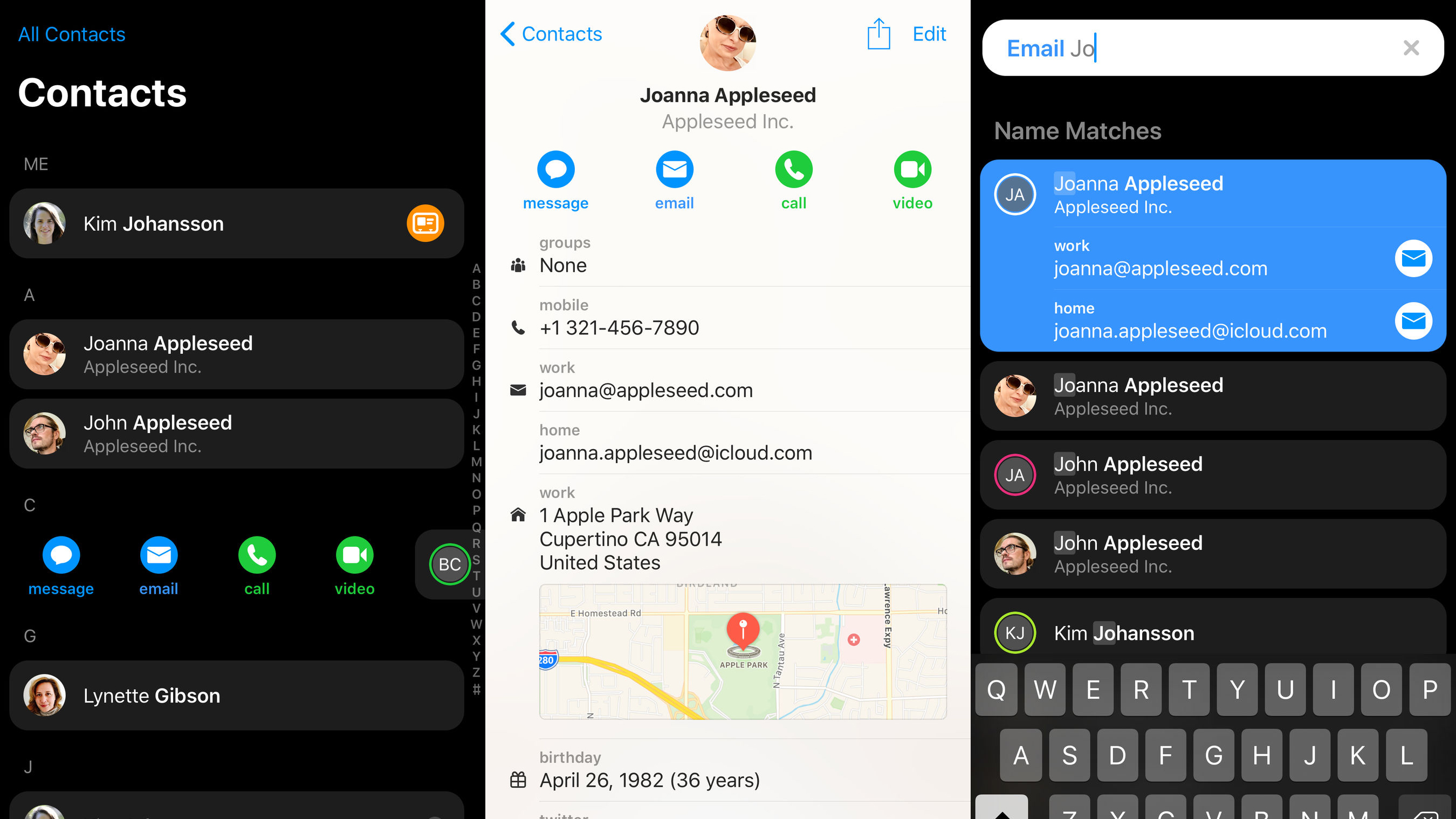
Cardhop
- $3.99/£3.99/AU$5.99
Cardhop is designed to effectively replace Contacts on your iPhone. It uses the same iCloud information (so you can switch back to Apple’s app at any point), but presents it in a far more usable manner.
Individual contact cards are more clearly laid out. Tapping on a phone number or email doesn’t trigger a call or open Mail – instead, you get options regarding what you want to do with that data. The notes field usefully remains anchored to the foot of the screen, so it’s always available.
Back in the main view, there’s a dynamic search field that uses natural language, so you can input phrases to get at information, or to add new contacts. In all, this is an essential app for anyone who regularly dips into Contacts, but wants something better.
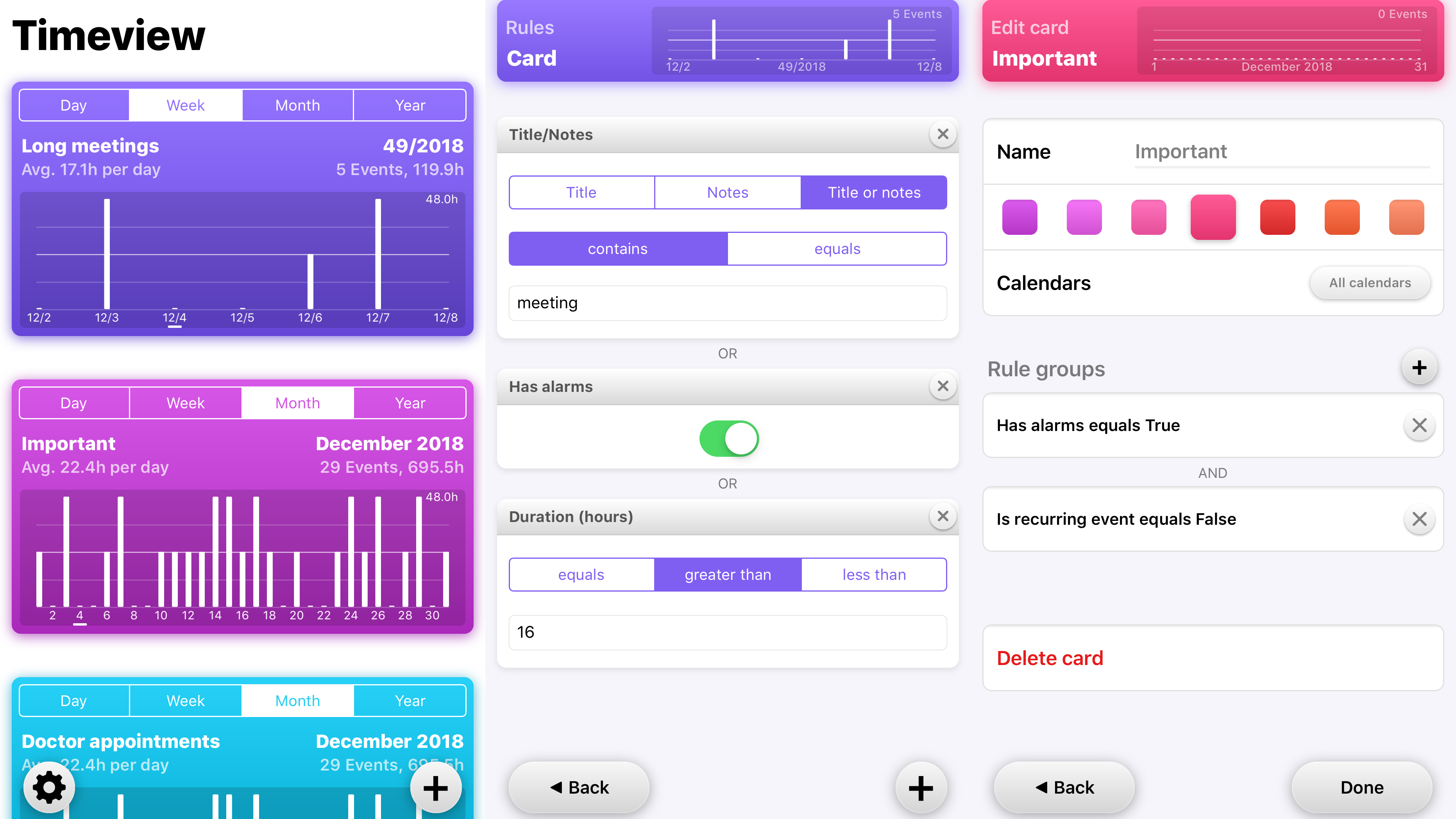
Timeview
- Free + $4.99/£4.99/AU$7.99
Timeview gives you alternate interpretations of and insight into your calendar data. Instead of events plastered across a day, week, or month view, this app is all about statistics, and presenting them as easy-to-scan cards.
The app delves into your existing iOS Calendar data, and the cards are based around user-defined rule-sets. That might sound complex, but it really isn’t. You can, for example, quickly create cards to outline calendar events that include the word ‘meeting’, those from specific calendars, recurring events, and so on.
For light users of Apple’s Calendar, this won’t be especially thrilling. But we imagine if your calendar is a mess of entries, all fighting for attention, the means to make sense of the chaos with Timeview’s straightforward, very readable interface will be very appealing.
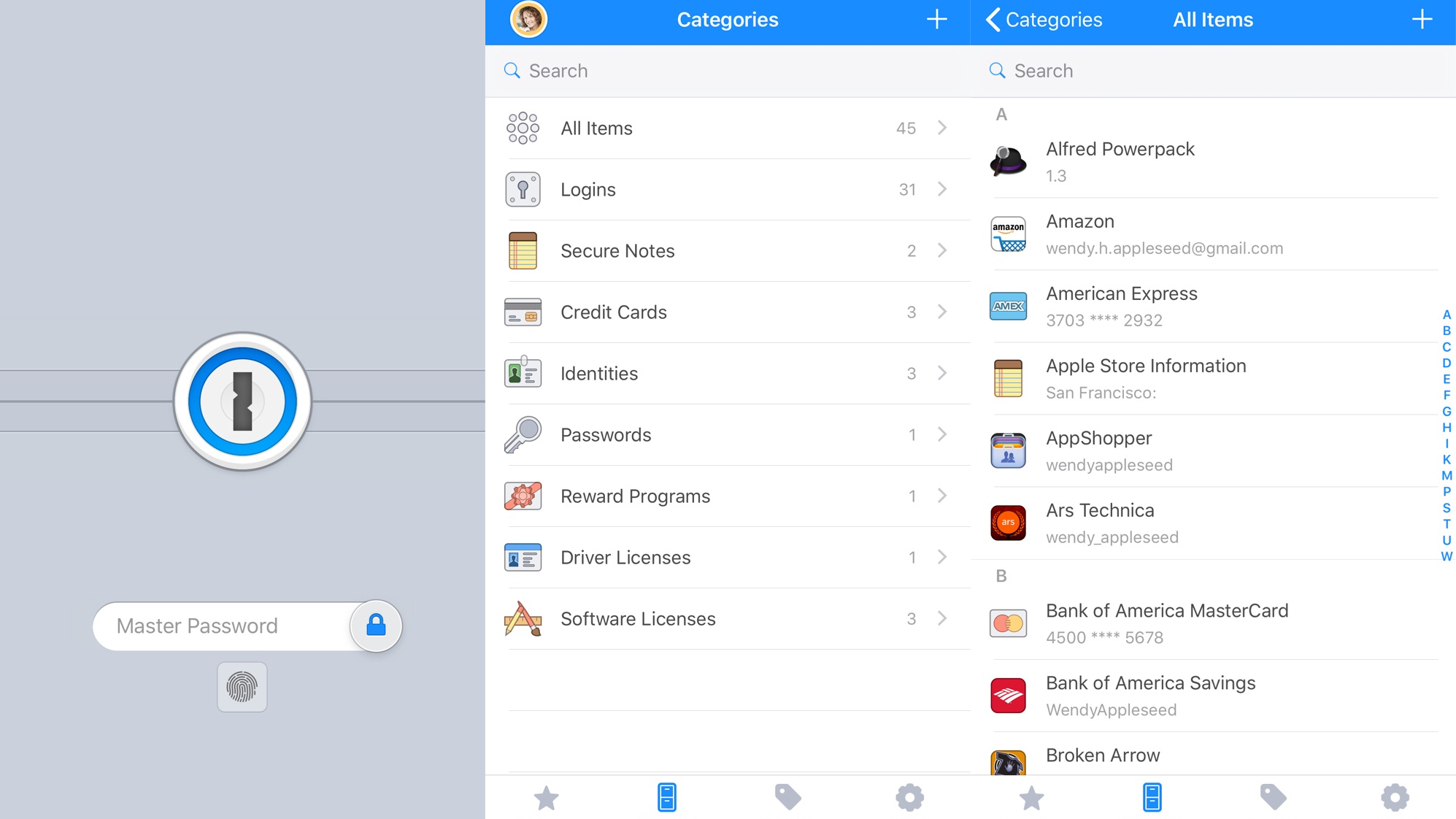
1Password
- $3.99/£3.49/AU$5.99 per month
1Password, like iCloud Keychain, is used to store website logins and payment information. But this app then goes further, being able to house details for servers, app license details, notes and identities.
The other big advantage is 1Password being a standalone app. Launch it and use Face ID or Touch ID and you’ll quickly be browsing your logins and data, which can be further refined through the use of favorites and tags. A first-rate password creator is bundled, too, for when you need a new or replacement website password.
The core app is free to try for 30 days, after which point a subscription is required. However, this unlocks the app across a range of supported platforms, including macOS, Android and Windows – something iCloud Keychain cannot compete with.
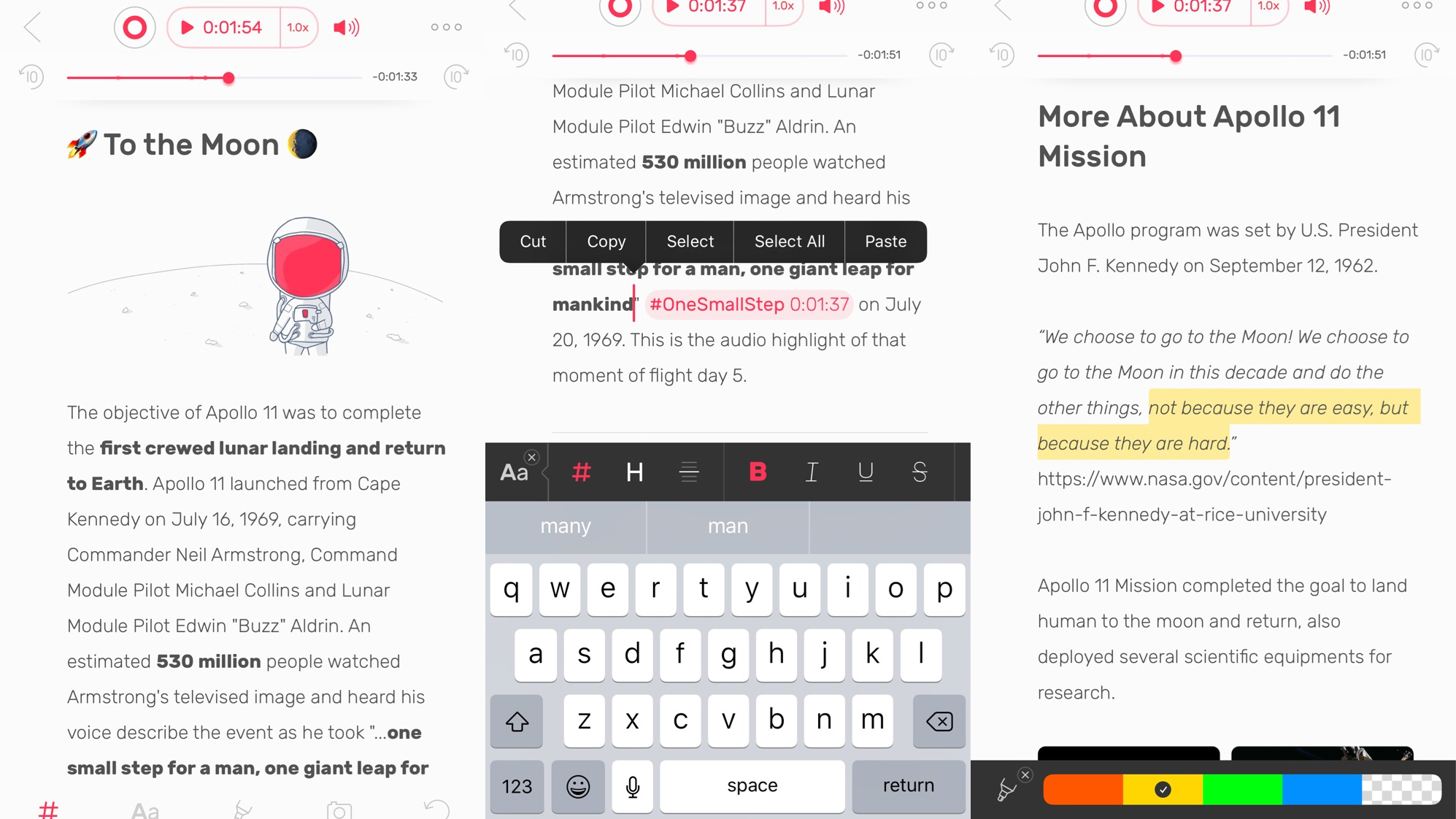
Noted
- Free or $0.99/79p/AU$1.49 per month
Noted is a rich-text notepad and voice memos app combined. This isn’t a new concept on the iPhone – other apps do much the same. But Noted differentiates itself by enabling you to mark important moments within the recording.
This is achieved using #TimeTags. As you type up notes while recording, tapping a button places a tag inline. When you subsequently tap a tag, your recording instantly starts playing from the relevant moment. This means you can take basic notes during a meeting or lecture, and then flesh everything out later, without having to constantly scrub through a recording to find the relevant parts.
You’ll need a subscription to make the most of the app – not least to record more than a handful of notes – but for many people, #TimeTags alone will be worth the outlay.
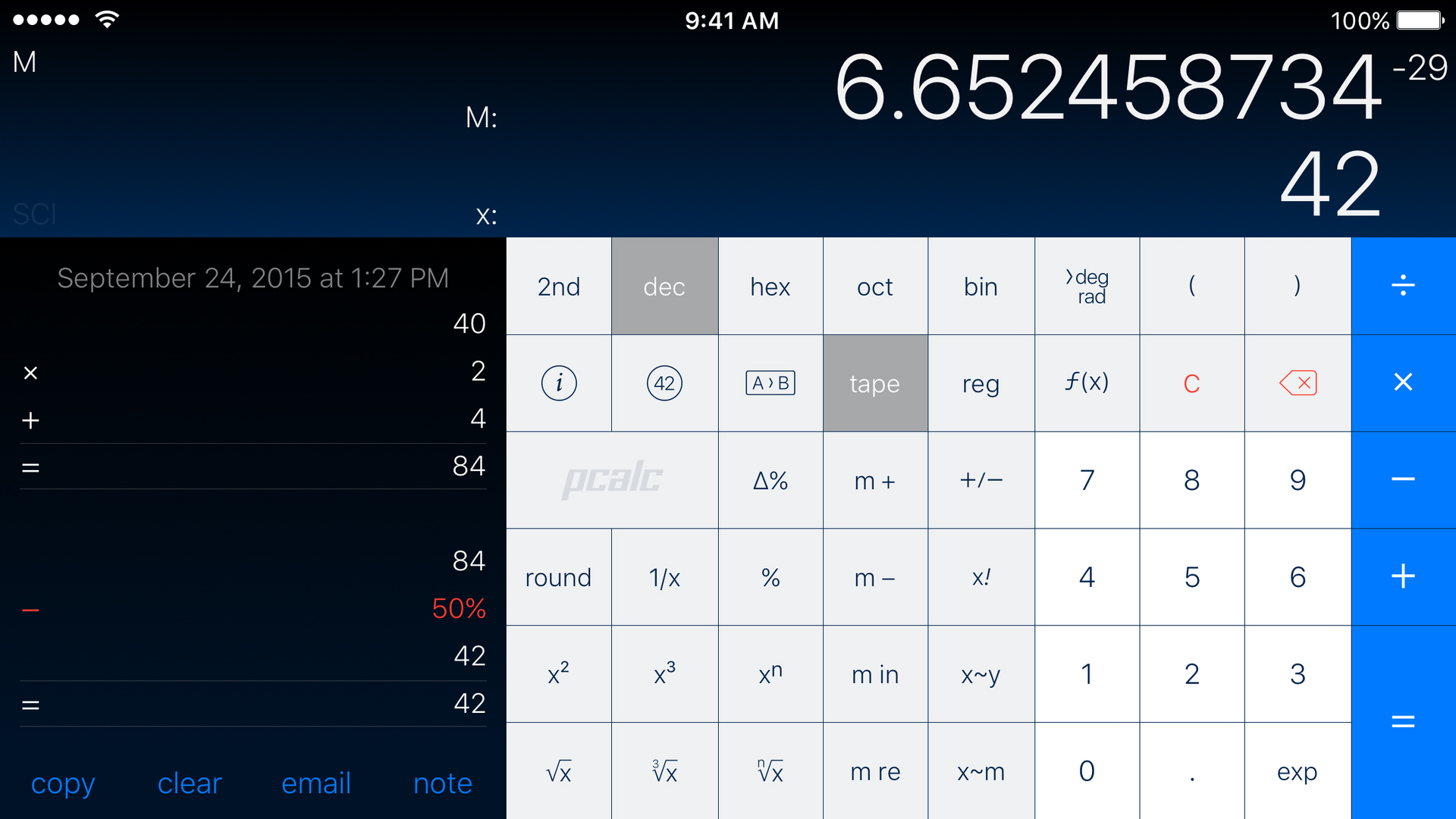
PCalc
- $9.99/£9.99/AU$14.99
PCalc is a traditional calculator – like the super-powered equivalent of something you might find sitting on a desk. If you want something more conventional than the calculator meets sort-of spreadsheet Soulver, PCalc is simply the best there is on iPhone.
For a start, the app’s almost absurdly feature-packed. There’s multiline and RPN, a paper tape, and multiple undo. Need conversions and constants? Done. Engineering and scientific notation? Sure. You can even edit the individual buttons, if you for some reason want the 6 key to be massive.
The app has a slightly odd sense of humor, too. Head into the Help section in its Settings and fire up the ARKit About PCalc screen, and lob anti-gravity bananas about the place. This is a calculator with leaderboards and achievements, and – we say again – anti-gravity bananas. Buy it.
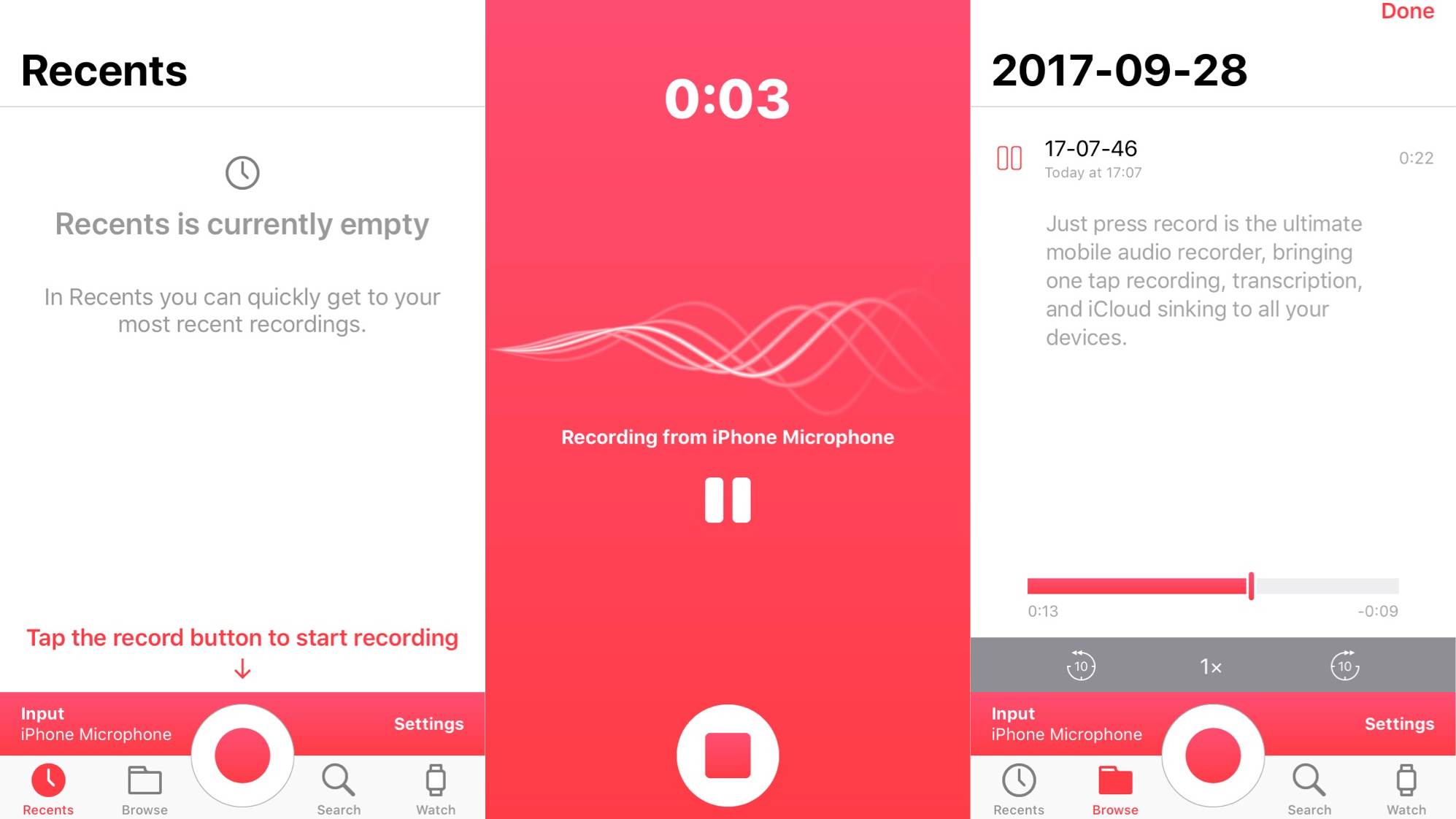
Just Press Record
- $4.99/£4.99/AU$7.99
Just Press Record is a highly usable audio recorder and transcription tool. It’s also an excellent example of how to take an app that’s extremely simple and add new features without drowning it in complexity.
To start, you still tap a big, red button, and then record whatever you want to say. Saved recordings head to iCloud, meaning they can be accessed on any device. On your iPhone, they’re found in the Recents and Browse tabs, the latter listing them by date.
There’s also a Search tool – which might seem redundant until you realize every recording is automatically transcribed. Naturally, this doesn’t always nail context – during testing, it mixed up ‘synced’ and ‘sinked’ – and you have to manually say punctuation (such as ‘comma’).
Still, this means that you can share text rather than just audio files, and that every utterance you make can potentially be found by keyword, instead of you scrabbling through a huge list of recordings. It’s really smart stuff.
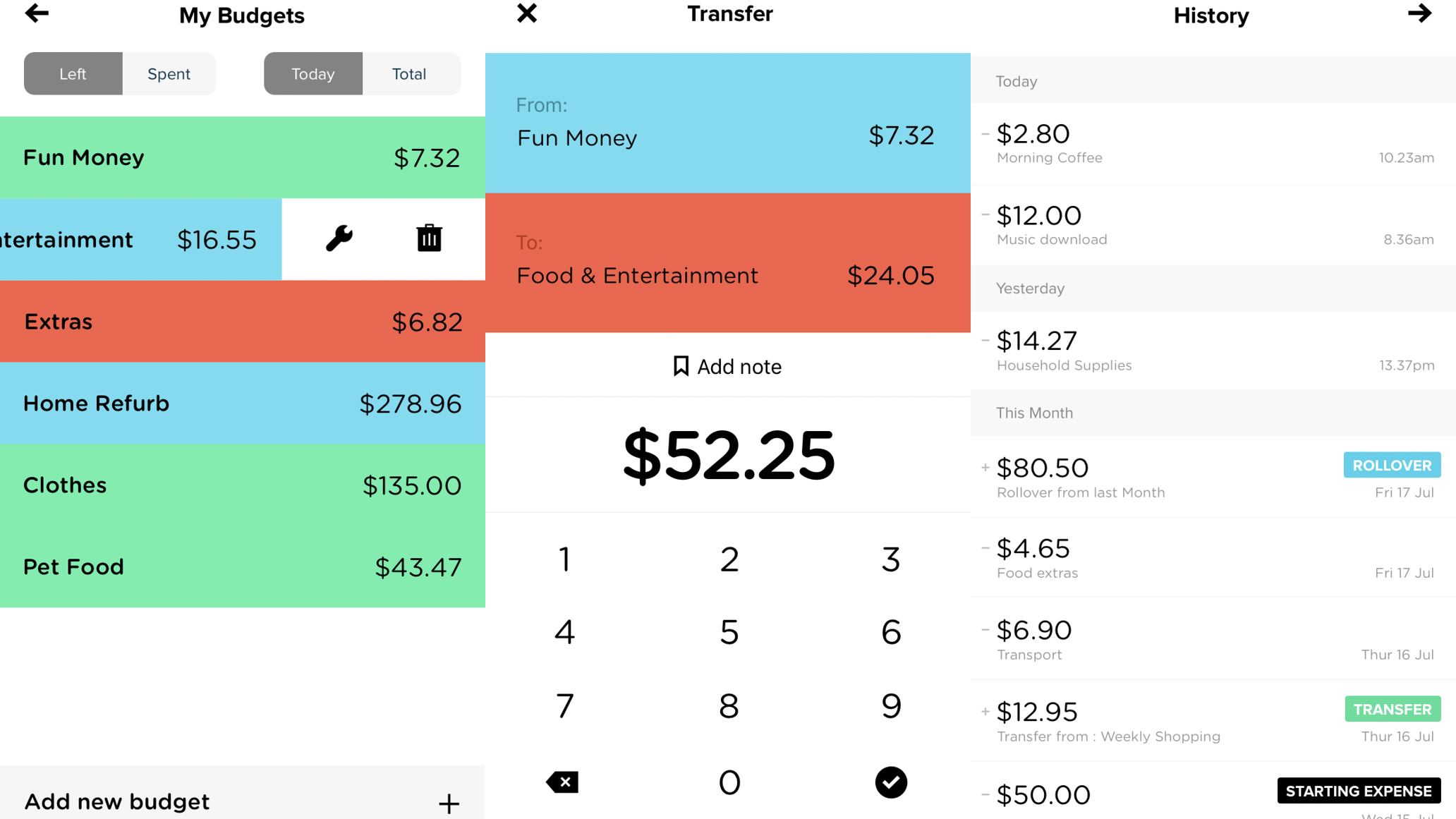
Pennies
- $3.99/£3.99/AU$5.99
Pennies is all about managing your money. But whereas finance trackers have a tendency to be dry and complicated, Pennies goes for a much friendlier approach. Using the app’s colorful, straightforward interface, you can quickly and easily define new budgets around any kind of topic, and add or remove money from them.
Much of the app’s effectiveness lies in the way it encourages you to categorize your spending. Want to cut down on coffee? Create a ‘coffee’ category and get a monthly and daily budget, along with a visible reminder of when you can next spend.
Your entire history always remains available in an ongoing scrolling list, and because Pennies syncs across devices, your figures are readily available on iPad and Apple Watch too. In short, it’s the budget tracker for the rest of us.
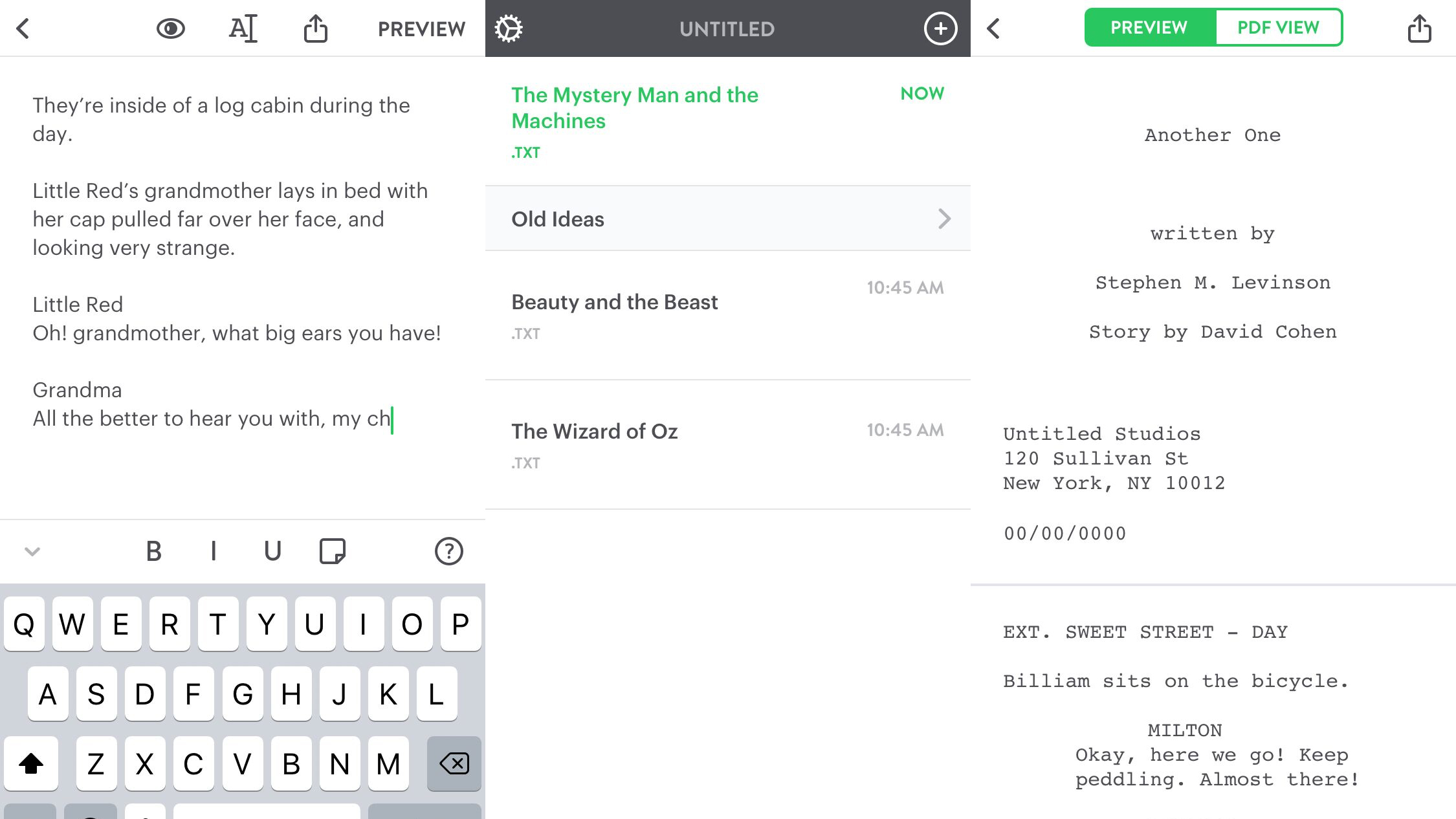
Untitled
- $9.99/£9.99/AU$14.99
Untitled rethinks screenwriting. Rather than you having to remember how to format your next Hollywood blockbuster, Untitled prioritizes you getting ideas down, through providing a helping hand regarding how your script should look.
This works by way of simple-to-remember shorthand, such as placing dialogue underneath a character’s name, or ‘>’ before a transition. The app’s also intelligent enough to reformat scene headers (intro/location/time) from plain English into the correct style.
On iPad, Untitled is a friendly screenwriting tool, but its relaxed, note-taking approach really feels at home on iPhone. It’s not a tool you’d likely use to fine-tune a fully polished screenplay, but it’s excellent for starting one – wherever and whenever inspiration strikes.
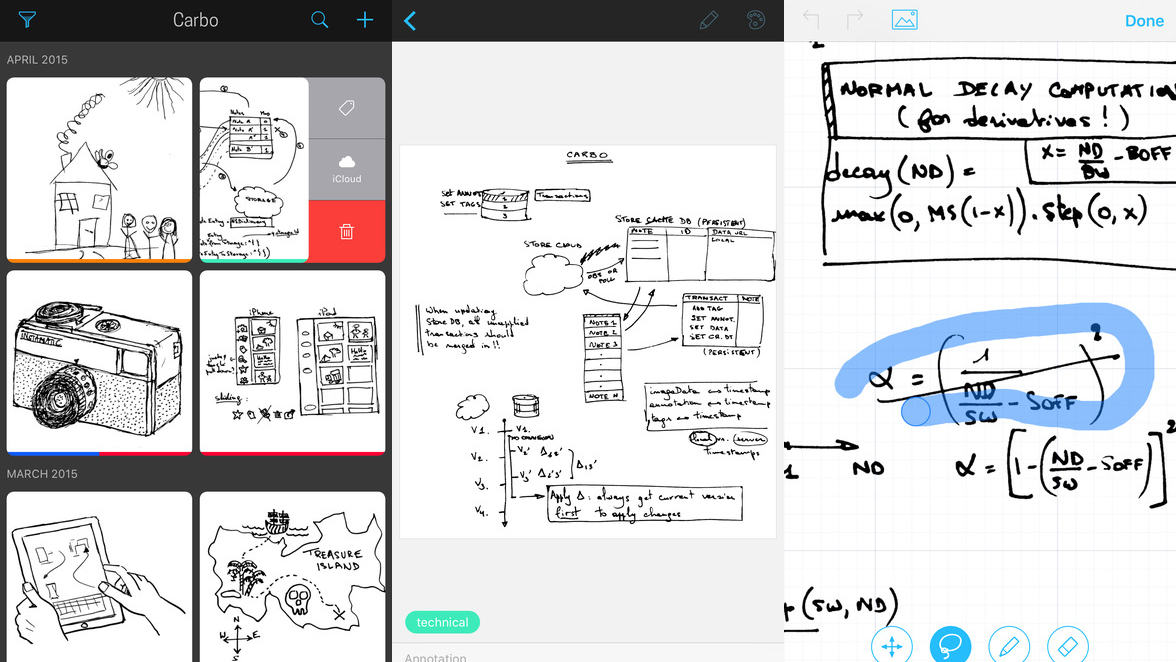
Carbo
- $7.99/£7.99/AU$12.99
You can of course use a wide range of apps for storing real-world scribbles – photograph a journal page and you can fling it at the likes of Evernote, say. But Carbo tries something more ambitious. Your sketches and notes are cleaned up, and converted to vectors, while preserving your original stroke.
What this means is that images within Carbo retain the character of your penmanship, but are also editable in a manner standard photographs are not – you can select and move specific elements that Carbo intelligently groups, adjust line thicknesses throughout the entire image, add annotations and tags, and export the result to various formats.
It's a friendly, intuitive app to work with, and efficient, too – a typical Carbo note requires only a tenth of the storage as the same image saved as a standard JPEG photo.
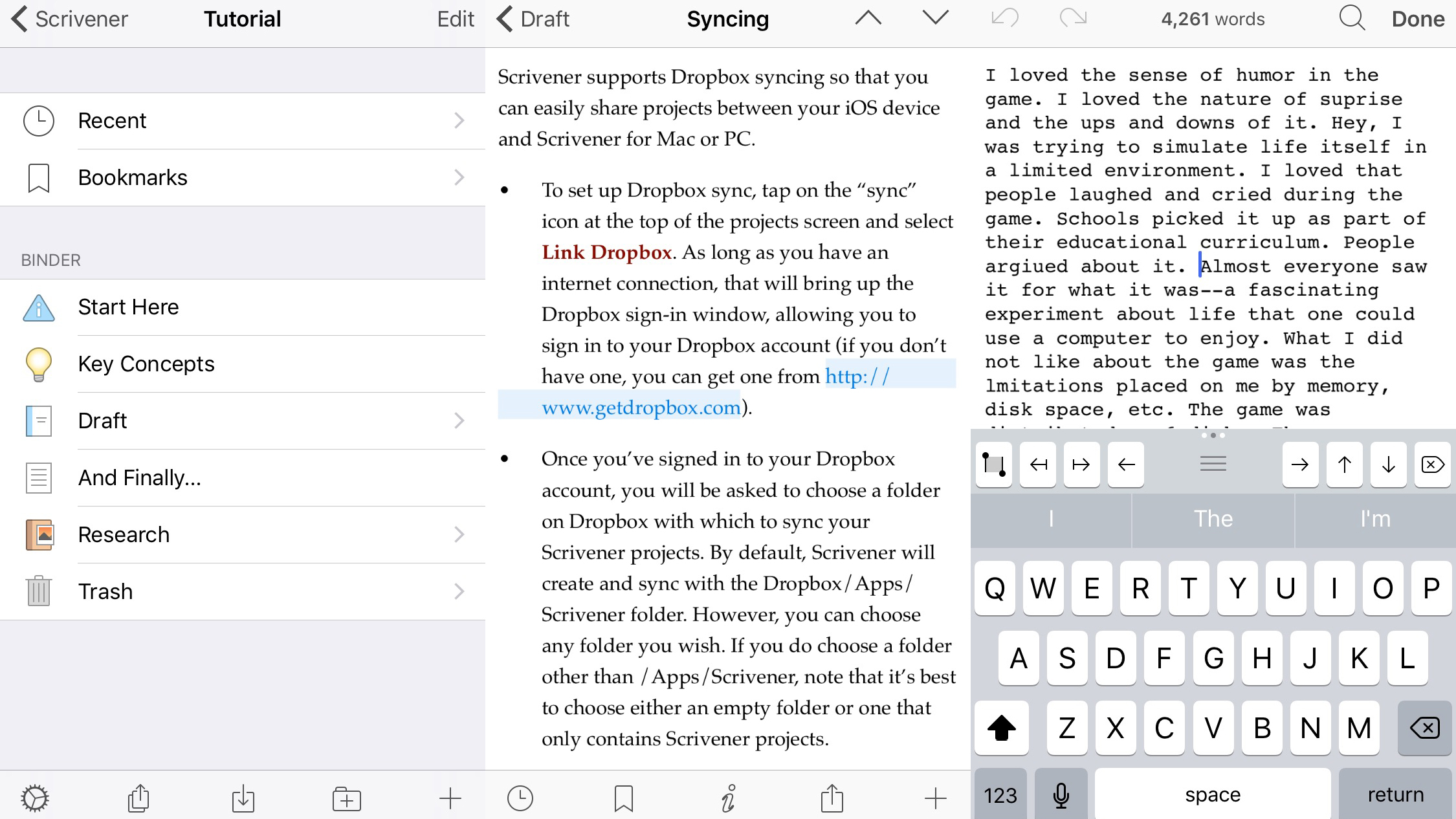
Scrivener
- $19.99/£19.99/AU$30.99
On the desktop, Scrivener is popular with writers crafting long-form text. On iPad, the app is - amazingly - barely altered from the PC and Mac release; but Scrivener on iPhone is a slightly different prospect.
That's not to say this isn't a feature-rich and highly capable product. You still get a solid rich-text editing environment and a 'binder' to house and arrange documents and research, before compiling a manuscript for export.
What you lose on the smaller screen is those features that require more space: a two-up research/writing view; the corkboard for virtual index cards.
But Scrivener is still worth buying - although you're unlikely to write an entire screenplay or novel on an iPhone, you can use the app to take notes, make edits, and peruse your existing work, wherever you happen to be.
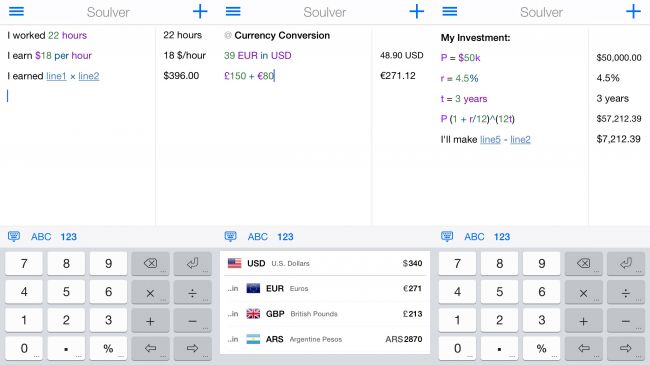
Soulver
- $2.99/£2.99/AU$4.49
Traditional calculator apps are fine, but even if they come with digital tape, you don't get figures in context. By contrast, a spreadsheet is overkill for most adding-up tasks. Soulver is a neatly conceived half-way house — like scribbling sums on the back of an envelope, but a magic envelope that tots everything up.
You get two columns. On the left, you type everything out, integrating words as you see fit. On the right, totals are smartly extracted. So if you type 'Hotel: 3 nights at $125', Soulver will automatically display $375 in the totals column.
Line totals can be integrated into subsequent sums, ensuring your entire multi-line calculation remains dynamic — handy should you later need to make adjustments to any part.
Given the relative complexity of what Soulver's doing, it all feels surprisingly intuitive from the get-go. There are multiple keyboards (including advanced functions and currency conversion), you can save calculations and sync them via iCloud or Dropbox, and it's even possible to output HTML formatted emails of your work.
The best productivity apps for iPhone
Our favorite iPhone apps for being productive with launchers, focus timers and to-do lists.
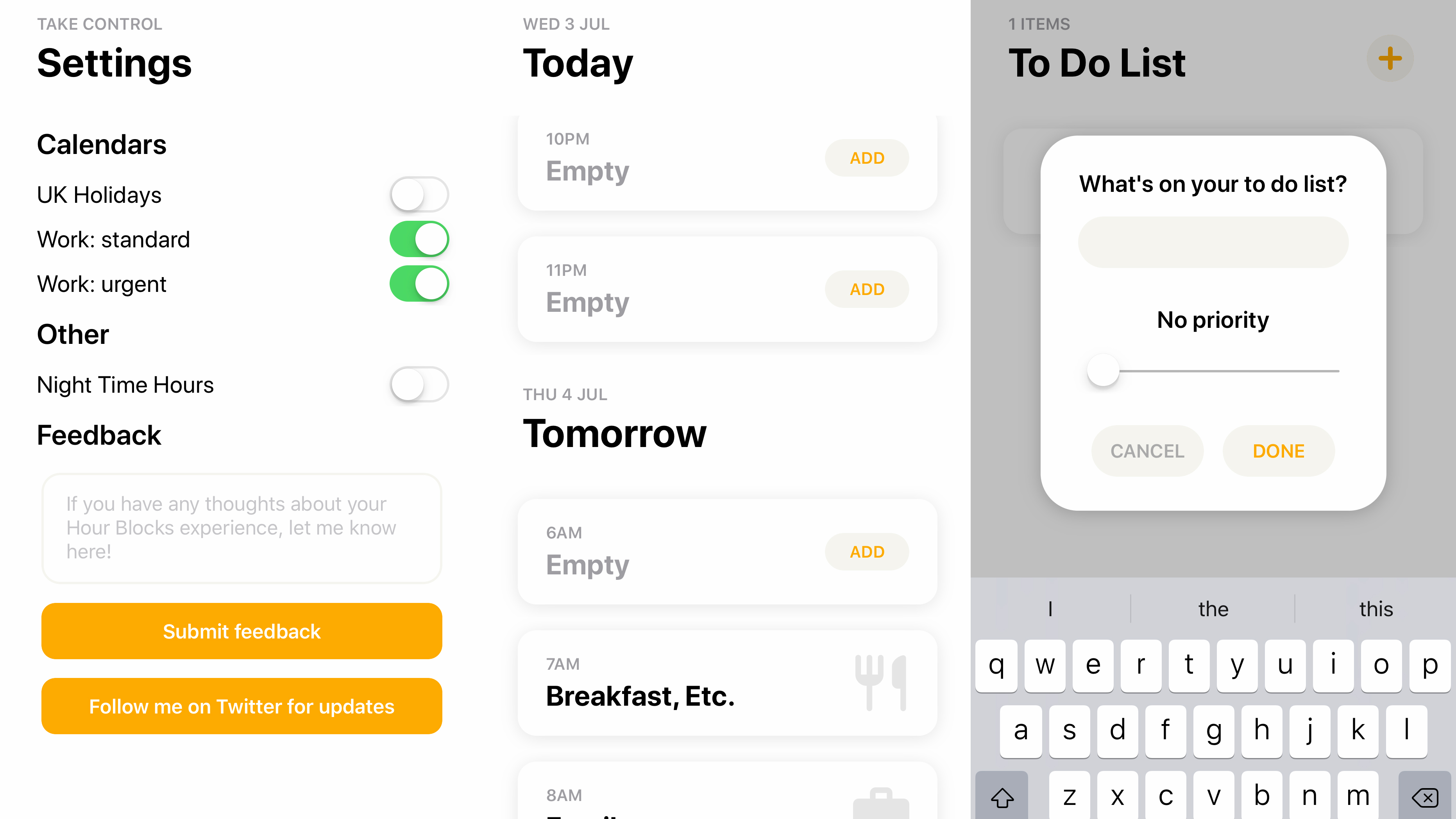
Hour Blocks
- $0.99/£0.99/AU$1.49
Hour Blocks solves key problems in digital calendaring: a tendency toward clutter, and an emphasis on packing as much in as possible. Overlapping tasks crammed into little space rob you of focus and increase stress. Hour Blocks, though, radically alters how events are presented.
Instead of multiple items competing for space, each hour block can have just one entry. This can be added in-app, or pulled from existing iPhone calendar data. The only real distraction is a simplified to-do manager, which seems a logical, useful inclusion.
Hour Blocks is probably too limited to be your only calendar, but with its low price and razor-sharp focus, it’s worth trying to help you make the most of the time you have, and give your attention to what really matters.
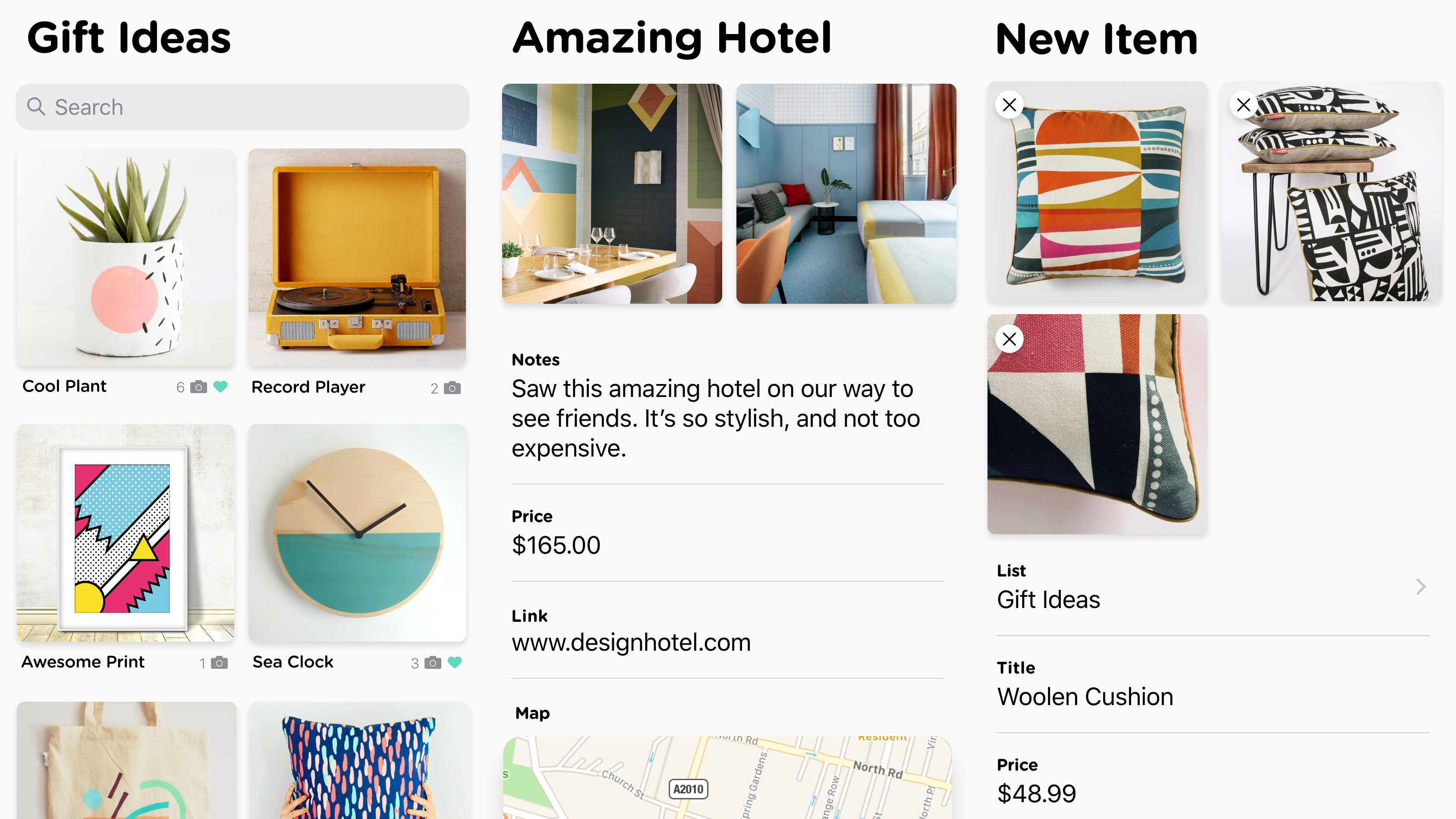
Image credit: Super Useful Ltd
Magpie
- Free + $2.99/£2.49/AU$4.49 per month
Magpie reimagines notes and reminders for the visually inclined. The experience focuses on photographs rather than being words-first. Create new lists and items, and you’re invited to take snaps or load existing ones. When browsing lists, your eyes are dazzled by the imagery rather than bogged down in text.
That said, Magpie doesn’t eschew words entirely. You can add brief notes to any list item, and for the likes of gift lists, it’s possible to add prices, links, and even locations. Once you’ve built up a bit of a collection, Magpie shines especially bright on iPhone, as you browse your items.
For a few bucks a month, there’s plenty of value here if you want a creative spin on note-taking and lists – and one that’s far more sleek and arresting than the closest equivalent Apple provides itself.
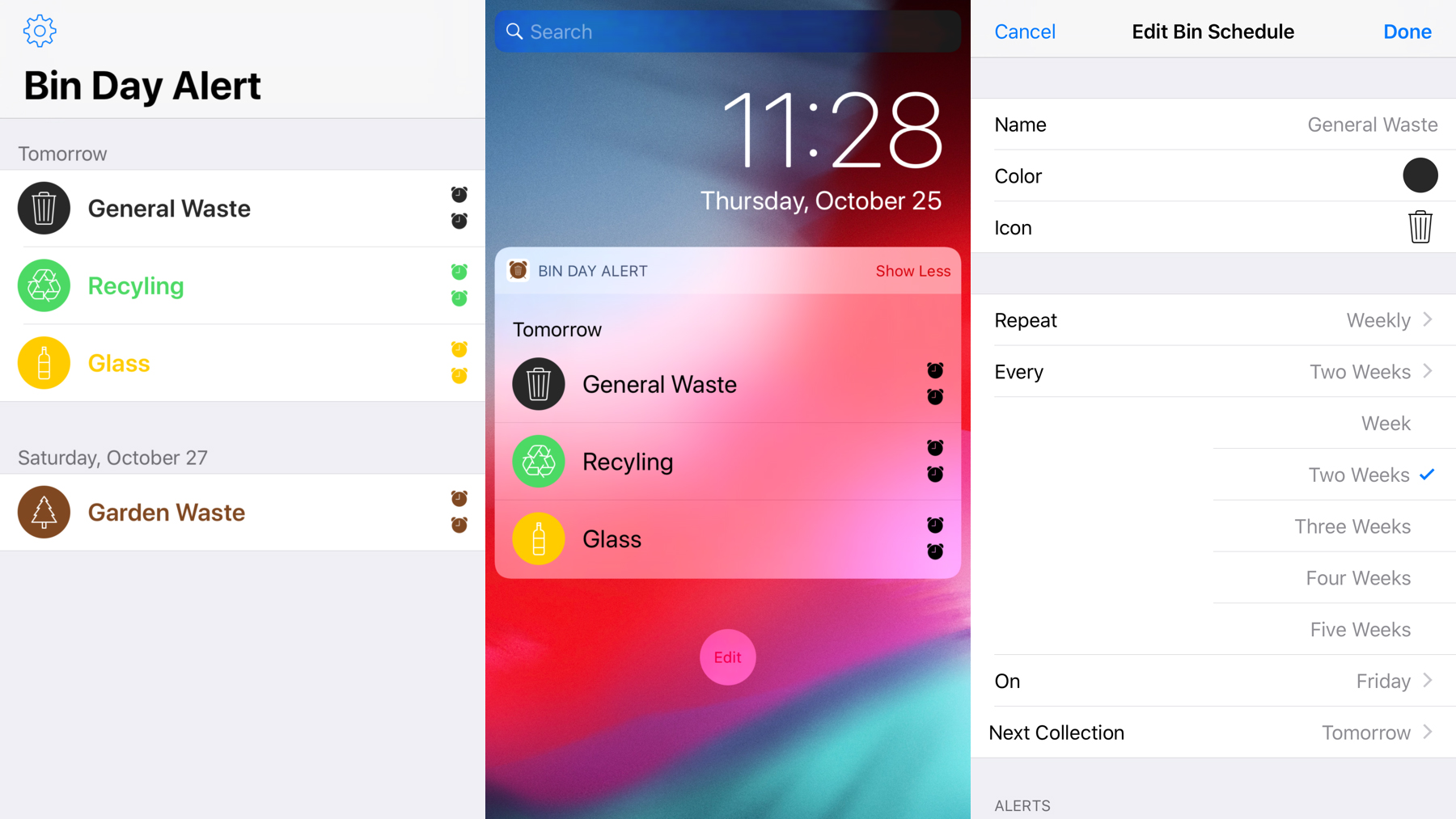
Bin Day Alert
- $1.99/£1.99/AU$2.99
Bin Day Alert does what you’d expect from its name – alerts you when it’s bin day. But although this is every inch a focused app, it also has the flexibility to cater for any refuse system, wherever you happen to live (and however complex the collection cycles are).
So rather than limiting you to a basic schedule, Bin Day Alert invites you to define each type of trash you deal with, give it a color and an icon, and outline when collections occur. For example, if your recycling is picked up every three weeks on a Wednesday, the app has you covered.
Beyond that, you set alerts. Handily, you’re not limited to one – so if you casually dismiss one the evening before, you can get a further reminder on the day itself to put a bin out.

NordVPN
- Various subscriptions
NordVPN is a VPN app for iPhone. It encrypts your internet traffic, making it effectively impossible for anyone else to decipher. The company doesn’t keep logs of activity, and because you can use servers in any country, the app lets you circumvent many geographic blockers.
That might all sound a bit nefarious, but there are many reasons why a VPN can be handy, including enhancing safety when using public Wi-Fi, and getting at media subscriptions when on holiday.
What sets NordVPN apart from much of the competition is a combination of reliability, performance, and usability. Setting things up is a cinch, and although speeds are slower than on vanilla Wi-Fi, you won’t feel the hit.
Once you’ve downloaded the app, do, though, subscribe via the NordVPN website, because the regular offers are significantly cheaper than signing up in-app.
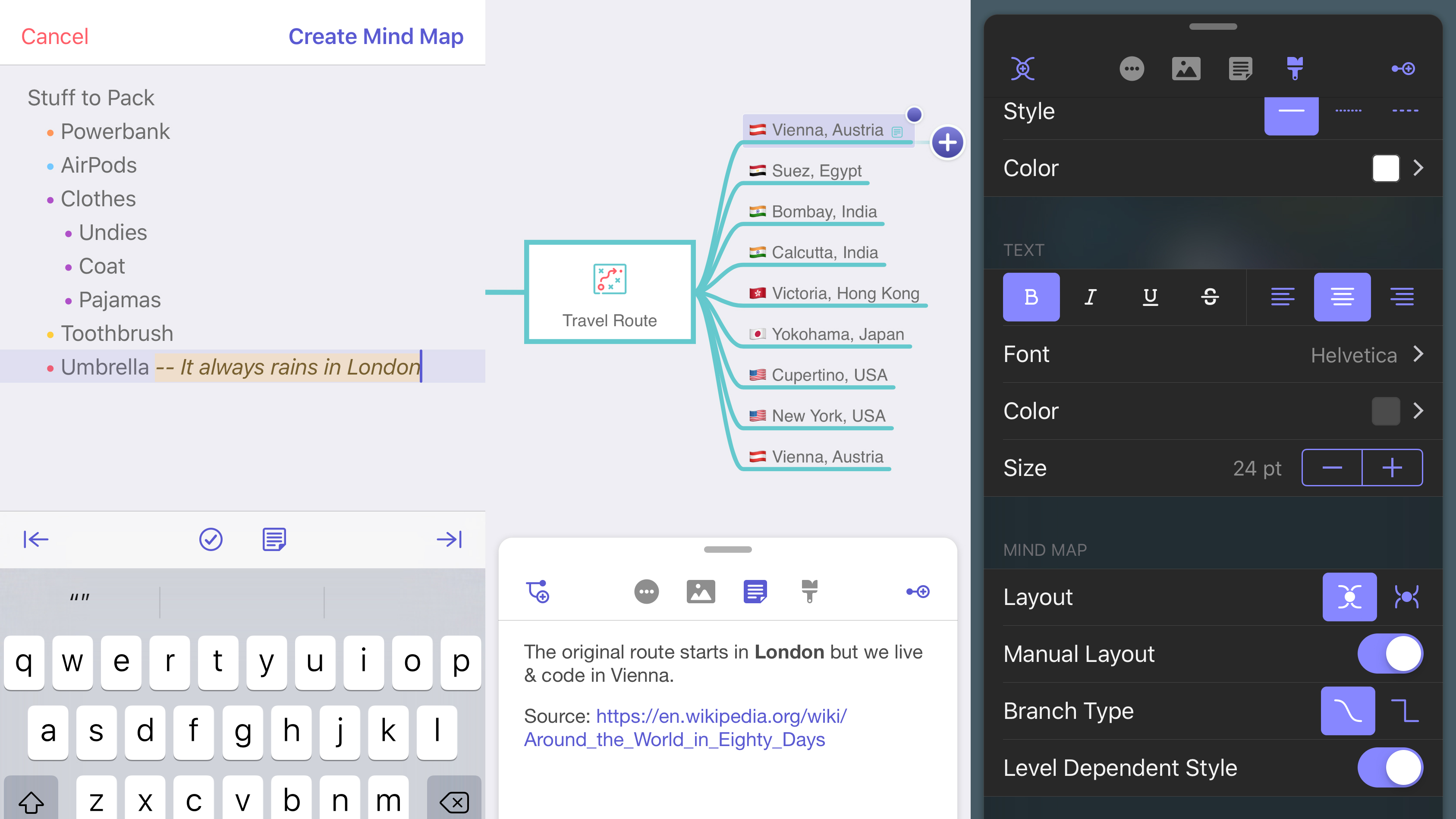
MindNode 6
- Free + $14.99/£14.99/AU$22.99
MindNode 6 is a desktop-grade mind-mapping tool for iPhone.
Creating complex diagrams perhaps isn’t best suited to a small handheld device, but MindNode speeds things along with Quick Entry. With this feature, you create a bullet-point list, tap a button, and the app instantly transforms your thoughts into a mind map.
After that, the sky’s the limit. You can snap nodes and branches into position or go free-form, and add labels, stickers, and images for more context. If everything gets a bit complicated, you can hide connections, and/or focus on one part of your map.
Full iCloud support lets you start on your iPhone and pick up elsewhere; but from any device, you can export to a range of formats. Top stuff, then, when you need to get ideas out of your head, and explore them in a logical, visual, useful manner.
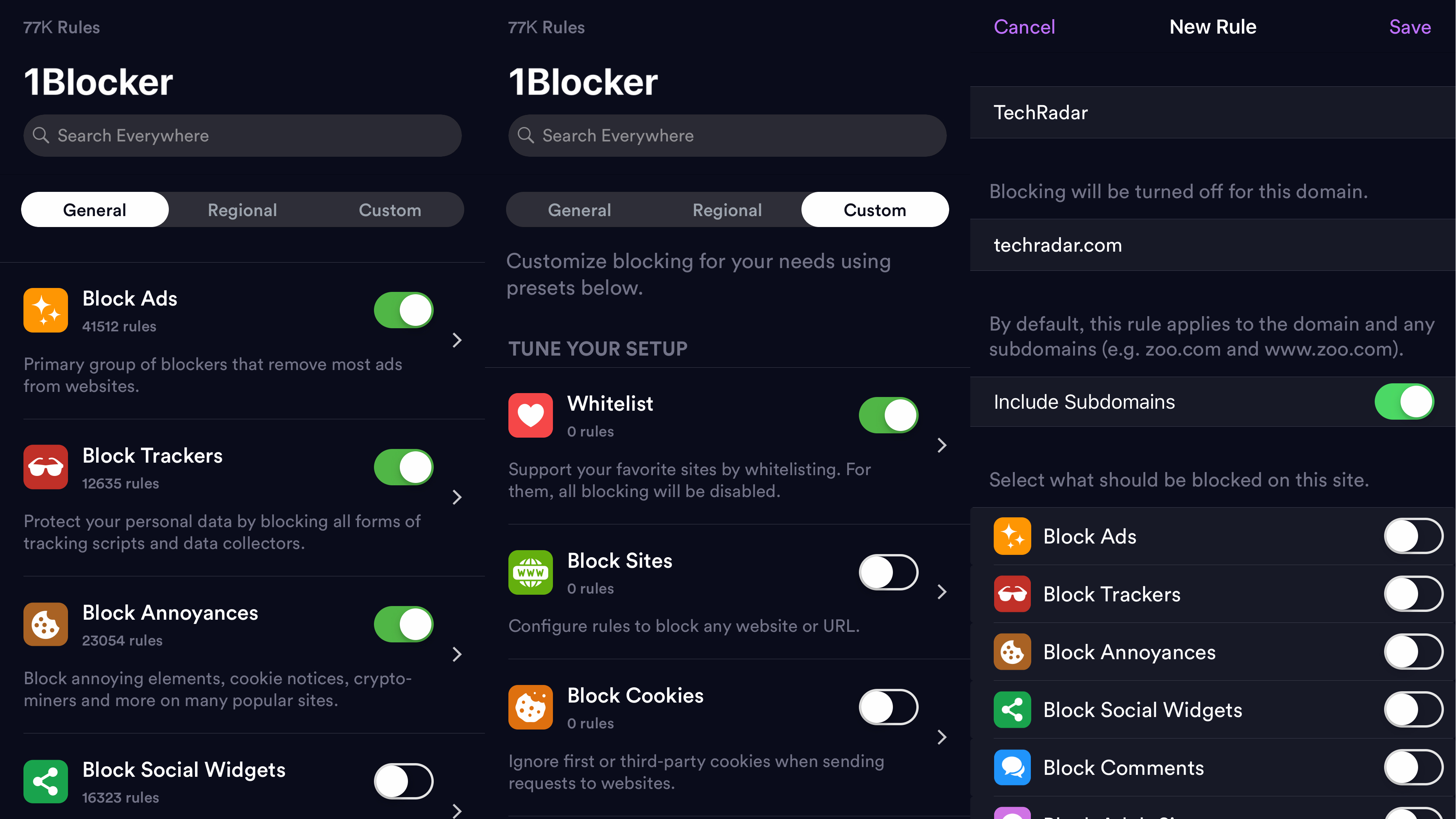
1Blocker X
- $4.99/£4.99/AU$7.99
1Blocker X is a robust, powerful, and user-friendly app for improving the web browsing experience on your phone – mostly by blocking things. Once 1Blocker X is approved in Settings > Safari > Content Blockers, it’s a cinch to block ads, trackers, and other annoyances, such as comments and social media widgets.
There’s nuance in the app’s settings, too. You can whitelist favorite sites, stating specifically what things (if any) should be blocked on them, and even write your own rules to hide specific CSS elements.
If that all sounds complex, don’t be concerned. At its core, 1Blocker X is simply a case of flicking some switches. Importantly, this paid indie app cares about privacy, too, and so you can be assured it’s doing nothing nefarious while making the internet on your iPhone a better and safer place.
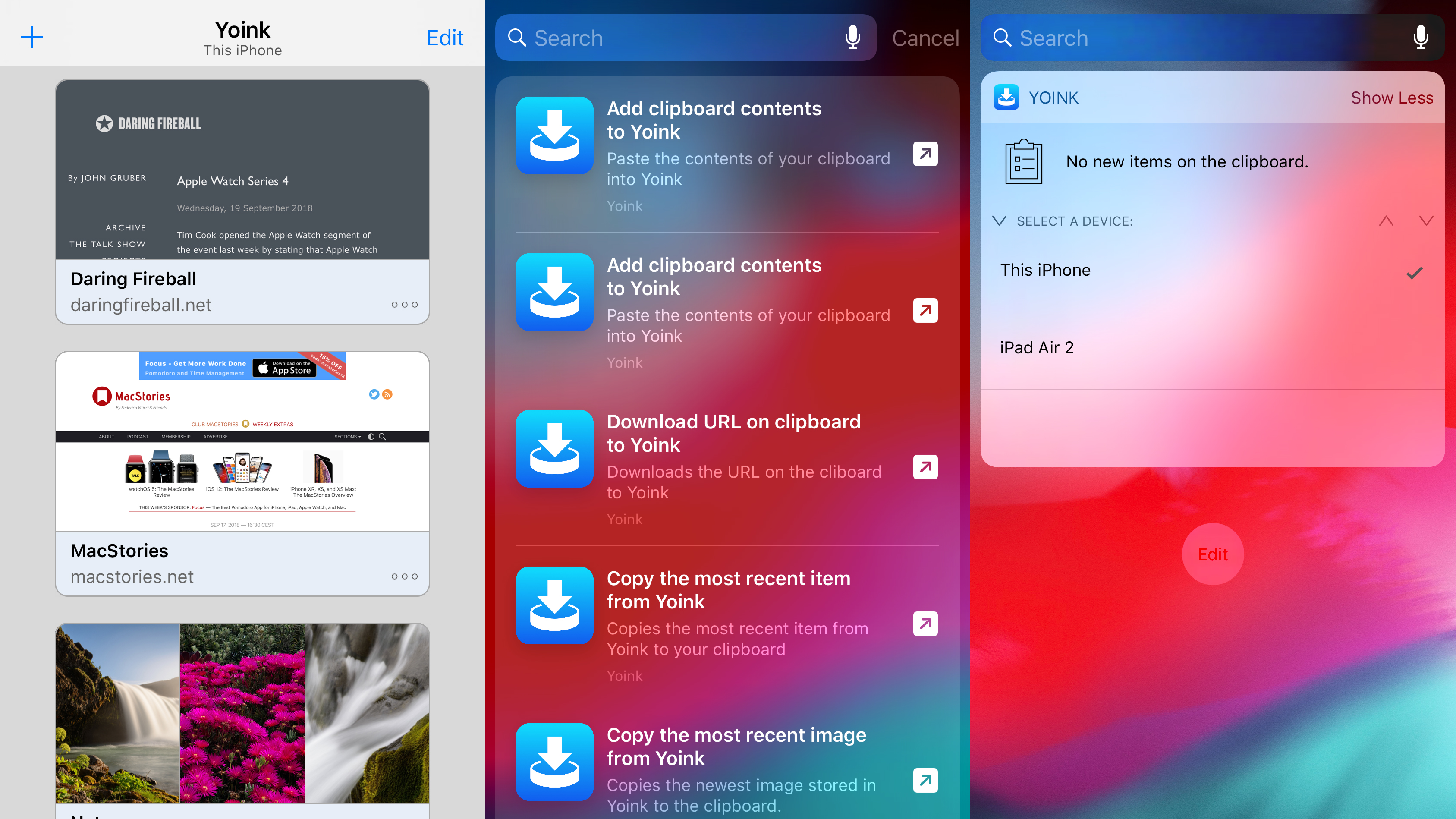
Yoink
- US$4.99/£4.99/AU$7.99
Yoink can be thought of as a super-charged version of the clipboard. It’s used to stash all kinds of things for later – text snippets, URLs, images, and even documents and emails. Items added to Yoink can be renamed, formed into groups called ‘stacks’, and previewed.
Files integration means you can get at everything you’ve stored in the app without actually going into Yoink itself. Siri Shortcuts support also means you can stash your clipboard’s contents without first activating the app.
Cross-device capabilities round out a great app – iCloud sync allows you to get at Yoink content saved on any of your devices. And so although this is probably not an app you’ll use every day, it’s a massive time-saver when you need to collate files from disparate sources on mobile.
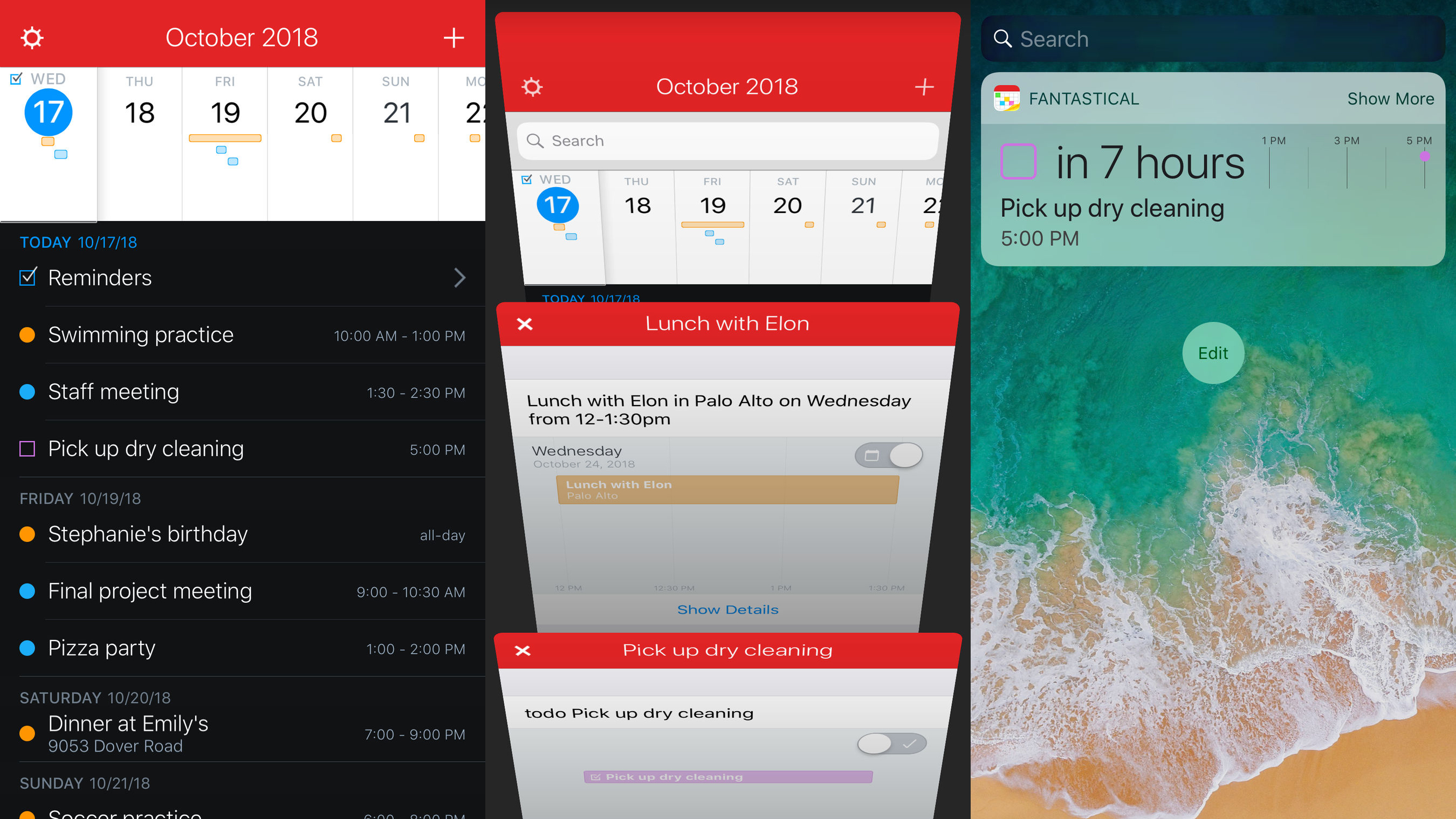
Fantastical 2
- $4.99/£4.99/AU$7.99
Fantastical 2 acts as a replacement for the iOS Calendar app. You might question the logic in buying something like this, but Fantastical 2 quickly pays for itself by making you more efficient.
This is apparent the second you check out the main view. Rather than having to laboriously tap each day to see its events, Fantastical 2 provides a scrollable feed, making it a cinch to see how your schedule looks into the future – and to quickly browse the past.
Reminders are integrated, too, and event input includes a powerful natural-language parser. As you tap in the likes of ‘TechRadar lunch at 3pm on Friday’, a live preview builds. And none of the data you add is locked in – Fantastical 2 works with your existing iCloud account, Google Calendar, or Exchange.
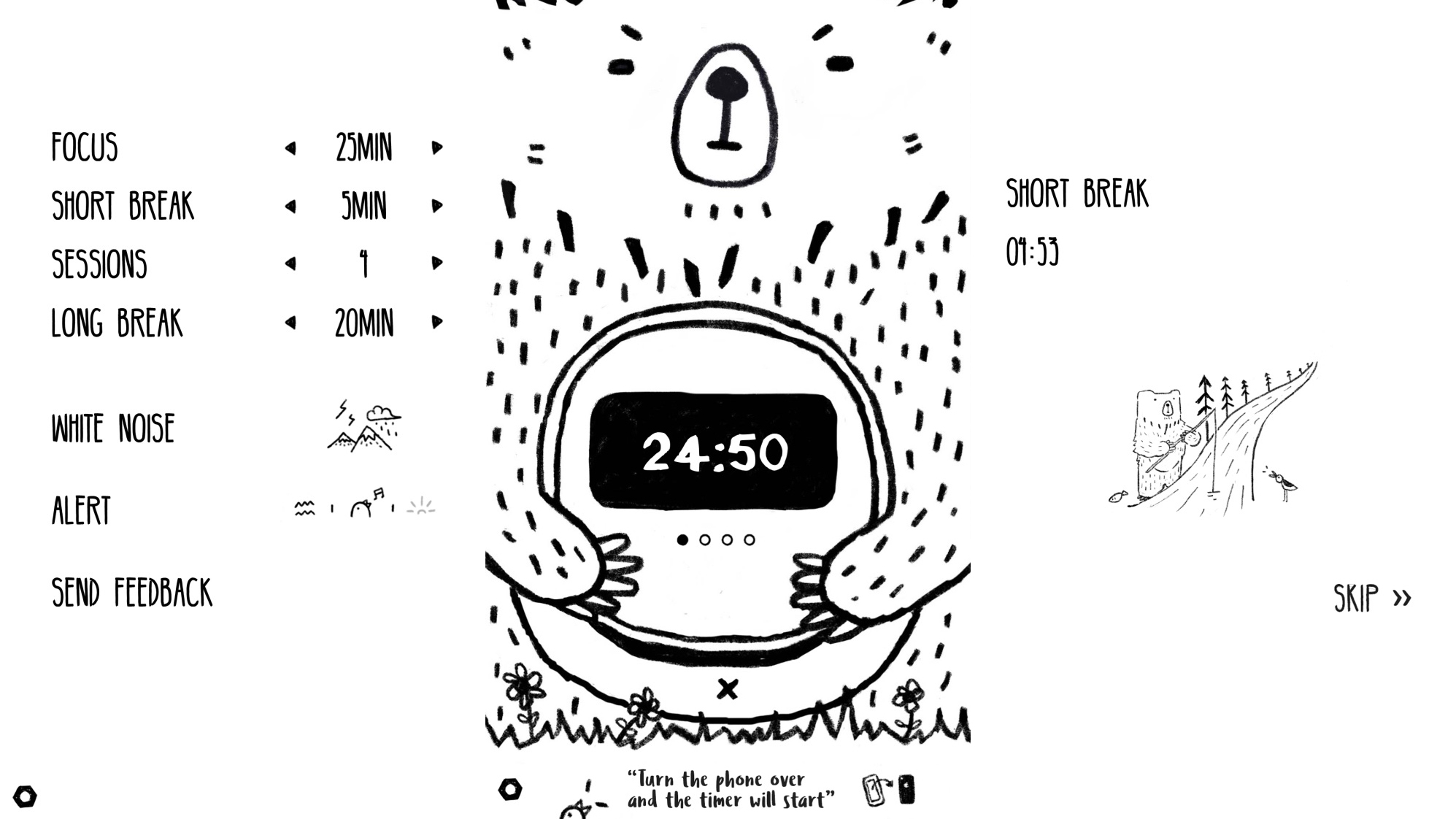
BFT - Bear Focus Timer
- $0.99/£0.99/AU$1.49
BFT - Bear Focus Timer is yet another app designed to make you use your iPhone less and concentrate more, but if you need a sense of focus and are easily distracted by your iPhone, it’s one of the best of its kind.
First, it features a friendly bear, and who doesn’t like bears? Secondly, the app’s Pomodoro-style timers are adjustable, so you can fine-tune lengths for work, short breaks, session counts, and long breaks (recommended after several work/short break sessions).
The app’s interface is the real star though, inviting you to turn your device upside-down to get the timer going. Pick up your phone and the timer stops, while the previously friendly bear scowls. It’s amusing and chastising in equal measure, making you smile, flip your phone back, and listen to the app’s helpful hubbub-drowning noise loops.
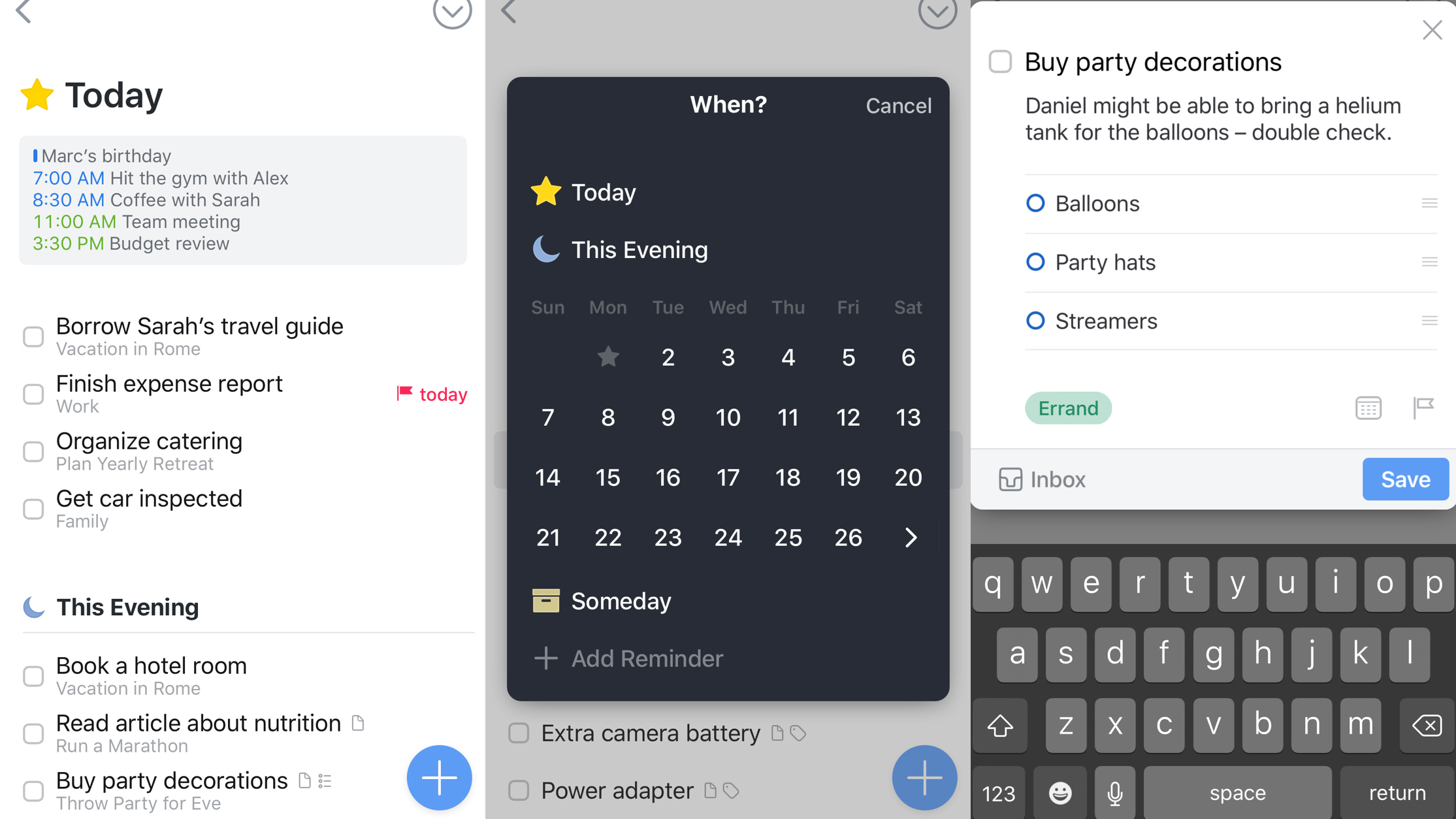
Things 3
- $9.99/£9.99/AU$14.99
Things 3 is a task manager that wants to help you get more done. The interface is sleek and the workflow is smart, helping you collect thoughts and plan your time efficiently.
The app’s core is to-dos, but it allows you to add context, such as the time, date or location that you plan to carry the task out. Things 3 then populates a Today view with the day’s tasks (cleverly grouping things you do at home under a This Evening heading), and puts later tasks in an Upcoming list.
The finer points of the app’s design and interactions make it a joy to use. Animations are subtle, but colors are bold. Clever details are dotted about, like the ability to position a new entry by dragging the to-do button to a list.
Things 3 isn’t cheap – especially if you also buy it on iPad and Mac – but the potential time savings make it good value.
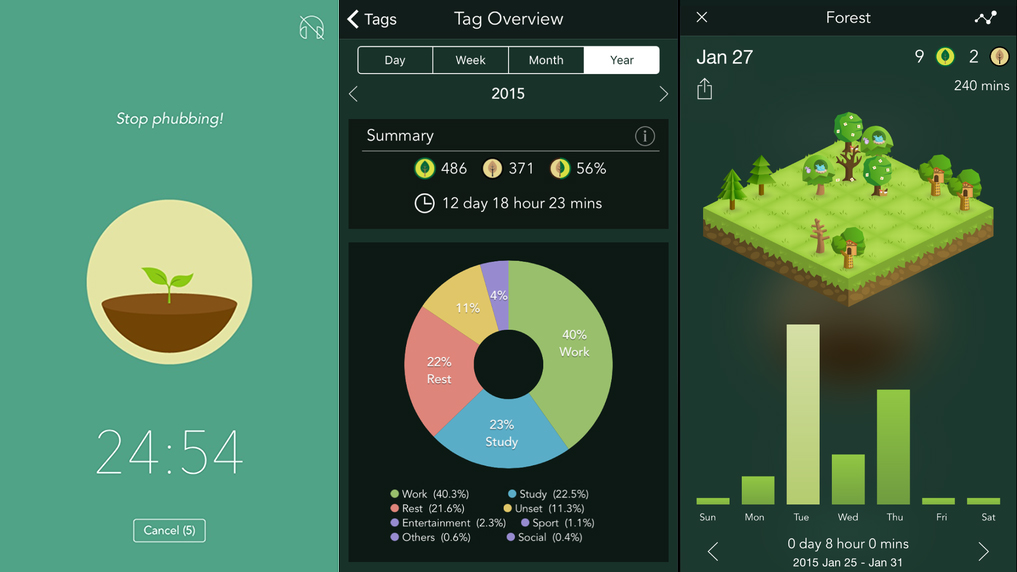
Forest
- $1.99/£1.99/AU$2.99
The idea behind Forest is to get you to leave your iPhone alone. It does this by having you plant a tiny sapling and set a timer. If you succeed in not using your iPhone until the timer’s done, you get to plant what’s now a little tree in a virtual forest. If you succumb to temptation, Forest mercilessly kills your tree, leaving a barren little twig.
Amusingly, if you try to trick the app by switching away, it’ll immediately send a terse reminder to have you switch right back. But despite this somewhat gruff element, Forest ranks among the best gamified focus aids.
Over time, it’s rewarding to see your forest grow, unlock new trees, and delve into detailed statistics. Also, using coins earned in-app, you can buy real trees for communities that need them. And all because you avoided Facebook for a few hours.
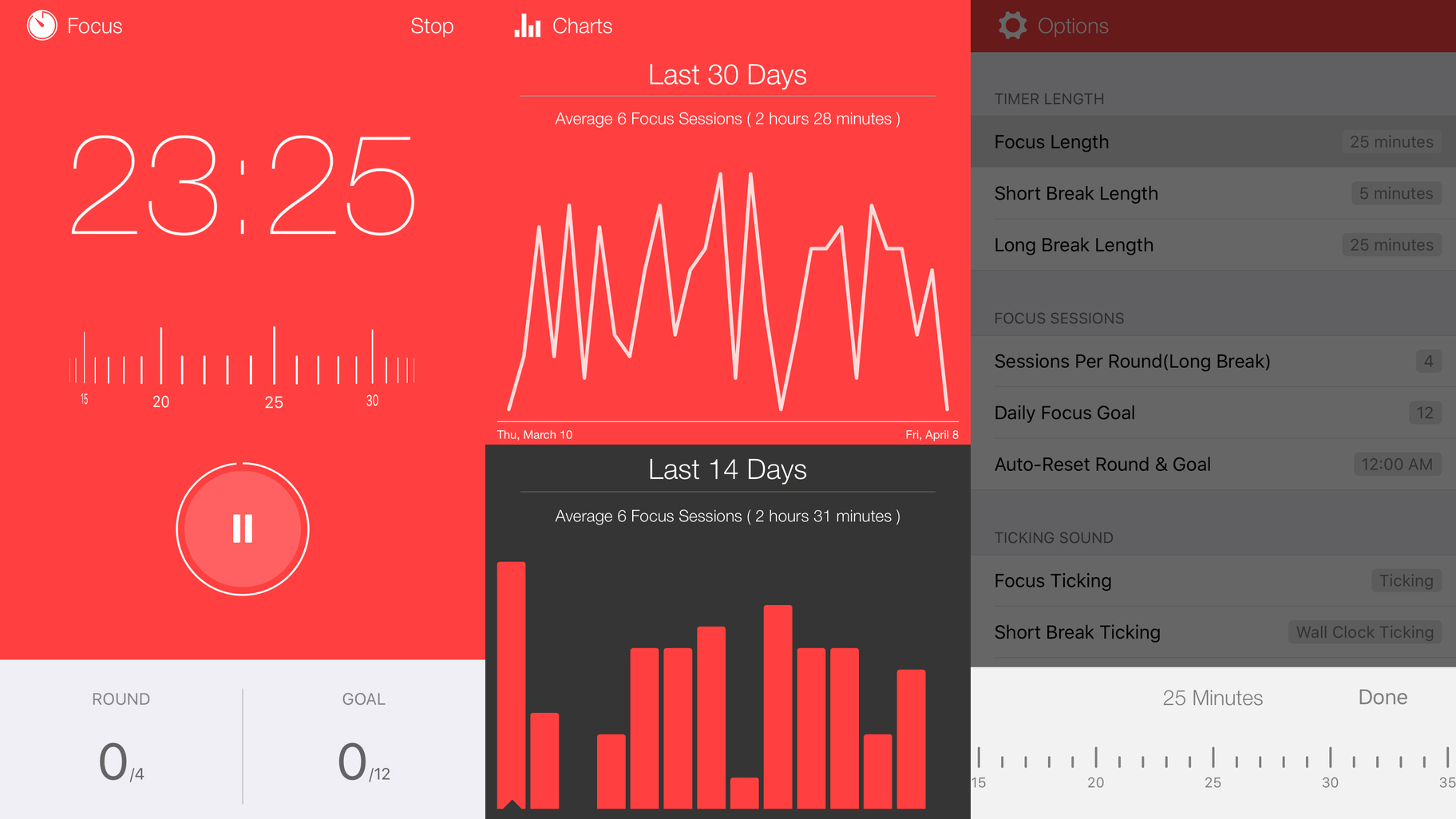
Focus Keeper
- $1.99/£1.99/AU$2.99
Focus and burnout are two commonplace issues for people in work. Too often, you can become distracted from tasks; but also there’s the risk of working long hours without a break, leading to fatigue. Focus Keeper aims to deal with both.
The timer is loosely based around the Pomodoro Technique (a time management method), and recommends splitting your time between 25-minute work sprints and five-minute breaks. After four sessions, you take a longer break of about half an hour.
The app is clutter-free, and easy to use. The timer combines a minimal iOS-like design aesthetic with hints of a real-world timer’s dial. You can delve into statistics, adjust work/break lengths, and choose alternate alarm and ‘ticking’ noises. Most importantly, however much this is all about psychology, it does work. Need convincing? Try the free version first.
The best travel and weather apps for iPhone
Our favorite iPhone apps for planning a holiday, currency conversion, weather forecasts and mapping.
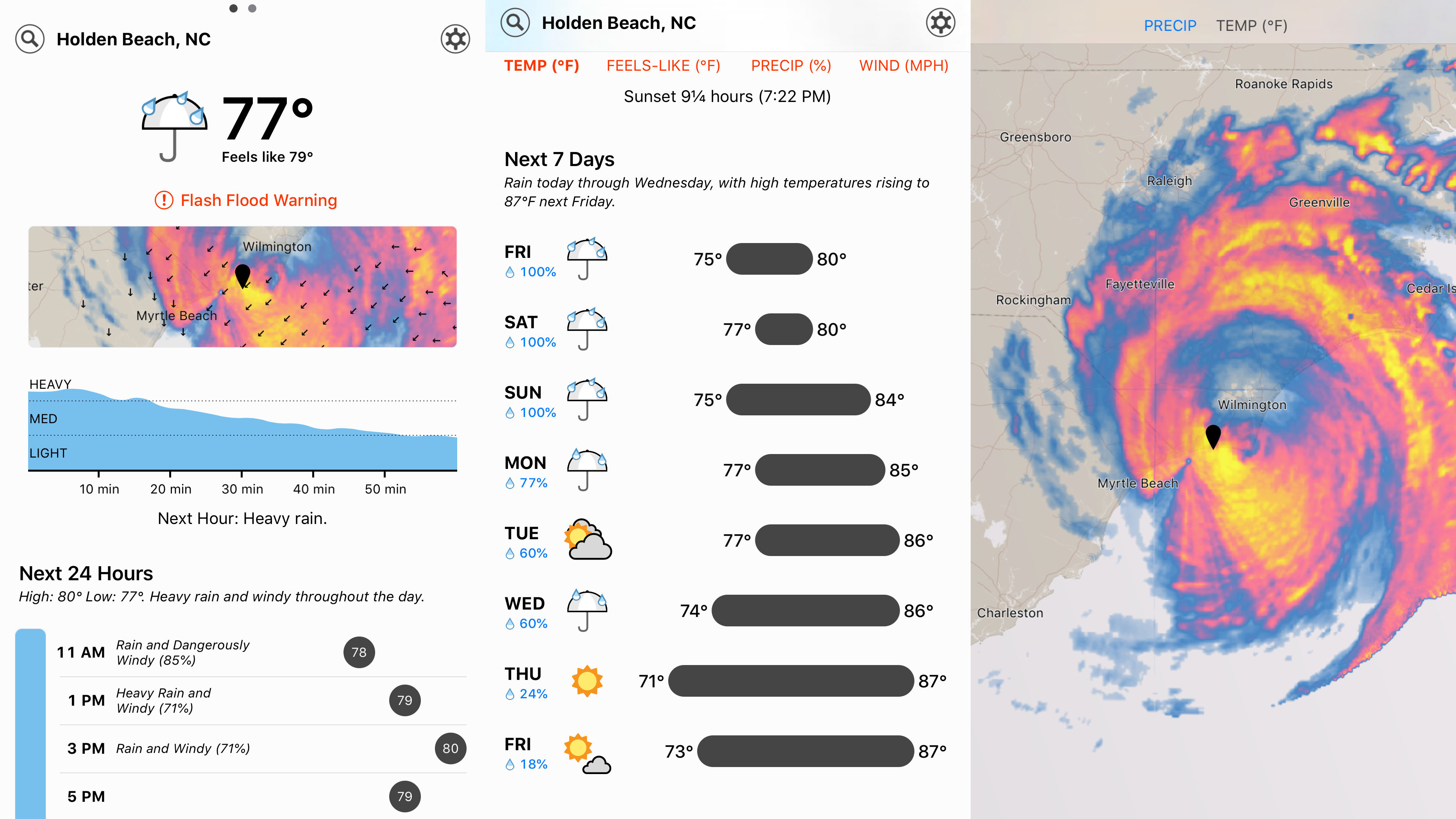
Dark Sky Weather
- US$3.99/£3.99
Dark Sky Weather started out primarily as a rainfall tracker, with luminous clouds billowing over a dark background map. Now, the app is much more conventional – but arguably massively more useful.
The main forecast page shows current conditions and a local map. Usefully, little arrows denote the direction a storm’s heading, so you can always spot that at a glance, rather than having to check the full animated rainfall view. Below that you get rainfall predictions for the hour, the daily forecast, and a weekly outlook. It’s all very sleek, efficient and usable.
The app’s accuracy may vary by location, but during testing in various countries we’ve found its rainfall predictions to be spot-on. It’s also a nicely flexible app regarding warnings – several notifications are built in, and you can add your own based on a range of weather conditions.
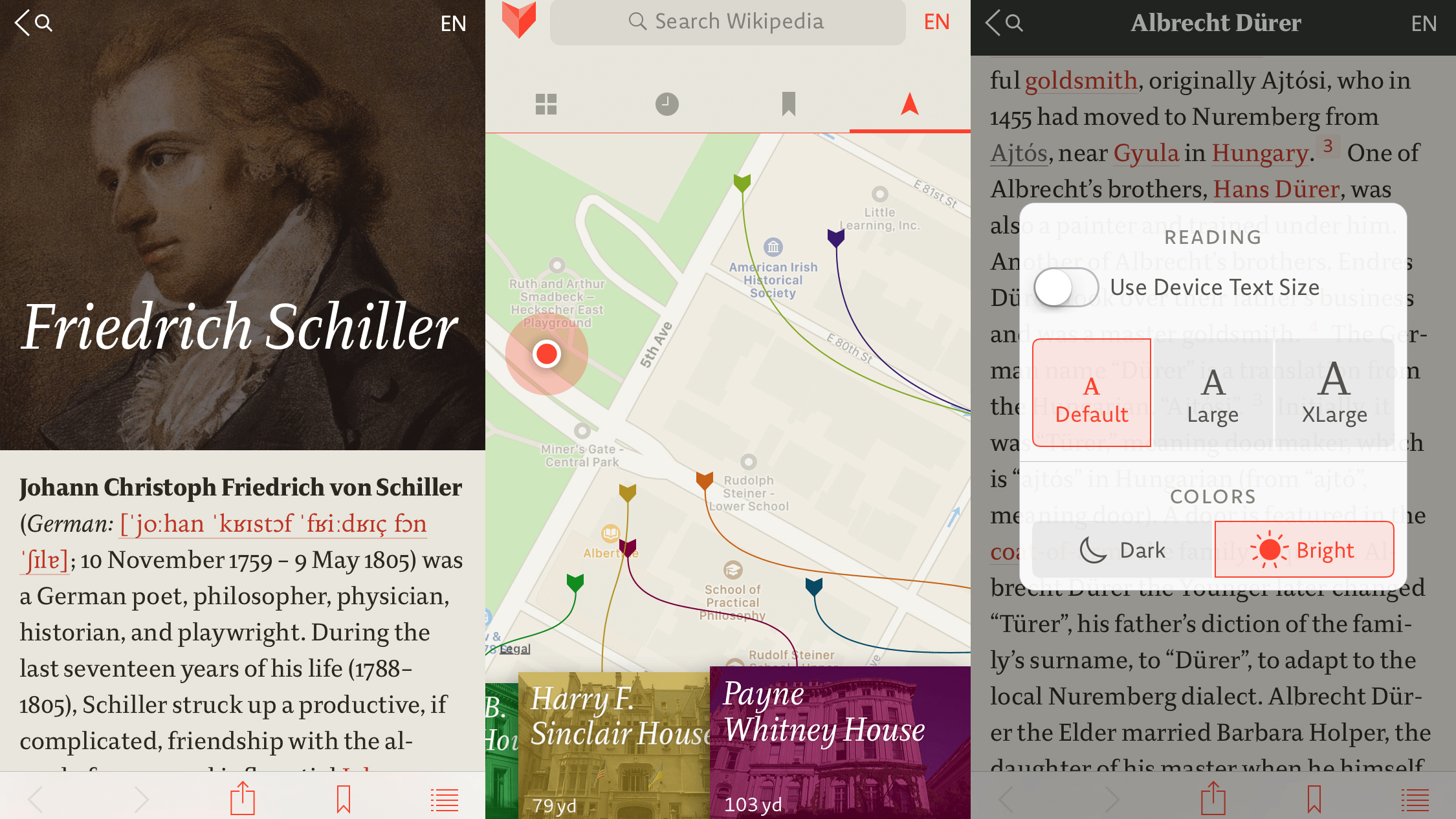
V for Wikipedia
- $5.99/£5.99/AU$9.99
V for Wikipedia is a Wikipedia reader. That in itself might sound like an odd recommendation for a premium app, but bear with us.
Although V can be used to search Wikipedia in the normal way, it starts off in its Nearby tab, flagging articles of interest in your vicinity. This looks great, tabs snaking their way from map locations to large thumbnails. It’s practical, too, for finding out more about the local area, without resorting to review-oriented web services.
This sense of polish extends to the article views. Typography and layout are first class, and a slide-in contents list is only a tap away. So while you might narrow your eyes at the prospect of paying for a Wikipedia reader, Viki will have said eyes busily and regularly reading the world’s most dynamic encyclopedia.
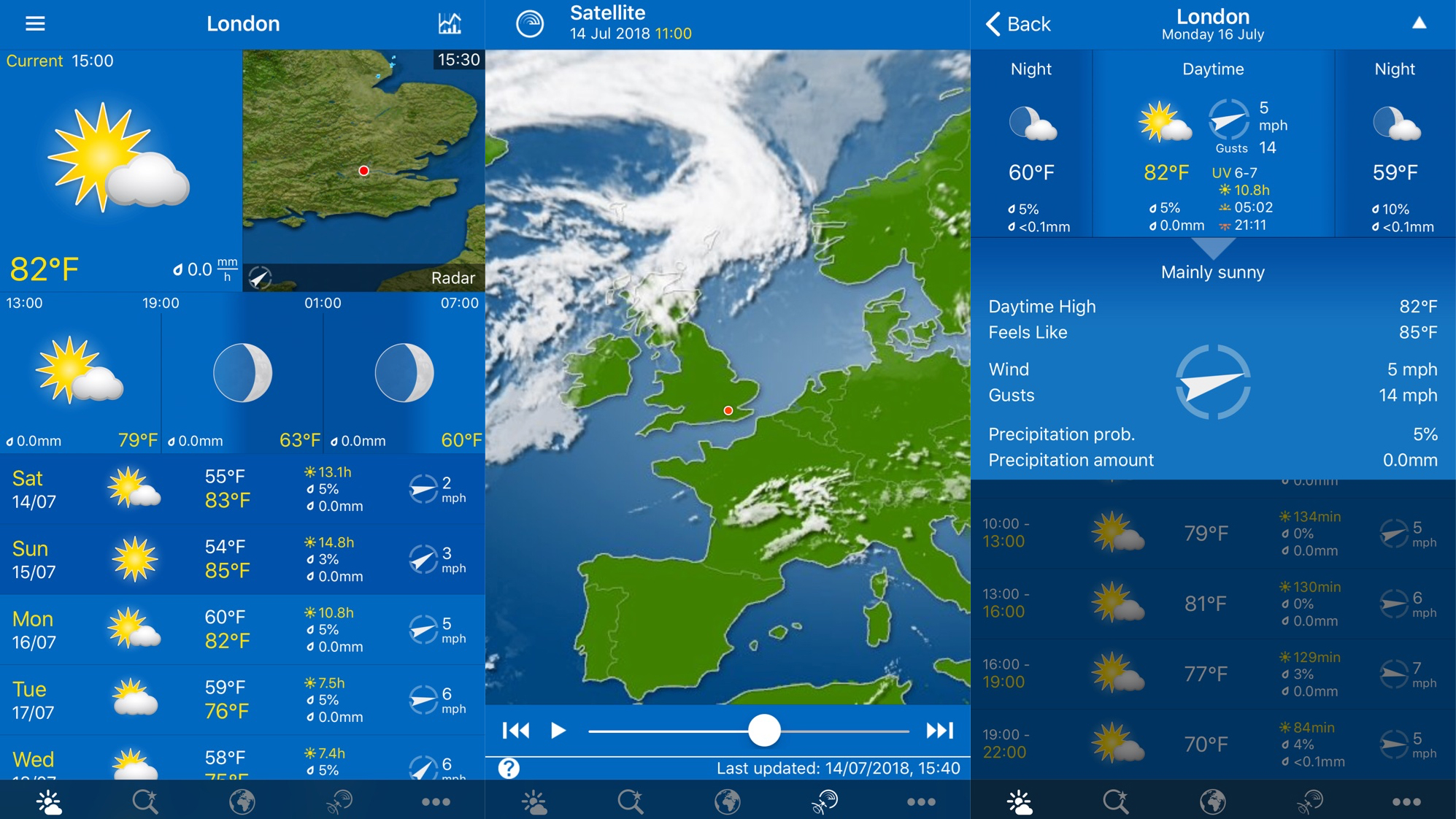
WeatherPro
- $0.99/79p/AU$0.99
WeatherPro is a weather app designed for people who favor information density over aesthetics. That’s not to say WeatherPro looks bad – its white-on-blue stylings are perfectly nice. But where it excels is in providing fast access to a wealth of weather data.
For any selected location, a single screen shows the current conditions, a local radar, upcoming predictions and then a forecast for the coming week. The latter packs temperatures, sun hours, precipitation forecasts and wind speeds into a tiny space.
In pretty much all cases, tapping on something lets you delve into even more information, and additional taps provide layered mapping and radar services. Accessing some layers requires an IAP subscription, but just the bare-bones WeatherPro is a great buy if you want at-a-glance forecasts packed with detail.
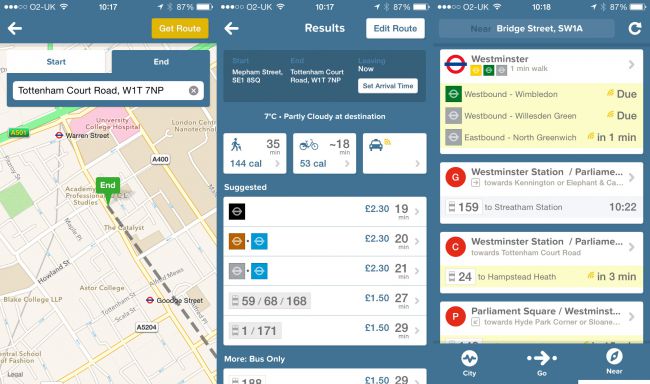
Citymapper
- Free
Citymapper is a navigation aid for finding your way around big cities. It doesn’t cover the entire globe, but is instead focused on a handful of major destinations, such as New York, Chicago, Tokyo, London, Paris and Sydney. Locations are periodically added by way of user votes.
If you live in or visit a supported city, Citymapper is superb for helping you find your way around more efficiently. The app quickly finds where you are and offers options – in real-time – of how to reach your intended target.
And small details really help it stand out, such as you being able to track the location of a bus you’re waiting for, alerts that blare when your stop’s coming up, and even recommendations of the best carriage to get on – and the fastest station exit to use.
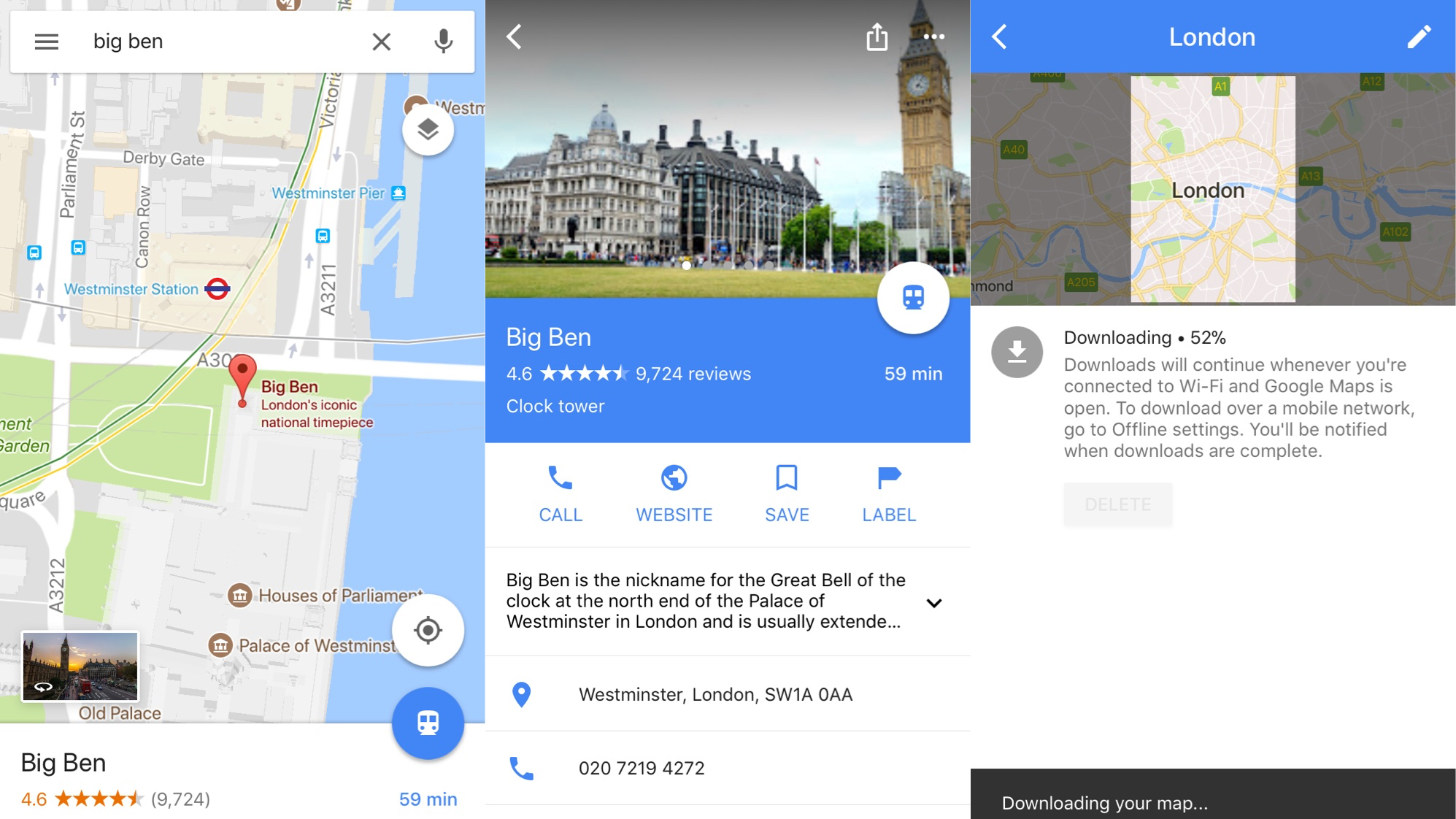
Google Maps
- Free
Google Maps is the best mapping app on iPhone.
It’s extremely good at locating places you want to visit, be that a distant town or a point of interest like a restaurant or store. When it comes to turn-by-turn driving directions, the voiceovers lack the nuance of Apple’s Maps, but the actual directions tend to be more helpful when it comes to dealing with incidents like congestion.
Google Maps is great for planning and non-car use, too. There are reviews and recommendations for places to go, public transport routing, and Street View – a navigable 3D street-level map for scoping out landmarks that proves handy when traveling somewhere or visiting a new place.
Importantly, you can also download chunks of map for offline use, turning Google Maps into a turn-by-turn navigator even when you lack a data connection.
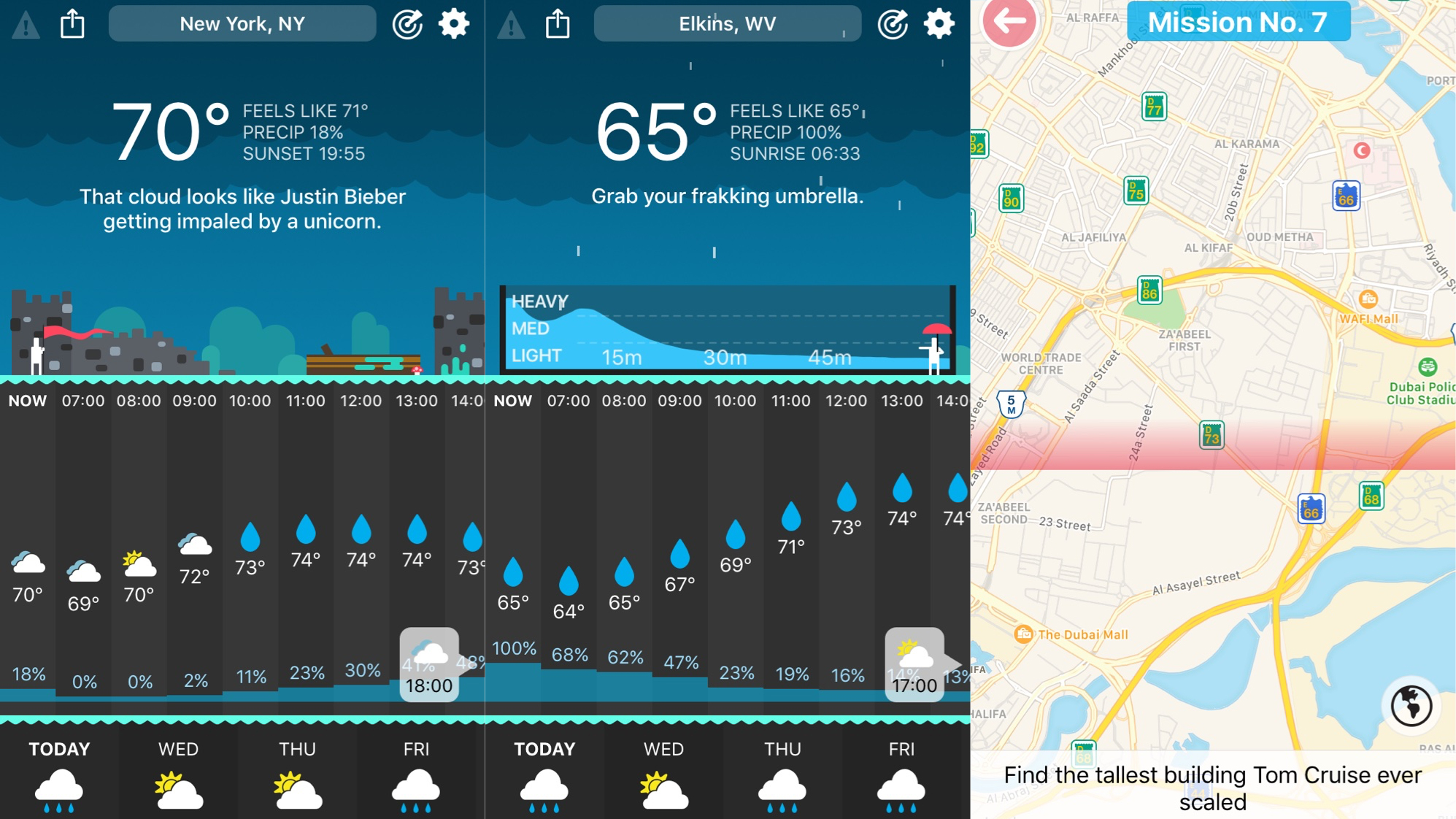
CARROT Weather
- $3.99/£3.99/AU$5.99
CARROT Weather rethinks weather apps, mostly in being helmed by an angry AI that seemingly won the ‘most likely to kill people in their sleep’ award over HAL. Sure, you get the usual rainfall warnings, hourly forecasts, and weekly outlooks, but they’re all delivered with a layer of snark.
Venture into the excellent Today view widget and CARROT will ‘LOL’ if it’s going to rain. If it’s sunny, she’ll hope you get tan lines, call you a meatbag, and suggest you make the most of the nice weather – “or else”.
It’s uniquely entertaining in its App Store category, but also usable, colorful, and configurable. The maps are extremely variable by country, and some layers require IAP – as do a number of useful settings. But otherwise this is one of the best – and certainly the most fun – weather apps for iPhone.
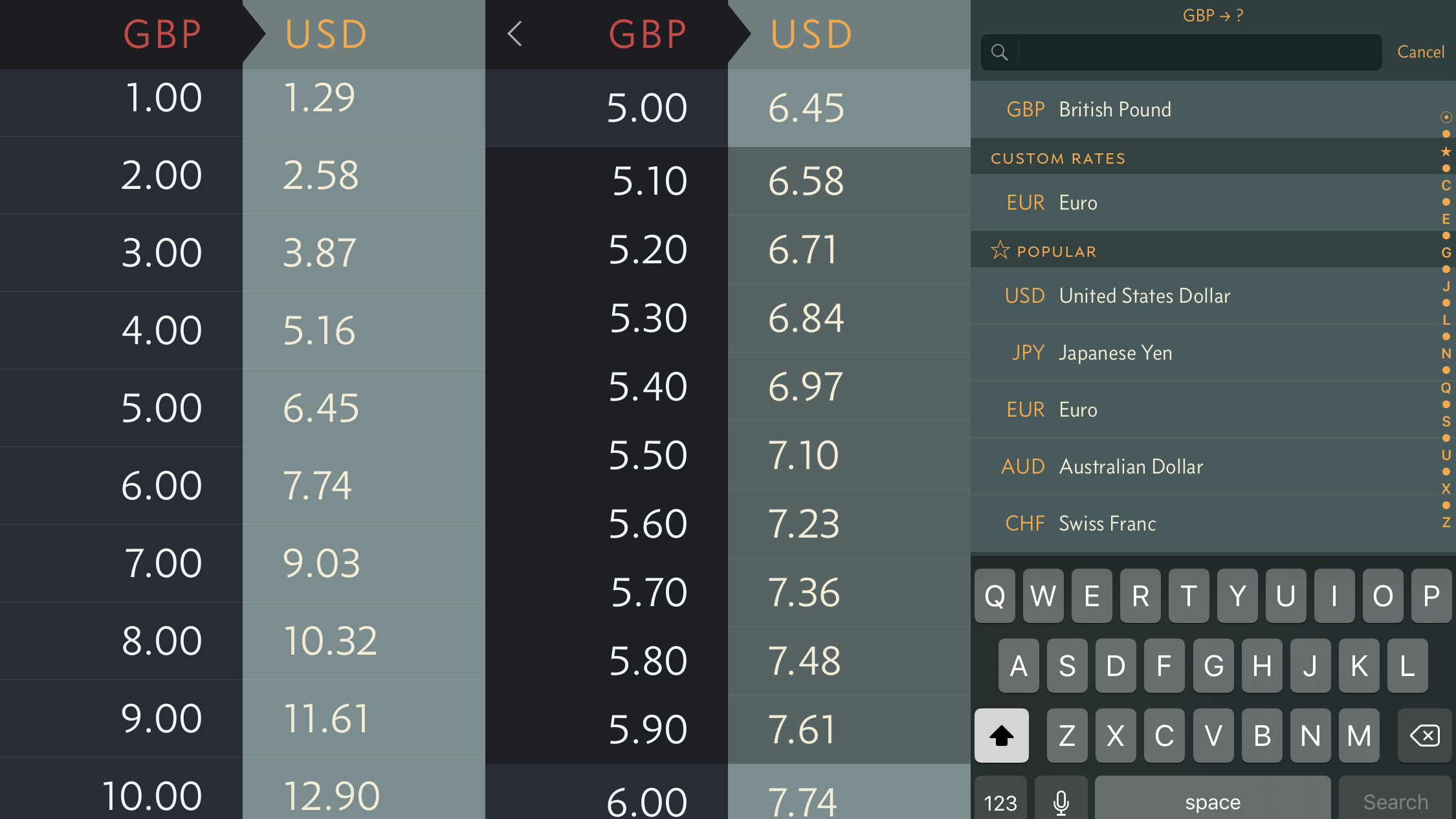
Elk
- $3.99/£3.99/AU$5.99
We’ve lost count of how many currency converters exist on the App Store, but it’s vanishingly rare to see anyone try something properly different.
Elk bucks the trend, with a unique interface and approach that might not appeal to traders, but feels very much like currency conversion for the rest of us.
On firing up the app, you select your two currencies and it offers a list of current rate conversions. For USD to EUR, for example, you get a list of the rates for one through ten dollars. Swiping from the right increases these values by ten. To access rates between two values, tap an entry.
Smartly, you can also input a fixed rate, for example to track your spending on a holiday when you’ve already got your cash. Most of the features are behind a paywall, but a 14-day trial lets you try them for free.
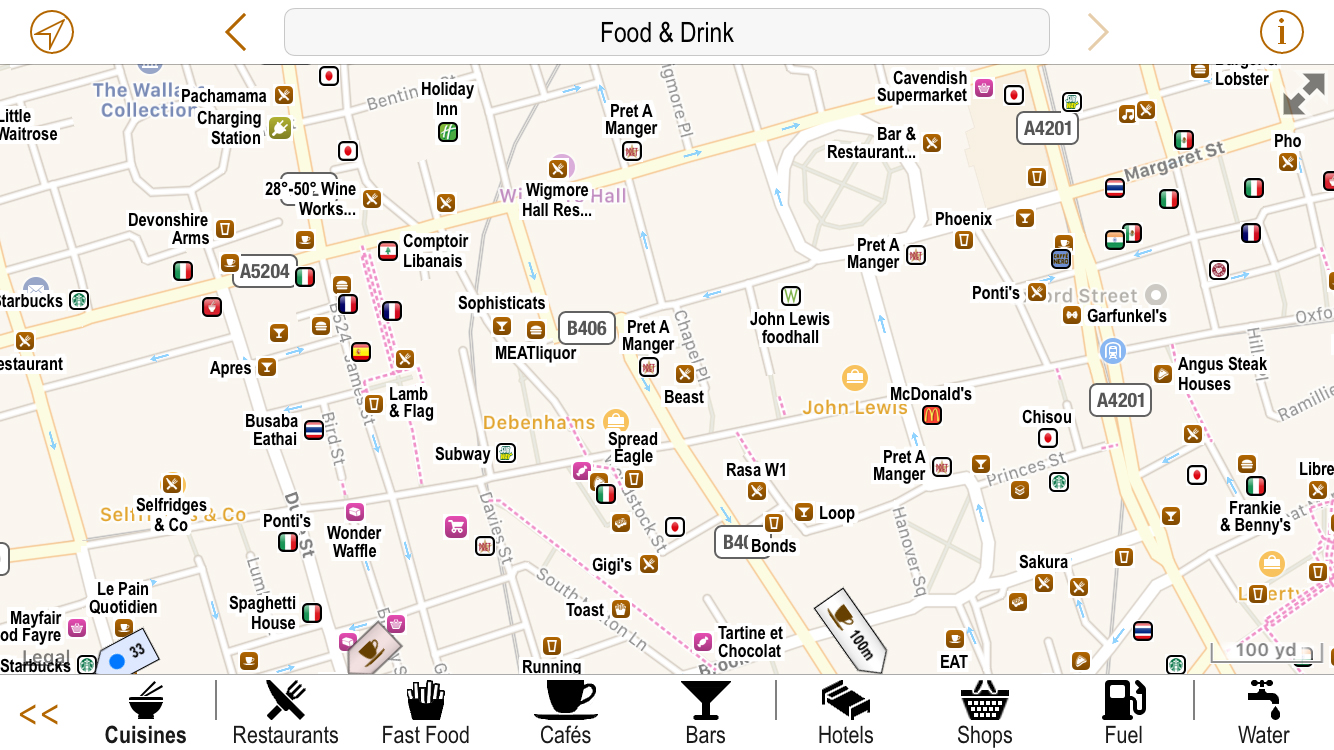
Poison Maps
- $1.99/£1.99/AU$2.99
This one’s all about ‘points of interest’, hence the name – Poison Maps (‘POIs on maps’). Essentially, it’s a wealth of information from OpenStreetMap shoved into an app and twinned with an interface that makes it a cinch to drill down into categories.
So, mooching about London and fancy a bite to eat? Tap on the food and drink icon. Something quick? Tap Fast Food. Pizza? Sounds good.
Each tap filters the POIs and navigation buttons displayed, and arrows point at nearby locations when you’re zoomed in. Everything’s extremely responsive, and the maps and icons are clear and easy to read. Other nice bits include a full-screen mode, a search function, and public transport overlays.
The only snag is Poison Maps is a gargantuan install – well over 1GB. If that’s a bit rich, smaller regional alternatives by the same developer exist, each being a free download with a small IAP to unlock all categories.
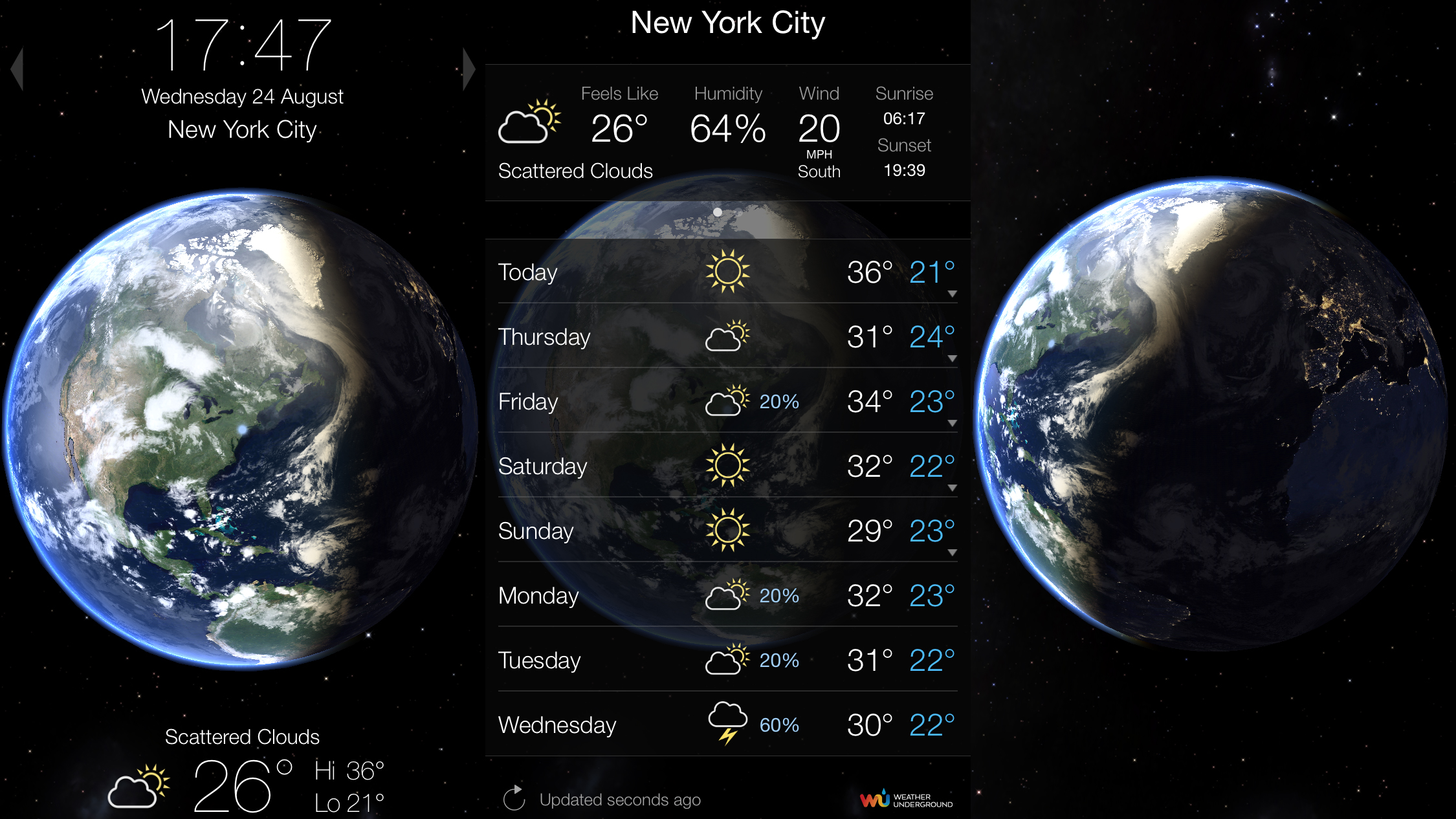
Living Earth
- $3.99/£3.99/AU$5.99
From a functionality standpoint, Living Earth is a combination clock/weather app. You define a bunch of cities to track, and switch between them to see current time, weather conditions, and when the sun's going to make an appearance and vanish for the day.
Tapping the forecast quickly loads an outlook for the entire week; prod the clock and you'll get the weather and time in each of your defined locations.
What sets Living Earth apart, though, is the globe at the screen's centre. This provides a live view of the planet's weather - clouds, by default, which can be swapped for temperature, wind and humidity.
We like the clouds most, along with the way the virtual planet can be slowly spun with the slightest swipe. It'll then lazily rotate between zones in daylight and those lit up after night has fallen.
0 comments:
Post a Comment